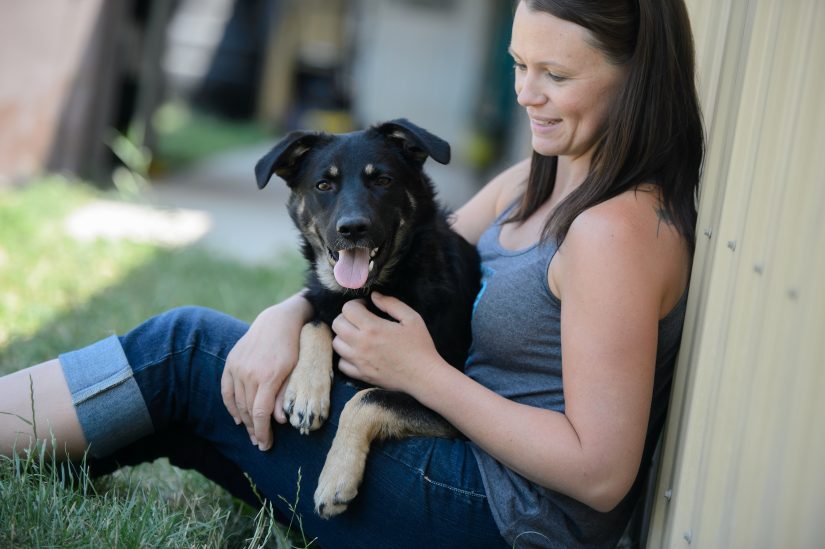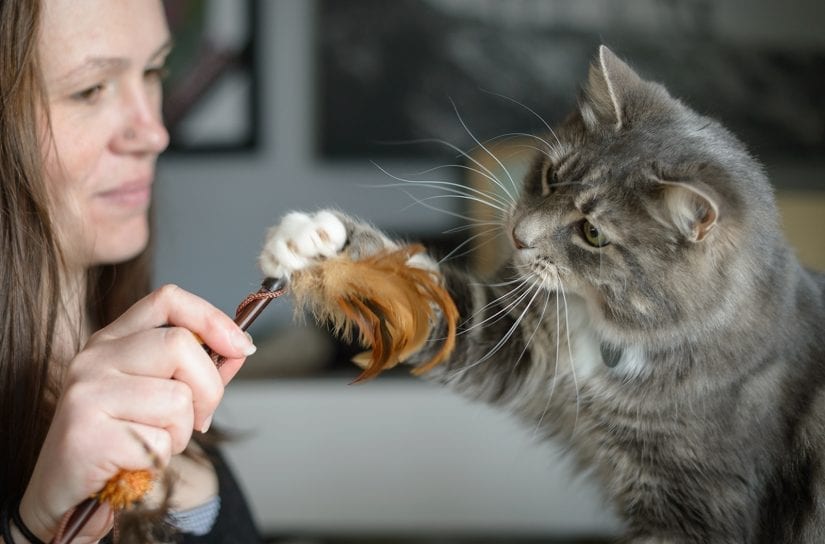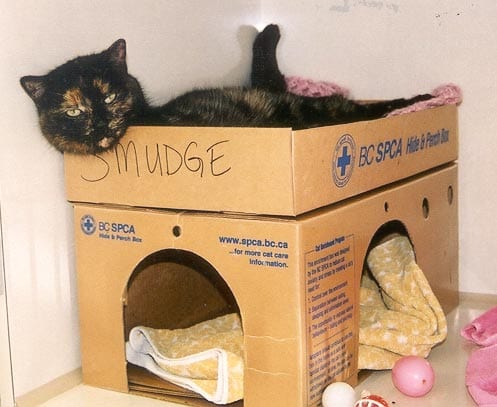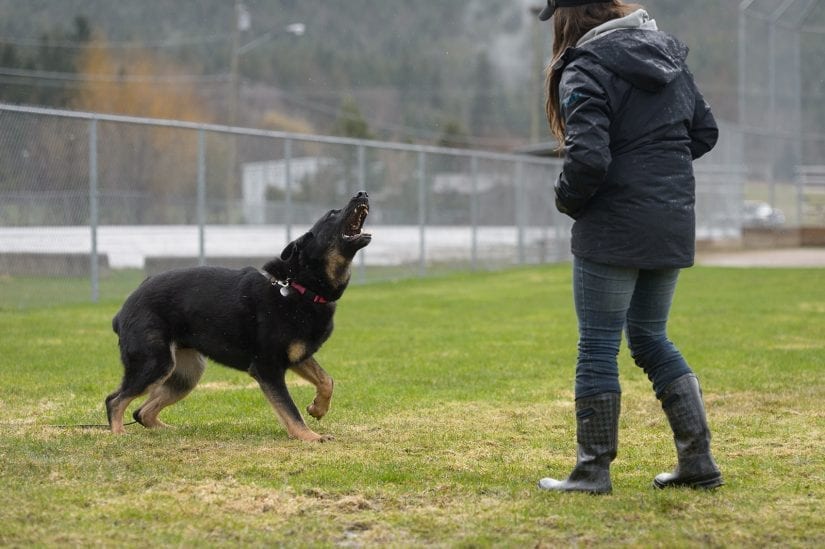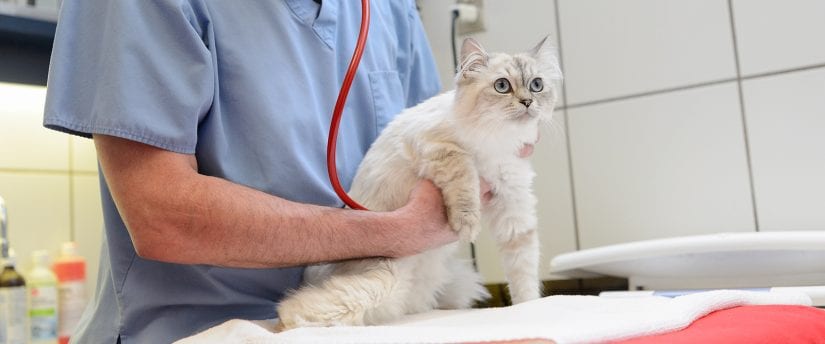Pet care & behaviour
Bringing a dog into your home, especially one from a hoarding situation or with little socialization, is an incredibly rewarding experience, but it can come with its own unique challenges. Dogs from these situations can take more time and patience. They may need to learn how to live in the house, get used to new people and learn to trust and feel safe in their new surroundings.
These tips will help you understand what to expect, how to support your new dog through this transition, and how to set them up for success in your home.
What to Expect
Indoors
These dogs have likely lived outdoors their entire life or most of their life so they will need to learn how to live in a house. For example, they may not know where to go to the bathroom, so house training is essential. The good news is they may prefer to relieve themselves on dirt or grass because of what they were used to, which can make house training easier. Keep a regular schedule for bathroom breaks and give a treat every time you take your dog out will help them learn quickly where to go. Managing your dog in one area while they work on house training will help avoid them going to the bathroom in different areas in the house.
Socialization
These dogs may not be used to meeting new people or other animals. Introductions should be slow, done with patience and empathy. Give them time to adjust to new faces and environments. Giving them a treat when they meet someone new or when something scary happens will help them learn people, places and situations means something good is going to happen. Use of baby gates and leashes to keep everyone safe is essential.
Furniture
Some of these dogs liked to jump on dog houses in their previous environment, this would have been fun and a way for them to see things. In a house they may not understand the couch or kitchen table is for humans. Because they are not familiar with furniture, they may use it like a doghouse and jump up to see things.
With patience, and training, they can learn not to jump on things they shouldn’t. If they get up on your furniture, lure them down with a treat, ask them to sit and give them a treat. They’ll learn quickly sitting gets them a treat and on the furniture gets them nothing. Teaching them sit on a mat or bed will also help show them where to sit and lie down.
Fear and Nervousness
Many unsocialized dogs and dogs from hoarding situations are nervous around new things like unfamiliar people, cars, stairs, or even the sound of a vacuum cleaner. This is because they haven’t had the socialization we recommend for all puppies (3 – 14 weeks) where they learn about different sounds, people, objects and situations. Let these dogs explore at their own pace, go slow, while using positive reinforcement to build trust and help them feel safe. Use really tasty treats!
Nervous about being touched
Handling, such as grooming or putting on a collar or harness, may be unfamiliar and scary for them. Use treats and go slowly when touching them to help build trust and so they learn touching is safe, fun and rewarding. Start first with getting them comfortable with being handled in those areas before using walking and grooming equipment.
Learning to be alone
Undersocialized dogs and dogs from hoarding situations may never have lived alone or without another dog and may experience separation anxiety. To help a new dog start by leaving them alone for a few minutes at a time and gradually increase the alone time.
Give them toys or puzzles to keep them occupied while you’re away and ensure they have gone to the washroom prior to leaving. Never use a crate for a dog that is distressed by being alone. Crating protects your property but doesn’t change your dog’s emotional distress. Contact an AnimalKind trainer to support you and your new dog if they are distressed by being alone.
How to Help Your Dog Settle In
Create a safe space
Set up a quiet area in your home where your dog can go if they feel overwhelmed. A crate or a cozy corner with a soft bed can help them feel secure, it can be the no touch or no bother area for visitors, kids, etc. This will help your dog feel safe.
House training
- Take your dog outside frequently, and stay with them while they go
- Pick a quiet regular spot for them to go (so it becomes familiar),
- Take treats with you every time they go out,
- Praise and give treat for going in spot,
- Do this work consistently for 3 weeks,
- Don’t leave them unsupervised when you’re not home.House training an adult dog is like training a puppy. Be patient and consistent. Don’t punish for accidents in the house, reward (treat they love) for going outside – make it worth it for them!
Leash training
Start leash training with short, easy walks in a quiet area, try and pick low traffic areas and slower times of the day so they don’t get overwhelmed. Remember they are getting used to the new area, sounds, people, etc. Use high value treats!
Help them learn the area is safe by giving treats when walking, toss the treats to encourage them to move forward. Your first walks may be short and only to the end of the block, go slow and they’ll progress.
A harness is more comfortable than a collar, for fearful dogs it’s best to have both a collar and harness. Connect them for safety if you think your dog will try to get out of the collar and/or harness.
Introducing People and Pets
Let your dog meet new people and pets slowly. Don’t force interactions. Use the 3 second rule – keep the ‘hello’ to 3 seconds and then move on. They may not be ready for a dog park at this stage so wait until they’re comfortable with the neighbourhood, your routine, and you learn more about them.
Give them time to get comfortable on their own terms and it’s ok if they don’t want dog friends. Use high value treats and go slow!
Bonding
Always use treats, praise, and gentle affection to reinforce the behaviour you want. Never use harsh physical or verbal corrections, this will affect trust and the bond you are trying to build with your dog. You love them, and they’re learning to trust and love you. Positive reinforcement, patience, and empathy helps build positive associations and trust.
Provide Mental and Physical Stimulation
Interactive toys, puzzle feeders, and safe walks can help your dog reduce stress and stay mentally engaged. Giving them a job to do, such as scent work or simple training exercises, can also help them adjust. Try a few different activities to see what your dog prefers.
Alone time
Teach them it’s ok to be alone by providing a safe and cozy environment, fun toys, and some tasty treats to keep them busy when you leave.
Anxiety-Reducing Medications
Some dogs may be on anxiety-reducing medications to help them adapt to the changes they experience coming into an animal centre and for the transition to their new home. These medications help them feel more relaxed so they can learn and adjust. If your dog is on anxiety-reducing medication, we will provide you with guidance and behaviour modification plans to help with their ongoing progress. For more information on anxiety-reducing medication please speak to your veterinarian.
Behaviour Modification
Helping dogs adjust through behaviour modification is important, especially for those coming from hoarding situations or where they lived in isolation with no socialization. Behaviour modification involves using techniques based on learning principles, like positive reinforcement, desensitization, and counterconditioning, to change a dog’s behaviour. The focus is on encouraging desired behaviours and gradually reducing unwanted ones. While some dogs may settle in quickly, others might need extra help to feel comfortable with new places and people.
By using these techniques, like positive reinforcement—which means rewarding wanted behaviour—we can help these dogs feel safe, build trust, and learn better ways to respond to the world around them. This process is done slowly, in small steps, so a dog doesn’t feel overwhelmed.
With anxiety-reducing medications prescribed by a veterinarian, along with patience, kindness, and help from AnimalKind trainers, these dogs can learn to trust and thrive in their new, loving home.
Additional Resources:
To help some dogs adapt to the changes in their environment or new environments, our veterinarians sometimes prescribe anxiety-reducing medications. These medications are not the only solution, but they can reduce stress and anxiety, which will help a dog relax, learn new behaviours, adapt to change, and feel more comfortable.
Types of medications
- Short-acting medications (e.g., trazodone, gabapentin) are used to help reduce anxiety in specific situations, such as meeting new people or adjusting to their new home. These typically start working within 1-2 hours.
- Long-acting medications (e.g., fluoxetine or clomipramine) are used for dogs who need ongoing support as they settle into their new life. These medications can take several weeks to show their full effects.
Working with your veterinarian
It’s important to speak to your veterinarian to understand how these medications work and why they are being used for a dog. Your vet can explain:
- How long your dog might need the medication.
- Potential side effects to watch for.
- Any follow-up care, and how to monitor your dog’s progress.
- Behaviour modification and working with a trainer.
Behaviour modification
Medications help lower your dog’s anxiety, which allows them to relax, so they can learn, build trust and adapt to new situations and people. Medications work best when combined with behaviour modification training.
Our animal centres provide behaviour and welfare plans for dogs to help you manage and train them, while learning more about them. The plans in combination with anxiety-reducing medications help dogs adjust, build trust, and change their behaviour.
The BC SPCA recommends working closely with an AnimalKind trainer and your veterinarian to continue this training at home.
Cats have long been relied on to protect our homes and our pantries from rodents. In fact, for many folks, their role as mousers is a given — it’s just “what cats do.”
Looking at the science, however, the picture that emerges is not quite so clear. There are a number of things to consider when it comes to using cats for rodent control.
Cats may be not be hunting rodents
As kittens, cats learn hunting skills from their mother and, as they grow up, they tend to choose the same prey she did. This means that cats often specialize in certain types of prey, which could include a preference for birds over mice and rats, for example. Moreover, being more skillful in catching one type of prey doesn’t necessarily translate into better hunting skills overall.
At the end of the day, cats display remarkable individuality in how and what they hunt.

Cats may avoid hunting rats
Every time they hunt, cats are taking a risk. After all, a bite from a rodent or a peck from a bird could lead to infection or even permanent injury. Furthermore, the larger the prey, the less likely cats are able to make a kill. Because rats are pretty sizeable, cats can actually be fearful of them and reluctant to prey on them.
Rats may learn to avoid cats
Research suggests that rats and cats may actually be able to share the same space. From a human perspective, it can seem like there are fewer rats around when in fact they’re simply shifting their movements in response to a cat’s presence.
Cats are not very humane predators
Cats are known to ‘play’ with their food. This is thought to be related to their fear of being injured by their prey, and is likely terrifying to the animal being toyed with.
Of course, not all predation attempts end in a kill. Many animals escape with injuries, some of which are severe enough to cause death later on. In a study of one wildlife rehabilitation centre, cats were found to be the second greatest cause of bird mortality and fourth greatest cause of mammal mortality.
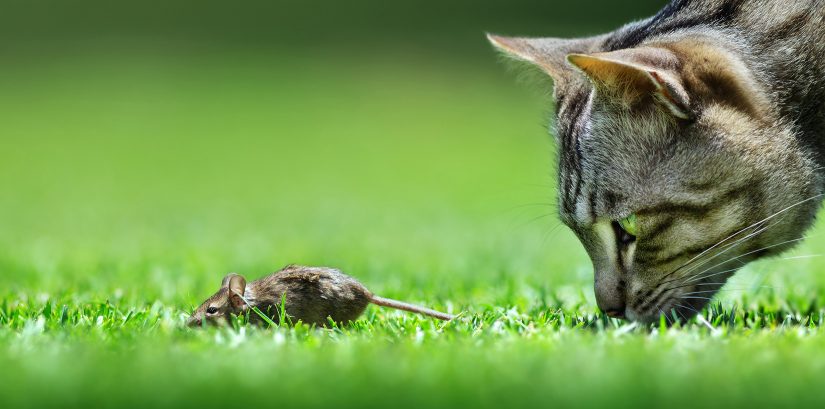
Cats who hunt rodents may be poisoned
Rodenticides, commonly used for rodent control, cause a slow and painful death. Cats can easily suffer the effects of poison from eating poisoned mice or rats.
Secondary poisoning is not the only risk that outdoor cats face. While it’s true that cats are predators, they’re also a prey species. Being outdoors renders them vulnerable to attacks from wild animals such as coyotes. Other risks they face outdoors include vehicles, fights with other cats, diseases and parasites, and frostbite.
Humane rodent control
Ultimately, humans are the ones responsible for drawing mice and rats in by providing easy-to-access sources of shelter and food. Taking steps to rodent-proof our homes means that we won’t need to rely as much on cats or other lethal methods to keep them at bay.
Find out more about humane rodent control.
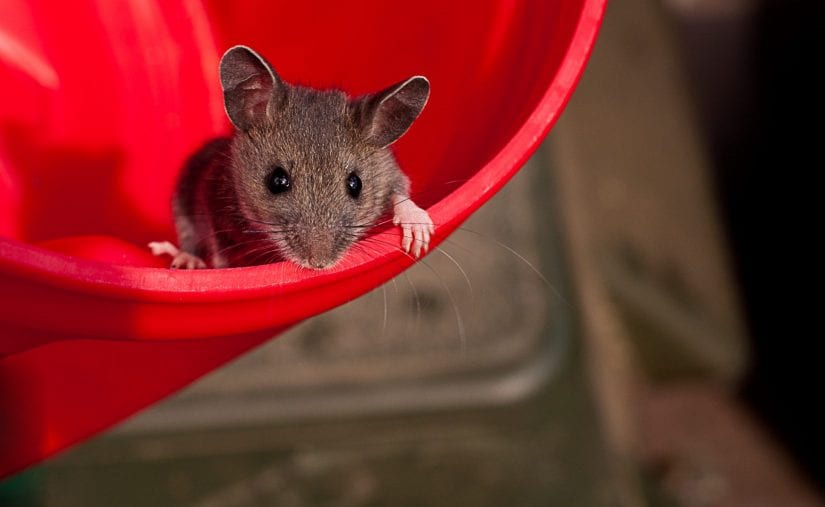
Hunting comes naturally to cats, of course, because they’re predators. When roaming outdoors, they prey upon small wildlife like birds, mammals, reptiles and amphibians.
Some cats are much keener hunters than others. Research from Switzerland, for instance, found that just 16 per cent of the cats studied were responsible for nearly 75 per cent of the predation events during the study period.
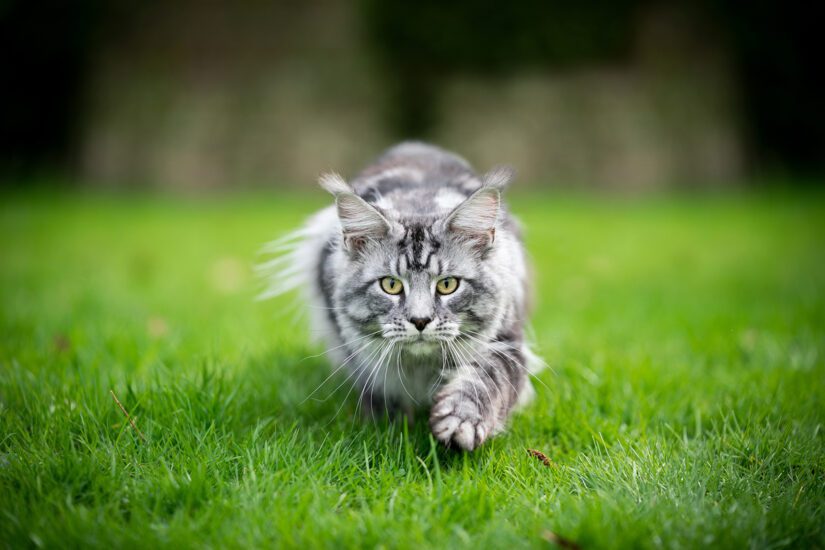
Variation in hunting behaviour is thought to be due to three main factors:
- The availability of prey in the cat’s outdoor environment
- The guardian’s care practices
- The cat’s own intrinsic characteristics
A team of researchers in France was interested in these intrinsic characteristics. They investigated the link between a cat’s personality and hunting behaviour. Here’s what they found:
- Extraverted cats, described as smart and persistent by their guardians, had high bird and mammal return rates.
- Cats considered shy and fearful of other cats by their guardians brought home fewer birds and mammals.
The authors proposed that a cat’s personality could have an influence in a few ways. For instance, guardians of shy, fearful cats may be less likely to let them outside — perhaps because these cats don’t want to be outdoors much. Also, once outside, shy, fearful cats may be less likely to explore their environment and encounter prey.

While not every cat has the same motivation to hunt, the fact remains that, collectively, cats are responsible for the deaths of millions of wild animals each year in Canada. Given that hunting is an innate behaviour, then, can anything be done about it?
What the science says
To help answer this question, researchers have looked at aspects of care that may influence a cat’s desire to hunt.
For instance, in a study conducted in England, guardians were asked to spend just 10 minutes a day playing with their cats. Surprisingly, over the 12-week experiment, they saw a 25 per cent drop in the total number of animals their cats brought home.
These findings indicate that it may be possible to reduce hunting behaviour in cats through modest changes in human behaviour.
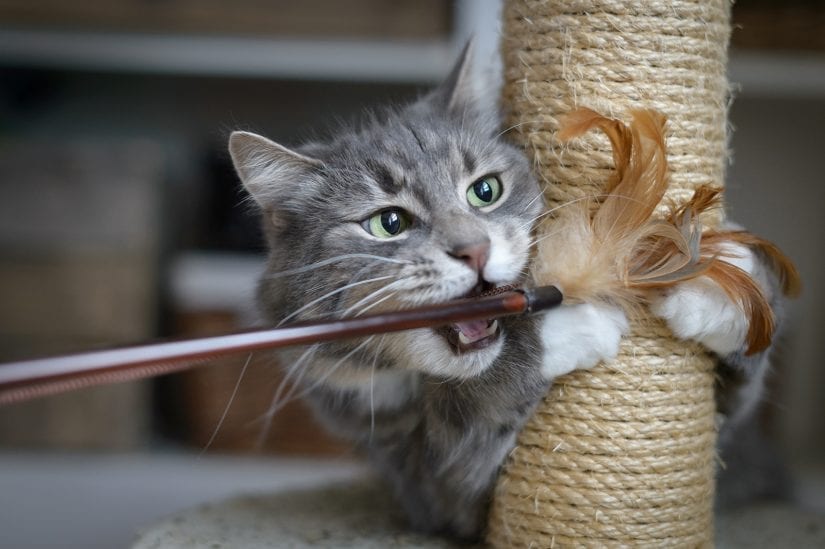
What about bells?
Over the years, researchers have also looked at factors that impact a cat’s ability to hunt.
Cats have been outfitted with bells, bibs, sonic emitters and lights, all with the goal of reducing their hunting success. Results have been mixed, with some devices like bibs performing better than others. Cats are highly adaptive, of course, and can even learn how to silence a bell while hunting.
Birdsbesafe® collars, a more recent innovation in predation deterrence, are showing promise. These brightly coloured collar covers make cats more visible to birds. Research has shown that they can reduce bird captures by more than 80 per cent.
Ultimately, though, the most effective way to prevent cats from predating on wildlife is to keep them indoors.
Risks to outdoor cats
While it’s true that cats are predators, they’re also a prey species. Being outdoors leaves them vulnerable to attacks from wild animals such as coyotes. Other risks they face outdoors include vehicles, fights with other cats, diseases and parasites, frostbite and secondary poisoning from eating rats or mice who have ingested rodenticides.

Keeping indoor cats happy
Indoor cats aren’t doomed to a life of monotony, as long as their guardians are willing to put in the work to keep them happy and healthy. There’s a long-standing belief that, unlike dogs, cats are low-maintenance, independent pets. But to give indoor cats a satisfying, enriched life, they need many of the same things that dogs do.
One of these things is playtime with their guardians, which, as the research above demonstrates, can be an excellent outlet for their natural hunting behaviour. In many ways, play mimics the hunting sequence in cats, including behaviours like stalking, chasing, pouncing and catching.
Furthermore, keeping cats indoors doesn’t have to mean they are deprived of the outdoors entirely. Providing your cat with time outside supervised in a backyard or on a harness and leash is one way to give them exercise and opportunities to explore. You can also build a simple cat patio — or catio — to let your cat come and go from an enclosed outdoor space as they please.
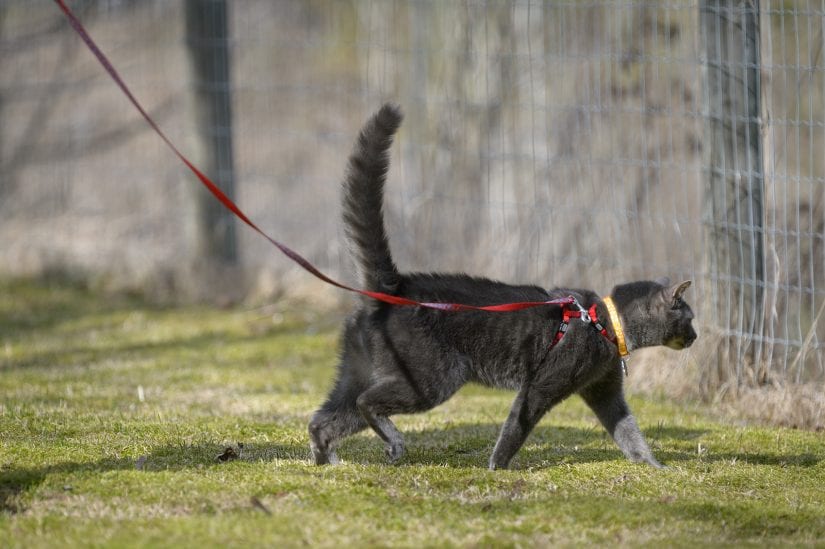
At the end of the day, cats hunt because it’s instinct. It’s up to us as their guardians to provide them with an outlet for this behaviour that keeps both them and wildlife safe.
Find out more ways of keeping your cat stimulated indoors.
Cats are wonderful companions. Each has a unique personality – just like people!
Some are shy and quiet while others are outgoing and social; but no matter the personality of your cat, they always rely on you as a guardian to provide a good home with what they need to be happy. Remember, a healthy cat is a happy cat!
Typical life span for a cat
- 13 – 20 years
How to keep your cat happy and healthy
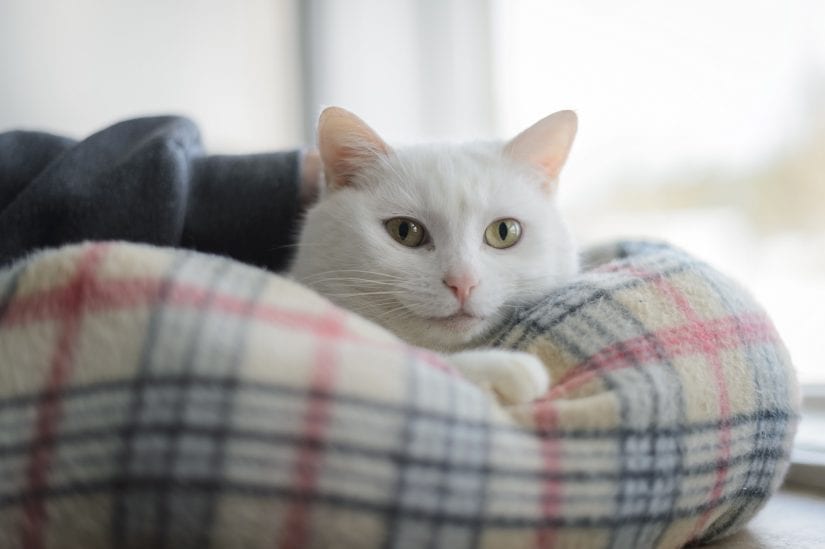
Cat food and feeding
Kittens need good quality kitten food when they’re weaned. Adult cats do best on a mixture of good quality dry kibble and canned food. Feeding guidelines provided on the bag can help you determine how much your kitten or cat should eat in a day.
It is common for most cats to eat two to three meals a day. Feed the last meal of the day right before bedtime. An adult cat will sleep throughout the night. Kittens may need more meals a day.
Some cats need special diets. Ask your vet for a recommendation for your cat.
Your cat must have access to fresh water all the time. Change the water daily and wash out the bowl regularly.

Cat grooming, teeth and nail trimming
Choose a pet service business that prioritizes your cat’s welfare. Learn what to ask so you can confidently choose the right pet care provider.
Grooming
Brush your cat on a regular basis, especially if they are long-haired. Regular brushing prevents hair from matting and removes loose hair. It also will help with hairballs.
Teeth
To keep your cat’s teeth healthy and tartar free, they need to be brushed daily. Buy a special toothpaste and finger brush from your local pet supply store or at your vet clinic. Do not use human toothpaste.
Nails
Nails need regular trimming, usually once a month or as needed. Take care not to cut the blood vessel (the quick) that runs through each nail. Cats who go outside do not need their nails trimmed. They need their nails to climb and defend themselves. If you prefer not to cut your own cat’s nails, a veterinarian can do this for you for a small fee.
Declawing cats
The practice of declawing cats is banned in B.C., unless it is necessary as an appropriate medical therapy. It is also banned in Australia, New Zealand, Israel, Brazil, the United Kingdom, parts of Europe and some cities in California.
Cats’ nails are not like fingernails — they’re attached to the bone. Declawing is a serious surgery. It’s like removing a part of your finger at the knuckle.
Read the BC SPCA Position Statement on Cosmetic and Other Non-Therapeutic Alterations (PDF).
*If your cat is scratching furniture, learn what to do.
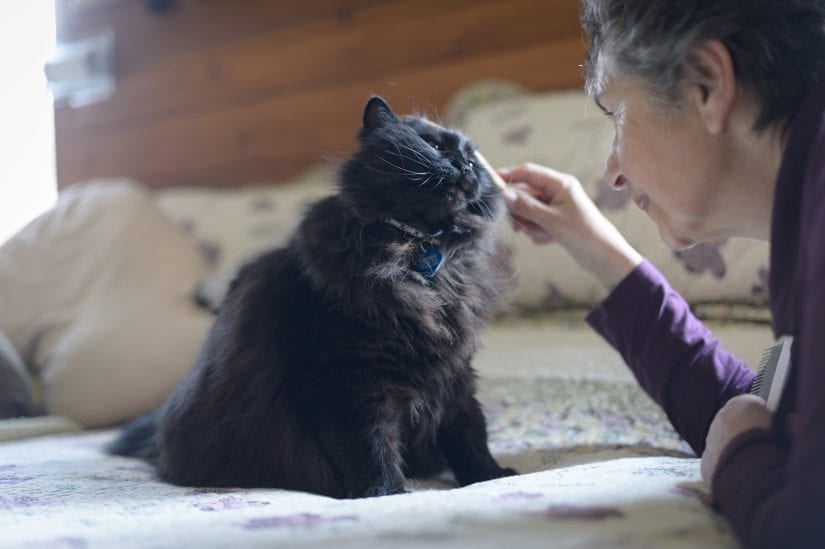
Identification (ID) for your cat
Nobody plans to lose a pet. Prepare for the unexpected and ensure your cat has two forms of identification.
Indoor cats vs outdoor cats
The BC SPCA recommends that cats be indoors, however, some cats get frustrated indoors and may enjoy outdoor time. Whether you choose to let your cat out or keep them in, know how to provide them with the best environment to keep them happy and safe.
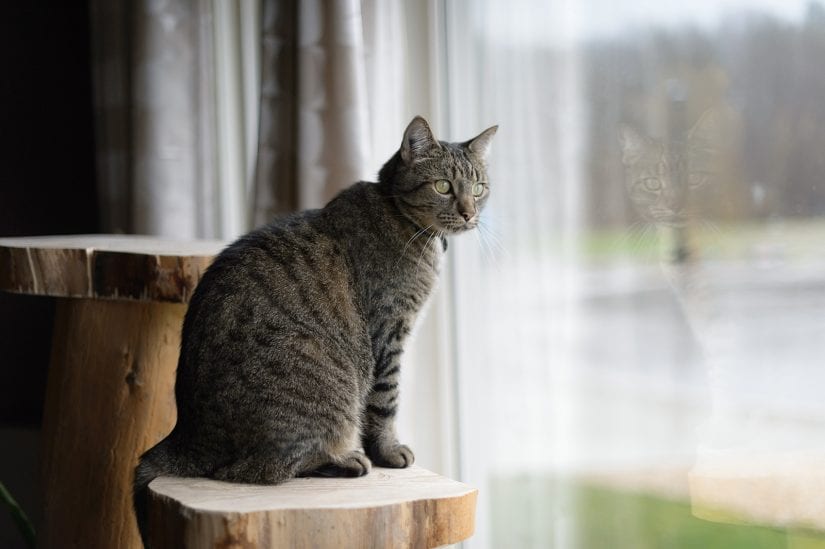
Medical care is important for your cat
Take your cat to see a vet when you first get your cat. After the initial visit with the vet, you may only need to go back once a year for a check-up and vaccinations. Kittens will need to go back more often at first for vaccines.
It is also important to have your pet spayed or neutered to prevent unwanted litters. There are also many behavioural and health benefits to sterilization. Learn more about the benefits of spaying or neutering your pet.
Over time, watch for lumps and bumps on your pet. Also pay attention to signs of your cat not eating or a change in their behaviour. If you notice anything different talk to your vet.
Find a veterinarian in your area.
Learn how to make your kitten or cat’s vet visit less stressful.
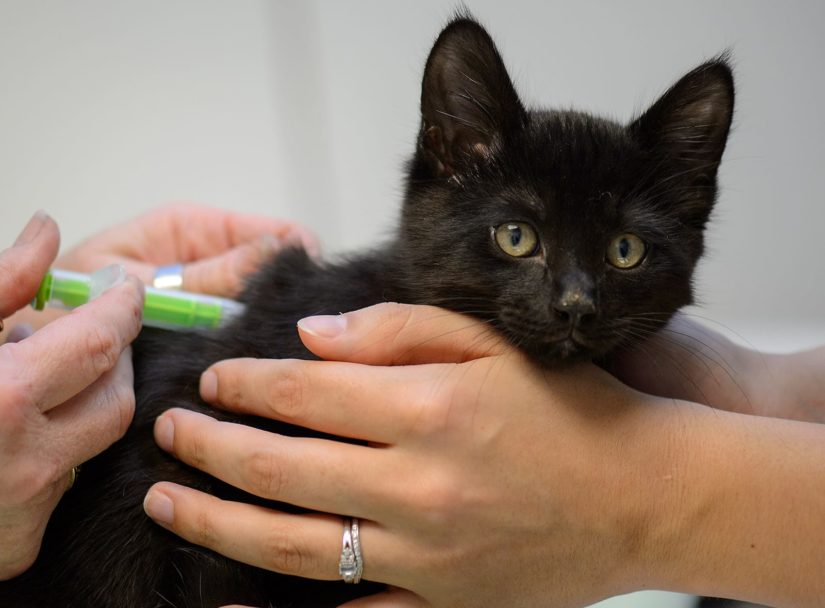
Playtime is a special time with your cat
Cats love to play, explore, run around, use a scratching post and spend time with you. These are all essential activities for cats. Set up your home so your cat can explore, run and scratch on a scratching post.
Make time in your day to play with your cat with a variety of toys, rather than your hands. Learn what to do if your cat or kitten is biting and scratching your hands.
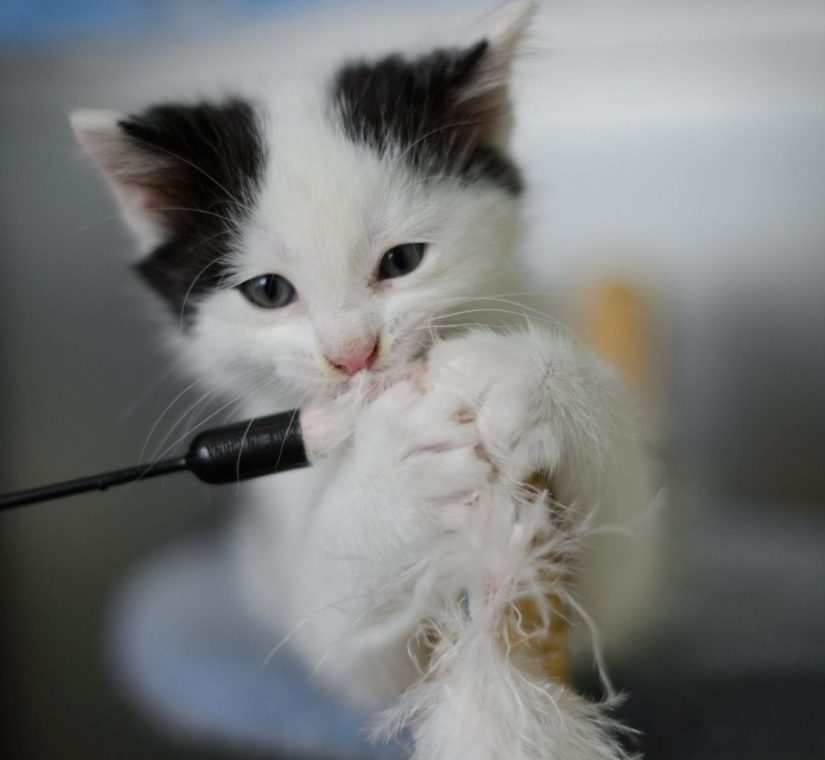
Further resources for cat care and behaviour issues:
Welcoming a new cat into your home
Introducing your new cat to your resident cat
The beauty of dogs is that they are social animals who adapt to our lives. They come in every shape and size you can imagine. Our job as a guardian is to care for them, train, understand their behaviour and protect them. Dogs are wonderful companions who we need to keep happy & healthy. Learn the best way to welcome a new dog into your home.
Typical dog life span
Medium to large dogs: 8 – 14 years
Small dogs: 10 – 16 years
How to keep your dog happy and healthy
Dog food and feeding
Puppies need good quality puppy food. Adult dogs will thrive on a quality dry kibble. Consult the feeding guidelines provided on the bag or can for how much your dog should eat in a day. It is common for most dogs to eat twice a day — in the morning and at dinner time. Puppies may need three meals a day.
Some dogs need special diets. Talk to your veterinarian about the best diet for your dog.

Treats
Dogs love treats. They’re important when training your dog. Use treats to reward your dog when he gets something right. It’s like saying thank you or paying him. You can even use your dog’s kibble as treats- they won’t know the difference. Save the yummy treats for things like calling him back to you or when he’s at the vet and nervous.

Your dog must have access to fresh water all the time. Change the water daily and wash out the bowl regularly.
Dog grooming, teeth and nail trimming
Choose a pet service business that prioritizes your dog’s welfare. Learn what to ask so you can confidently choose the right pet care provider.
Grooming
All dogs, whether short or long hair, need grooming. Longer haired dogs need to be brushed daily to keep mat free. Some might need to go to a dog groomer for grooming. Regular brushing will help you detect fleas or any lumps, bumps or skin conditions your dog may have.
Teeth
Just like humans, dogs need their teeth brushed for good oral hygiene. They can’t do it themselves so we have to brush their teeth. Use a soft tooth brush and dog tooth paste and try to brush every day. Never use human tooth paste. Go slow and make sure you have treats to give your dog after his brushing.
Nails
When standing, your dog’s nails should not be touching the ground. On average, nails should be trimmed once every month by a vet, dog groomer or yourself at home. Talk with your vet or local dog groomer for tips on how trim nails. Great care must be taken that you don’t trim too much. You can cut the blood vessel in the middle of the nail called the “quick.”
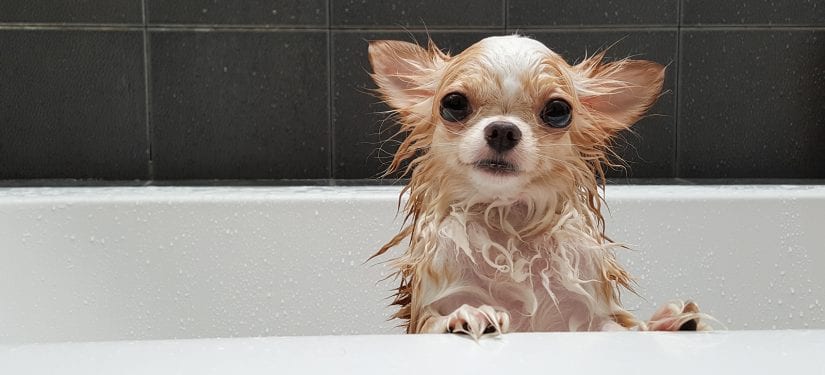
Exercise your dog
All dogs need exercise, no matter how big or small. Different breeds of dogs need different amounts of exercise but they all need to run and play every day. One or two short walks for a bathroom break is not enough. Leaving a dog in a back yard is not enough. Playing fetch, or taking your dog to an off-leash park where he can run around safely is best. If you’re not sure how much exercise your dog needs talk to your vet.
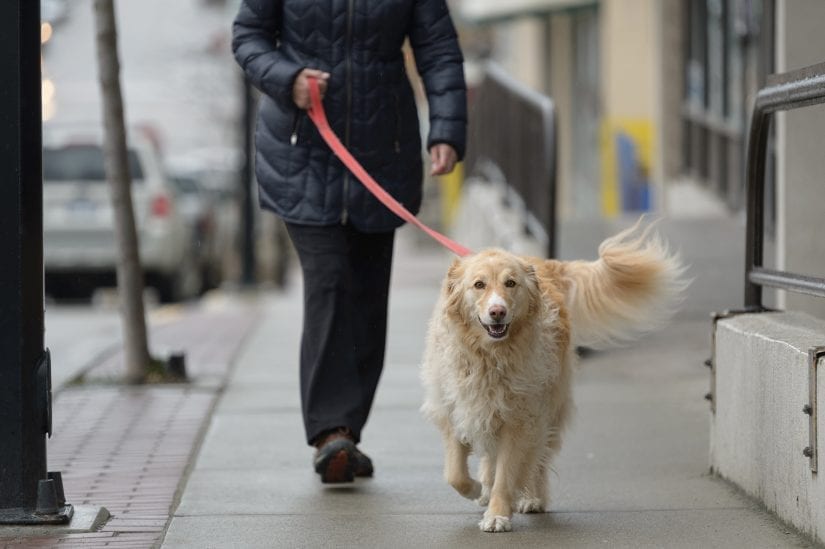
Things to do with your dog
Feeding
- Feed your dog in a dog food puzzle (feeding toy / smart toy)
- These toys get him to work to get the food and make him think
Chewing
- Dogs need to chew
- Chewing something safe and yummy for dogs is like us getting into reading a good book
Sniffing
- Let your dog sniff on walks – they’re born to sniff
- Hide treats and encourage your dog to sniff them out – this game will tire them out
Exercise
- Walk at least 30 minutes twice a day – older dogs may need short walks
- Hike with your dog, give him lots of time to sniff things
Play
- Play one-on-one games with your dog like tug-a-war or hide & seek
- Rotate through their toys so old toys become new ones to them
- Set up play dates for your dog to play with a dog friend
- Take your dog to the dog park for play with lots of dogs – if he’s good with other dogs
- Even dogs who don’t play may enjoy a visit to the dog park – make sure the other dogs don’t bug them and they’re not scared
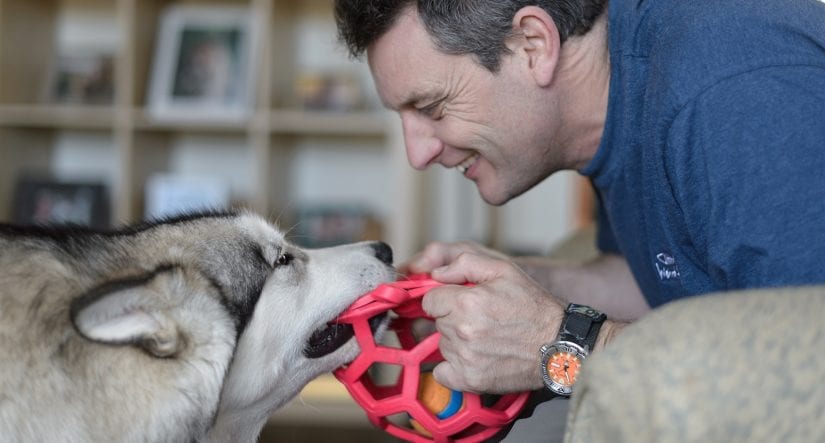
Identification (ID) for your dog
Nobody plans to lose a pet. Prepare for the unexpected and ensure your dog has two forms of identification.
It is also important to have your dog licensed – it’s the law. The license number will help people find you if your dog is lost. Check with your city, municipality or regional district about licensing and where to buy one.

Where should your dog sleep? Indoors or outdoors?
Dogs should be kept inside with their family. They are social animals who like to be around people. Set up an area with a comfy bed or blanket that your dog can call his own.
If you let your dog outside in a yard, it should only be for short periods of time. He should have a warm, covered place, away from wind, sun and rain. He must also have a dry place to lie down and fresh water. Best never to leave your dog outside unattended. If your dog is outside, learn what kind of shelter he needs.
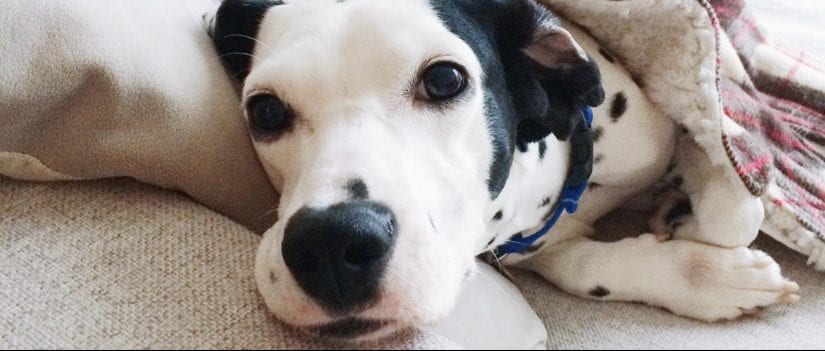
Medical care for your dog
When you first get your dog, take them to see a vet. After the initial visit with the vet, you should plan to go back at least once a year for a check-up and vaccines. Puppies will need to go back more often at first for vaccines.
It is also important to have your pet spayed or neutered to prevent unwanted litters. There are also many behavioural and health benefits to sterilization. Learn more about the benefits of spaying or neutering your pet.
Always watch for lumps and bumps, your dog not eating or a change in their behaviour. If you notice anything different talk to your vet. Find a veterinarian in your area.
Learn how to make your dog or puppy’s vet visit less stressful.

Training your dog
A dog needs to learn what we want him to do or not to do. Learning about his behaviour and how to teach him what you want is one of the best things you can do for your dog. If he knows exactly what you want he’ll be happier and safer.
Training a dog:
- Takes time
- Patience
- Should be fun
- Works best when you use treats – it’s like saying “yes” you got it right
- Takes practice – like people learning to play an instrument like the piano or guitar
Never use harsh verbal or physical corrections training a dog. Choose a humane trainer who follows the BC SPCA Position Statement Animal Training.
Did you know the BC SPCA has standards for humane dog training (PDF)? We can help you find a good dog trainer through our AnimalKind program.
Overcoming your dog’s behaviour issues
Some dog behaviour is normal for a dog but we find it annoying or think it’s bad. Other times dogs have behaviour issues. Jumping up, being afraid of people or things and reacting are just a few issues we see regularly.
We can help dogs, by better understanding and managing dog behaviour and ensuring they get enough exercise, enrichment and training.
Preventing and reducing excessive dog barking
Preventing or reducing excitable dog behaviour (PDF)
Preventing and reducing dog behaviour problems (PDF)
In the wild, hamsters live in underground burrows where they sleep, stash food, raise families and hide from predators. They’re most active at night, travelling long distances to gather foods such as seeds and insects in their stretchy cheek pouches.
Before adopting a hamster, it’s important to understand these natural behaviours to ensure you’re ready to provide the kind of environment and care these engaging rodents need.
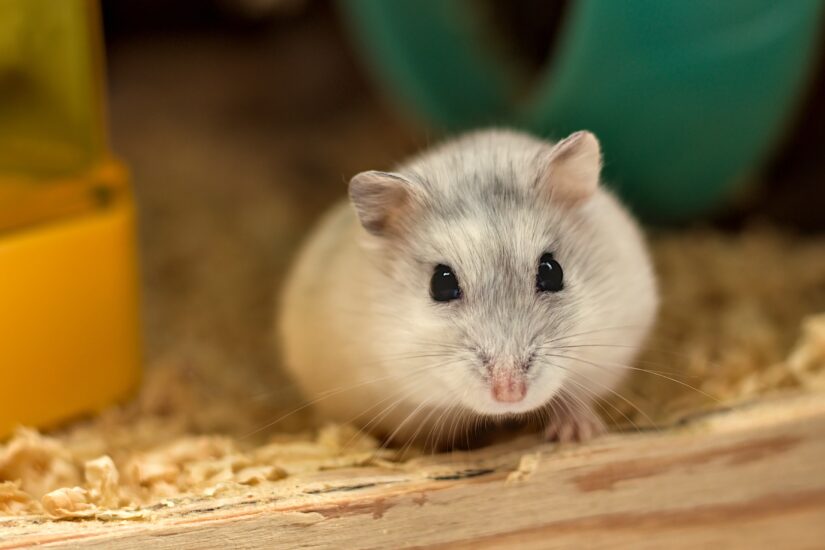
Types of hamsters
Though there are many types of hamsters in the wild, only five species are commonly kept as pets. There’s the popular Syrian and the less common dwarf hamsters: the Campbell’s Russian, winter white Russian, Roborovski and Chinese. These small Asian rodents have only been around as companion animals for less than a century.
Syrian hamsters
Syrian hamsters are the largest and easiest to handle of all the pet hamsters. Though they can be jumpy as youngsters, most mature into calm pets. They usually live for about two years.
Syrians come in a variety of colours and patterns such as dark chocolate brown and tortoiseshell. They can also have different coat types like short, long or curly. Because of this, they’ve earned a number of nicknames over the years, including teddy bears (longhaired Syrians), black bears (black-coated Syrians), panda bears (black-and-white Syrians) and Hershey bears (chocolate-coloured Syrians), just to name a few.
Syrian hamsters are solitary and should be housed alone. Otherwise, they will fight.
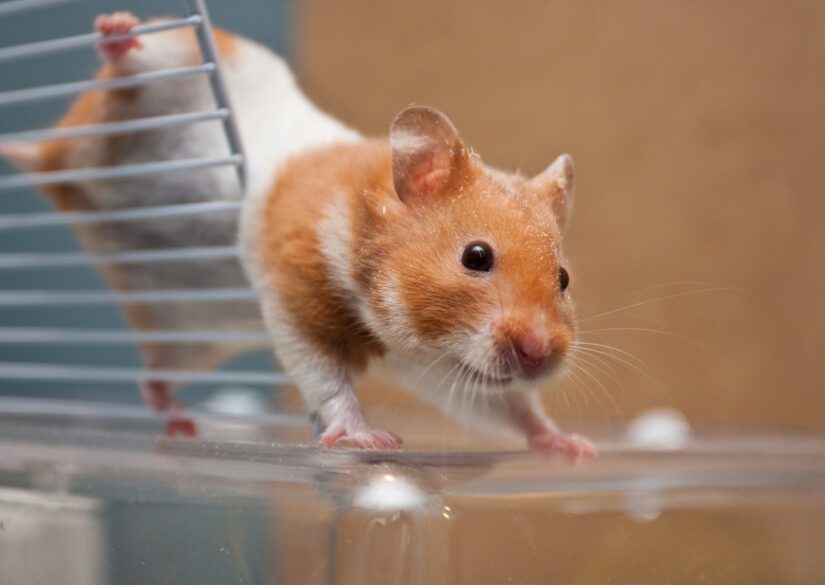
Dwarf hamsters
Dwarf hamsters are small and fast-moving and can be difficult to handle. They haven’t been kept as pets for as long as Syrians and aren’t found in as many colours, patterns and coat types. Dwarf hamsters also have a lifespan of about two years.
Except for Chinese hamsters who are solitary, dwarf hamsters are social and can be housed in same-sex pairs or small groups. To help prevent squabbles, they should have a large enough habitat and come from the same litter or be introduced to each other when they’re very young.
Never keep male and female hamsters together, even for a short period. Hamsters multiply at an amazing rate. Females can have up to 10 litters in just one year, with anywhere from four to 12 young per litter.

What do hamsters need?
Nighttime care
Hamsters are nocturnal. They like to be active at night and sleep during the day. So your hamster may be just getting up when you’re heading for bed. It’s important to be up late enough to care for them. Disturbing your hamster during the day can cause them to get upset and bite.
Food and water
Being omnivores, hamsters eat both plant and animal foods. Feed your hamster a staple diet of hamster pellets or blocks. Hamster pellets are a complete, balanced diet and should be available to them all the time. Provide a small amount of vegetables, fruits, nuts and seeds every day, too. Hamsters crave variety.
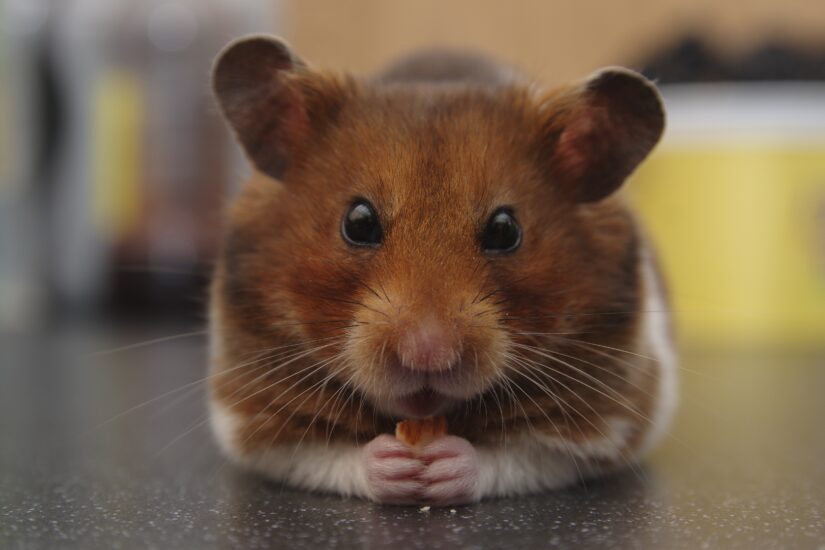
They also love treats. Foods such as plain popcorn, scrambled eggs and cooked pasta make great snacks. Just don’t feed them too many treats, or you’ll end up with an unhealthy hamster.
Because hamsters hoard their food, be sure to look for hidden stashes. Take away any uneaten fresh food the next day so it doesn’t spoil and make them sick.
Hamsters need water available to them all the time. Fill your hamster’s sipper bottle with clean, fresh water every day. Once a week, clean the bottle using soap and water. It can be best to avoid water dishes. Hamsters tend to bury them as they dig, creating a soggy mess.
Dental health
To help wear down their ever-growing front teeth, provide your hamster with chewing items such as cardboard, wooden toys and apple or aspen branches. Make sure the branches come from trees that haven’t been treated with any chemicals.
Habitats
Hamsters are active animals requiring a large habitat. The more space, the better. Hamsters like to burrow, so a deep enclosure with a solid bottom is best. A 40-gallon aquarium with a wire mesh lid works well for a single Syrian or a pair of dwarf hamsters. Aquariums are secure and can easily be filled with burrowing material. Other options include do-it-yourself cages made from large, clear plastic storage bins or glass IKEA® cabinets.
Bedding
For bedding, use wood shavings such as aspen, shredded paper or bedding made from recycled paper. Avoid cedar or pine shavings because they can cause health problems. Provide a deep layer of bedding to allow your hamster to burrow. Clean toilet areas every other day and the entire cage once a week. Keep the cage in an area protected from cold drafts and direct sunlight, as well as loud noises and bright lights.

Enrichment
Adding small houses, hanging toys, ramps, tunnels, tubes and a solid (not slatted) exercise wheel provides stimulation and places to hide and sleep. Swap items in and out to keep your hamster’s cage interesting. Scatter or hang nesting material – like toilet paper – for your hamster to gather.
Toilet
Most hamsters will use one corner or area as a toilet area. You can buy a hamster-sized litter box at a pet supply store or use an appropriately sized glass jar turned on its side. Place some soiled bedding in the litter box to encourage your hamster to use it.
Safety
Hamsters are famous escape artists. To help prevent escapes, remember to regularly check your hamster’s cage for any weak spots or holes. Hamsters have strong teeth and can gnaw through wood, plastic and even soft metals. Make sure any lids are secure and doors are latched.
Exercise
Hamsters require daily exercise and will happily explore a playpen made just for them. A wading pool or a bathtub (drain closed!) lined with a towel works well. Fill with safe objects to climb on, over and through, to keep your hamster busy and interested. Paper bags, cereal boxes, paper cups, toilet paper rolls and untreated wood are good choices. Always supervise playtime.
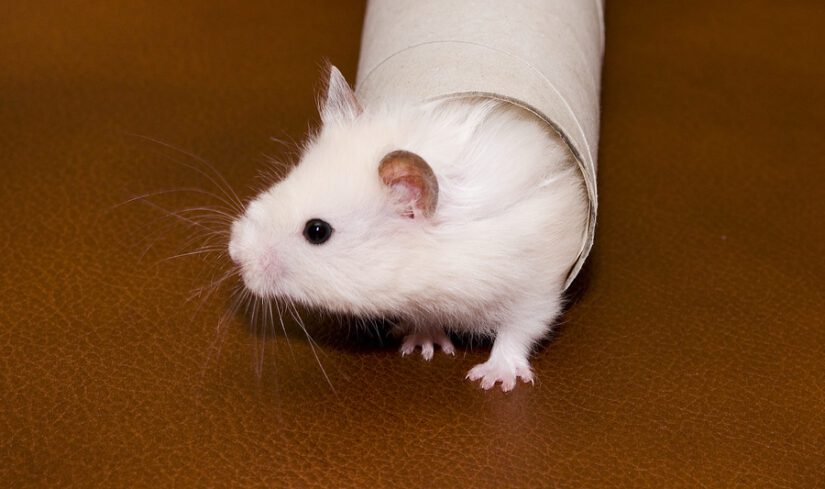
How to handle a hamster
You can pick up your hamster by putting cupped hands near them and letting them crawl into your hands. It’s important not to squeeze them and to hold them close to the ground. Not all hamsters enjoy being held and some may try to leap from your hands, which is very dangerous.
If you’re feeling uncertain, check out more small animal handling tips.
A happy hamster is a healthy hamster
As prey species, hamsters tend to hide their symptoms when they’re sick or in pain. Spending time with your hamster will show you how they normally look and behave. When you notice something unusual – like diarrhea or reluctance to move – it’s important to take them to the veterinarian immediately.
Adopt a hamster today!
Visit spca.bc.ca/adopt to view adoptable hamsters and other small animals.
…Or help support a critter in our care
Hamsters, rats, mice and other rodents often wait the longest out of all the animals to find the right person to adopt them.
Rats have a pretty bad reputation. Filthy, gross, vermin – you name it, they’ve been called it! For many people, “companion” is definitely not the first word that comes to mind when they think about rats.
When you take a closer look, though, we bet you’ll find that rats are amazing animals.
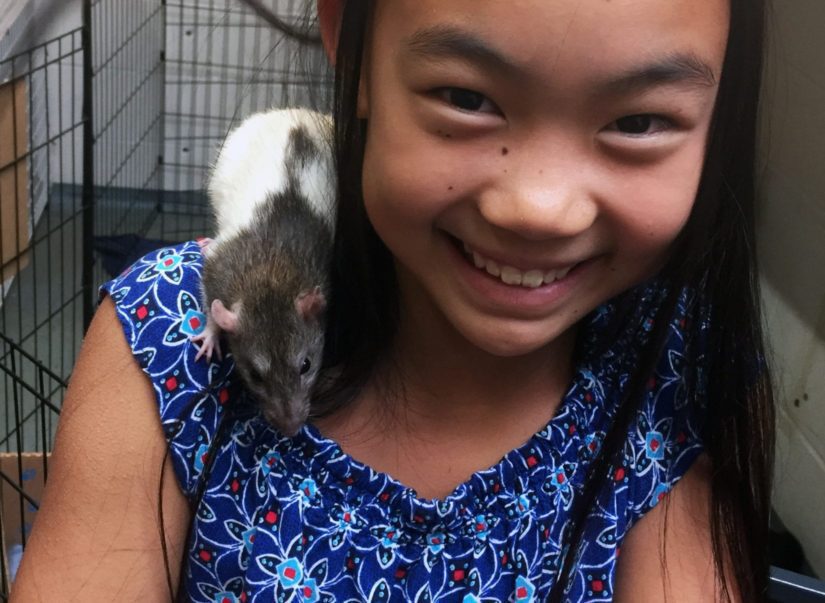
Rats have had a close relationship with people for a long time. Our towns and cities draw them in, providing a constant supply of food and plenty of shelter. So as we moved around the globe, rats followed – and multiplied. In fact, rats outnumber humans on almost every continent in the world!
What began as a relationship of dependence over time became one of companionship. Fascinated by their curiosity, intelligence and resourcefulness, people began to keep tame rats. Eventually, from their wild rat cousins, a range of friendly, domesticated rats emerged – today’s pet rats.
Rats make excellent companions. They are smart and affectionate, not to mention entertaining to watch and hang out with. They each have their own unique personality and are fun to get to know.
So give rats a chance! They might just surprise you.
Rat stats
Origin: Asia
Status: Began to be domesticated nearly 200 years ago
Life Span: Usually 2 to 3 years
Size: Weigh up to about 650 g and measure 23 to 28 cm in length (plus an 18 to 23 cm tail)
Coat: Comes in a few “styles,” from smooth to curly
Colour: Many different colours and patterns, like cinnamon or “Dalmatian”
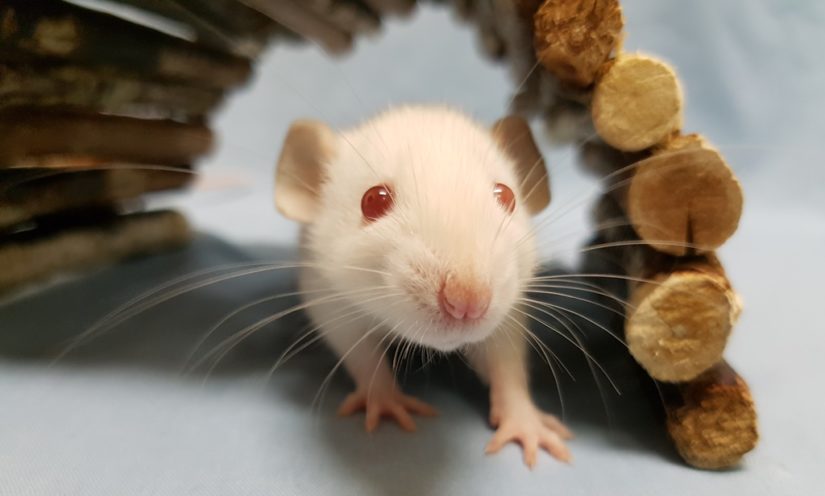
Be a rat-tastic guardian!
Rats require plenty of attention, but they make great companions. Here are just some of the care and welfare needs of rats.
Healthy, happy rodents: Spending time with your rats will show you how they normally look and behave. When you notice something unusual – like breathing problems or loss of appetite – you’ll know to take them to the veterinarian right away.
Please don’t squeeze: Rats love attention, but they must be handled gently and carefully. Always pick up your rat with two hands: one hand under his hind end and the other around his chest. Never pick a rat up by his tail.
Keeping fit: Rats require daily exercise and will happily romp around a room that has been cleared of hazards such as electrical cords, cats or dogs, and poisonous plants. Keep in mind, a rat can squeeze through any opening she can get her head through! So rat-proofing is key. Always supervise playtime.
Rapidly reproducers: Never keep male and female rats together, even for a short period (unless they are neutered or spayed). Rats multiply at an amazing rate. Females can have up to 12 litters in just one year, with anywhere from six to 12 young per litter.

Social life: Rats should not be kept alone! Two or more can live together provided they are the same sex and have a large habitat. For all those hours people are at work or school (or asleep), think how happy your rat will be having a rat friend around! They’ll eat, play and sleep together, and groom each other.
Teeth: To help wear down their ever-growing front teeth, provide your rats with chewing items such as cardboard, wooden toys and apple branches. Make sure the branches come from trees that haven’t been treated with any chemicals.
Litter box: Some rats can be trained to use a litter box, while others may never use one consistently. But it’s worth a try! A plastic cat litter pan works well. You can also use a corner litter pan designed for small animals.
Grooming: Rats are actually great groomers. They spend lots of time each day carefully cleaning themselves – and each other – all over.

Feeding time
Snack time: Rats love treats! Foods such as unsweetened cereals, seeds, plain popcorn, nuts and dried pasta make great snacks. Just don’t feed too many or you’ll end up with overweight, unhealthy rats.
Being omnivores, rats eat both plant and animal foods. Feed your rats a staple diet of rat pellets or blocks. Rat pellets are a complete, balanced diet and should be available to them all the time. Provide a small amount of vegetables and fruits every day, too. Rats crave variety!
Hoarders: Rats often hoard their food, so be sure to look for hidden stashes. Take away any uneaten fresh food the next day so it doesn’t spoil and make them sick.
Drink up: Rats need water available to them all the time. Fill your rats’ sipper bottle or heavy ceramic dish with clean, fresh water every day. Use soap and water to clean them out – once a week for bottles and daily for dishes.
Recipes for rats: Rats are fun to feed because they clearly take such pleasure in eating! Things like cooked rice, plain oatmeal, scrambled egg and cooked pasta are easy to make and bound to be a hit with your rats. (Just be sure to feed these foods in small amounts. They’re not meant to be a replacement for a well-balanced diet.)
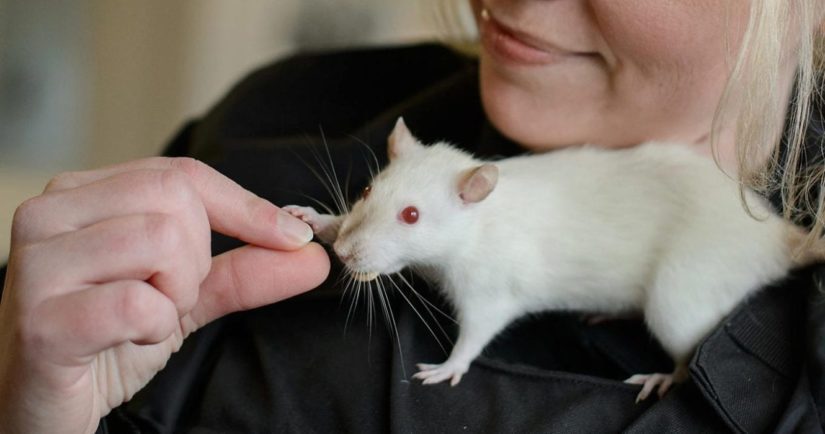
A comfy place to call home
Rat palace: Rats are active animals requiring a large habitat. The more space, the better! Rats like to climb so a tall enclosure with multiple levels is best. A cage measuring three feet long by two feet wide by four feet high (pictured below) works well for a pair or small group of rats. Be sure the bar spacing is no larger than half an inch apart for young rats and an inch apart for adult rats to prevent escape. Habitat bottoms should be solid, not mesh or wire, which can hurt rat feet. Wire shelves should be covered to prevent injuries, too.
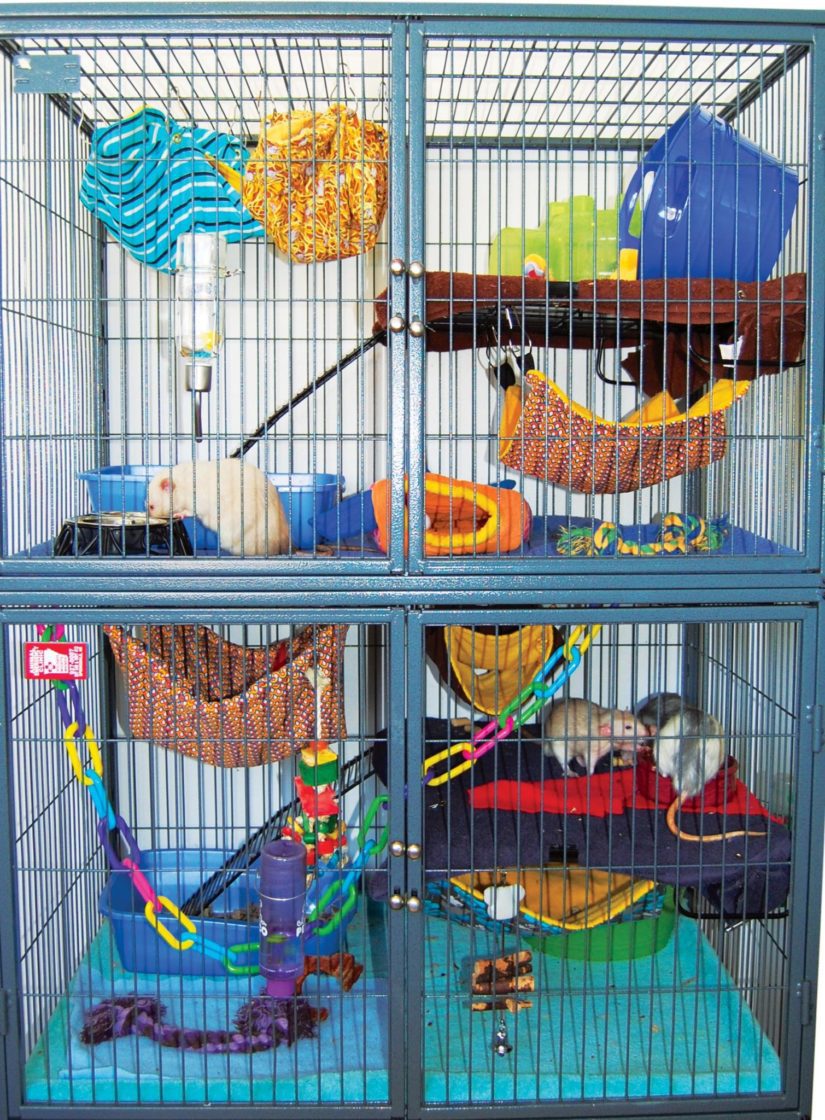
Interior decorating: Adding small houses, ropes, hanging toys, plastic cat toys, hammocks, ladders and tubes provides stimulation and places to hide and sleep. Swap items in and out to keep your rats’ cage interesting. Scatter or hang nesting material – like shredded paper – for your rats to gather.
A clean, comfy home: Bedding made from recycled paper or fleece fabric works well for rats. Do not use cedar, pine or aspen wood shavings because they can cause health problems. Clean the cage several times a week to keep your rats healthy. Ammonia from urine can irritate their lungs and lead to illness. Keep the cage in an area protected from cold drafts and direct sunlight, as well as loud noises and bright lights. Rats like darkness!
Game time!
Rats love to have fun – with each other and with their guardian. Plus, they always seem to have energy to burn! Try challenging your rats with these games:
Bobbing for peas: Fill a shallow dish or bowl with about an inch of water. Pour in some peas. It won’t take long for your rats to figure out how to fish for them!
Obstacle course: Create a jungle gym for your rats. Use PVC pipes, cardboard boxes, wooden ladders, the legs cut off an old pair of jeans – pretty much anything you can think of that your rats will want to explore. Then let ‘em loose and watch your rats climb all over!
Tug-o-war: Rats love to chase things! Wiggle a piece of string or rope in front of them and they’ll try to snatch it from you. Just make sure you let them “win” the tug-fight every once in a while.
Tunnelling for treats: Rats are natural burrowers. Fill a large plastic container with plain potting soil from a garden store. Be sure to place the container on a towel – this is one messy game! Sprinkle and bury some treats around the container. Then sit back and watch your rats have a blast digging for the goodies.
Adopt a rat today!
Visit spca.bc.ca/adopt to view adoptable rats and other small animals.
…Or help support a critter in our care
Rats, mice, hamsters and other rodents, often wait the longest out of all the animals to find that right person to adopt them.
Lots of people think of small pets, like rabbits and rodents, as “starter” pets. But just because they’re small doesn’t mean they need less care! Find out how to set up your cage, what kind of foods to feed, and how to handle and play with small pets safely.
Refer to our care guides:
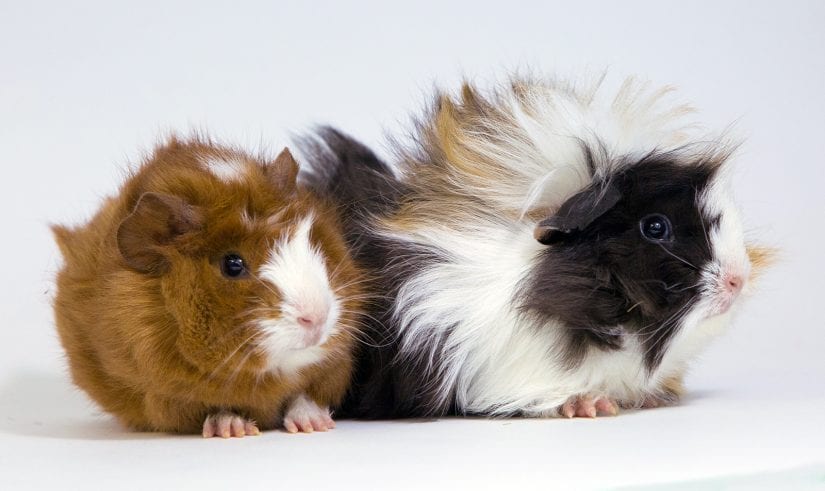
Yes, with a new pet it’s always a good idea to take them to a veterinarian to make sure your new friend is healthy. You can also get all your questions answered about vaccines or health concerns. Call your vet to ask when to schedule your first visit.
Make sure you bring your pet’s favourite treats and don’t feed a big meal before going to the vet so your pet is excited to get treats. You want your puppy or kitten to love the vet and not be scared, and the best way to do this is to make it a great experience every time!
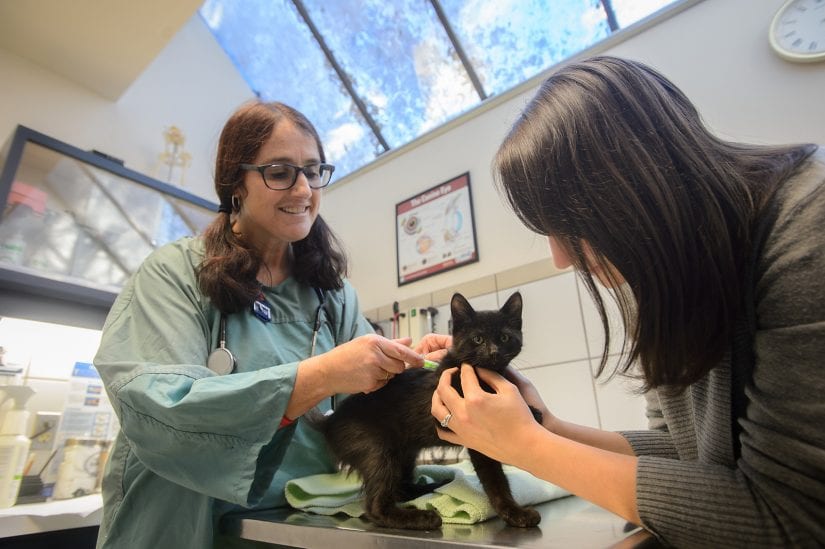
Be sure to ask about:
- Vaccines
- Deworming and parasite prevention
- Basic care – feeding, training, exercise
- Spaying/neutering
- Permanent ID such as microchip
- Future health needs and monitoring
Yes! In fact, Petsecure Pet Health Insurance provides a complimentary six-week trial of pet health insurance with every dog and cat adoption.
With pet health insurance, you can lower the stress of paying for large, unexpected or unplanned expenses with a monthly premium.

If you have cats in your community who appear to be living on their own outdoors, there are a few things you can do to help, especially during the winter months.
Get the cat spayed or neutered: The best method of getting feral cat populations under control is through trap-neuter-return (TNR). This involves trapping the cats, getting them spayed or neutered and vaccinated, and then returning them back to their environment. In addition to humanely reducing the population, TNR also improves the health of the cats and makes them better neighbours.
Contact your local SPCA or cat rescue for advice on how to humanely and safely trap a feral cat. They may even have a trap loan or TNR program to assist you. Community programs are available to help spay and neuter cats to help fight the cat overpopulation problem in B.C.
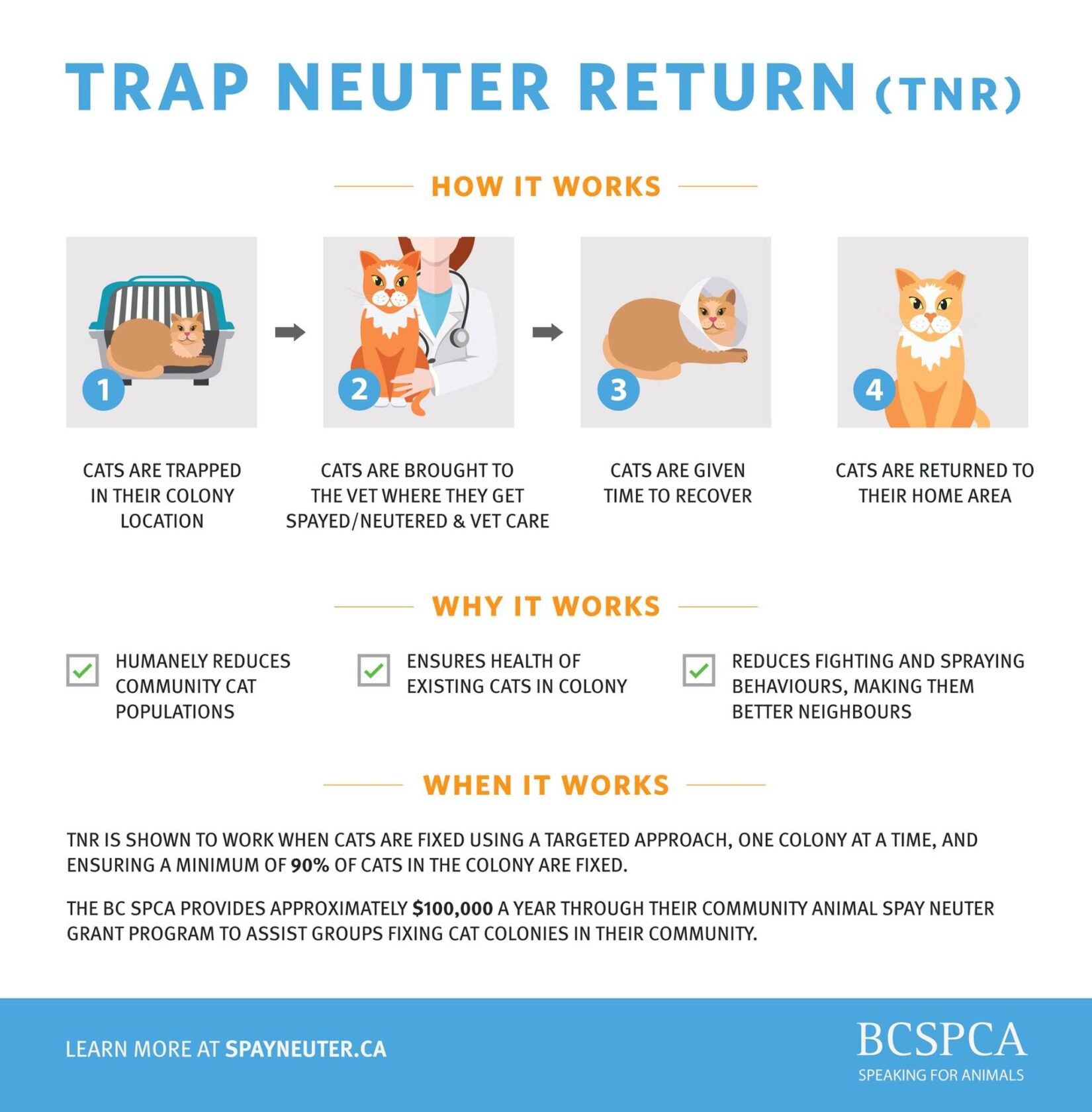
Ensure access to food and water: Food should be left out for cats only during feeding time and then removed to ensure it doesn’t attract wildlife such as raccoons, skunks or bears.
Water should be available at all times. In winter, water sources and wet food can easily freeze over. When you put out water for cats, check it twice daily to make sure it stays ice-free. During the winter, choose dry kibble and ceramic or plastic dishes.
Check your local bylaws: There may be provisions in your municipal bylaw that require you to register the cat colony, or ensure that all cats have permanent identification such as a tattoo or microchip.
Build an outdoor cat shelter: Wintertime is especially hazardous for feral cats. They can struggle through the coldest months of the year to find enough food, water and shelter. Their ears and toes can easily get frostbitten if they don’t have access to a winter shelter.
By providing a cat shelter, cats will be able to escape the wind, snow and rain and make it safely through the cold winter months. Our instructional video walks you through it step by step.
Tap your car: Keep in mind that in the winter months, outdoor cats (and wildlife) may see your car as a warm refuge. Before starting your vehicle, ‘think and thump’ – tap the hood and check between the tires to make sure no cats are hiding underneath or camping out in the engine compartment.
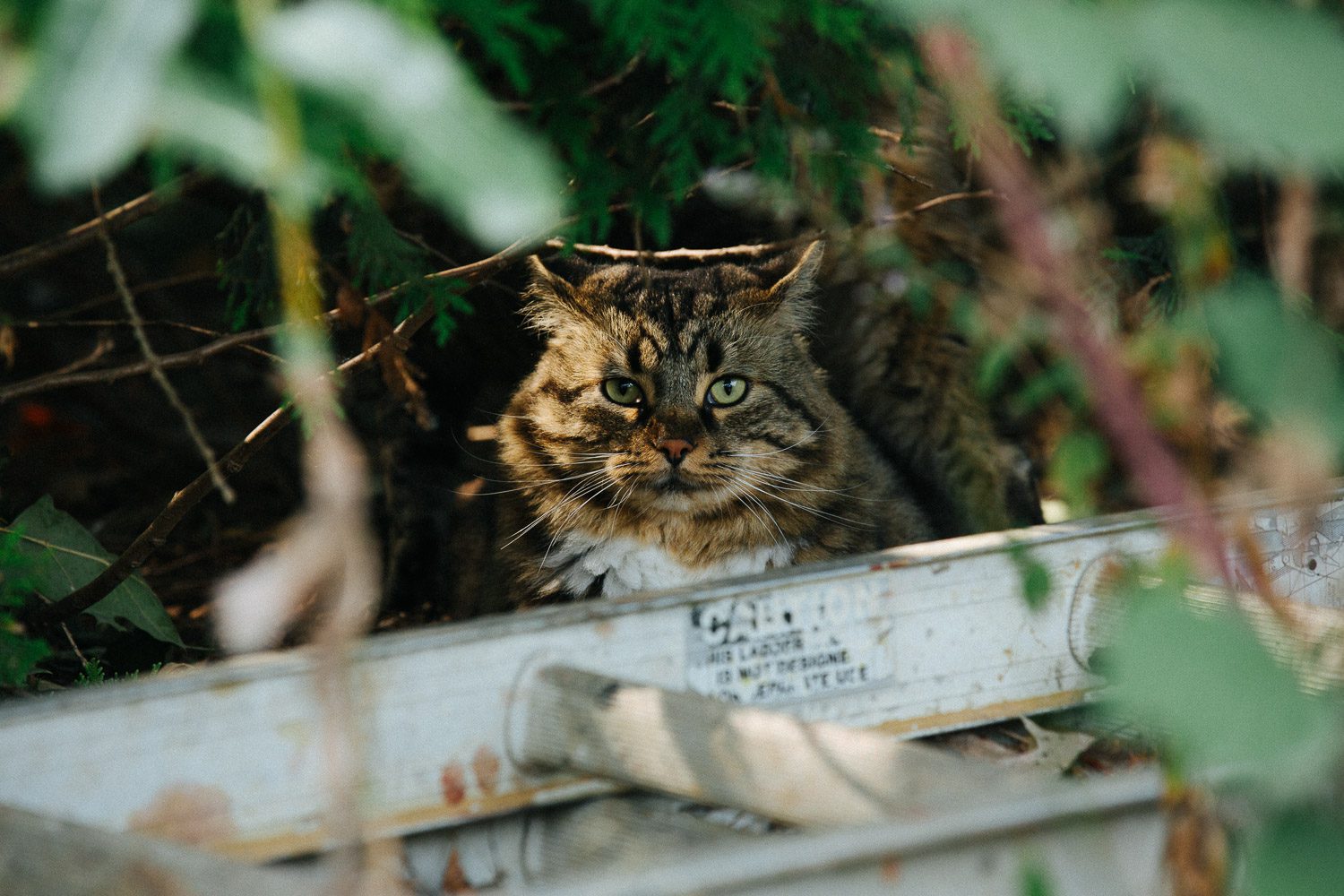
Spay or neuter your own pet: Female cats have a quick reproductive cycle, and cat populations can boom in a very short amount of time. The first step is always to ensure your own pets are spayed and neutered. In addition, we recommend keeping your cat indoors – not only for their own safety, but also to prevent them from catching and spreading diseases or getting lost and ending up part of a feral colony. We have a lot of great tips for how to keep your indoor cat happy and healthy.
Learn more about
Believe it or not, rabbits can be trained to use a litter box, just like a cat!
Before you begin housetraining your rabbit:
Is your rabbit spayed or neutered? Rabbits who are fixed tend to have much less of an issue with spraying urine around the house than intact rabbits do. Intact rabbits are more difficult to housetrain.
If not, talk to a vet with rabbit experience about having your rabbit spayed or neutered.
What you’ll need to housetrain your rabbit:
- Litter pans (cat ones work well — but no lids!)
- Litter (such as recycled paper pellets)
- Unlimited hay (grass hays such as Timothy or orchard hay)
How to housetrain your rabbit:
- Fill the bottom of the litter box with a layer of litter about two to three inches deep.
- Add a thick layer of hay at one end of the litter box or in a hay feeder close enough that your rabbit can munch while still in the box. Rabbits will naturally want to eat the hay while going to the bathroom.
- Place the litter box in a corner of your rabbit’s housing area. Large enclosures with multiple levels will need more than one box. If your rabbit is already peeing in one corner of their enclosure, put the box there. If they start to pee in another corner, you might have to move the box there or put an additional box in that spot.
- Keep your rabbit in their housing area until they’re using their litter box reliably. They can have more space to roam once you’re satisfied that they’re using it consistently.
- When they’re ready, let your rabbit have time out of their housing area. Put a litter box out in their free-run space too. Use the same method with this space as you did with the enclosure: start small, only giving them more room once they’re going to the bathroom in their litter boxes reliably.
- Give your rabbit fresh hay in their litter boxes every day and even several times a day. Clean the boxes at least every other day using a bunny-safe cleaner such as a white vinegar and water mix.

A note about poop
Some rabbits will continue to poop outside their litter boxes — this can be a territorial behaviour. You can always pick up the poops and place them in the litter box, but the behaviour might never go away completely.
More resources:
- 12 things to know before adopting a rabbit
- Why spay/neuter is important for rabbits
- Check out our rabbit care guide
- Visit the Rabbit.org for even more housetraining tips and tricks
Make your cat or kitten’s visit to the vet as stress-free as possible. Start with treats and a favourite towel, and take your time getting him or her out of their carrier. To learn more tips, read our care sheet (PDF) and watch our video:
The veterinarian’s office doesn’t have to be a scary place for your dog or puppy. Treats, a towel and plenty of petting can help. Not to mention lots of love!
Learn more about taking your dog to the vet and helping them learn it isn’t a scary place, watch our video:
Sometimes it’s hard to tell if your cat is sick or injured. The signs that she’s sick might not be obvious. Cats have evolved to try and conceal when they are sick. Watch for the signs below and call your vet if you’re not sure. Make sure your cat has regular vet exams to prevent illness.

Signs of illness in cats:
- Hiding, decreased energy, or other behavioural changes
- Changes in grooming patterns
- Changes in litter box usage (going outside the box, straining, etc)
- Increase or decrease in appetite or drinking
- Weight loss or weight gain
- Changes in sleeping patterns
- Bad breath
- Sitting hunched over
- Obvious illness or injury: vomiting, diarrhea, coughing, sneezing, wounds, limping etc.
Help a cat in our care receive a health check:
Reward-based training methods are shown to be more effective and better for your dog. Choose a trainer who uses only humane, reward-based methods – this means the trainer will never use fear or pain to train your dog.
The BC SPCA has standards for dog training and we recommend choosing a trainer who follows our standards and is accredited by our AnimalKind program. See if a BC SPCA-recommended AnimalKind dog trainer is in your area, and read our standards (PDF).

Choosing a good trainer
If an AnimalKind trainer is not in your area, look for a trainer that uses motivators like treats, food and play. Avoid trainers that use harsh verbal or physical corrections to punish your dog for unwanted behaviour.
Good trainers understand how dogs learn, know their behaviours and what motivates those behaviours. They will want to support and encourage you as you learn to train your dog.
Choose dog trainers who:
- train with rewards like treats, food and play
- use humane, science-based methods
- make training fun for you and your dog
- encourage you to watch or participate in training
- explain dog behaviour and body language
- have small class sizes (four to six dogs per trainer)
- work with veterinarians to help you care for your dog
- act professionally, and treat you and your dog with respect
Avoid dog trainers who:
- use punishment like shouting, pushing, hitting or leash corrections
- use shock, prong or choke collars
- refuse to let you watch or participate
- refuse to use treats or food rewards
- talk about “dominance” or “alphas”
- give medical advice or diagnoses
- guarantee training results
- make you feel uncomfortable, or make your dog scared or unhappy
Read a more detailed checklist on choosing a trainer.
The BC SPCA supports evidence-based force-free, humane training, and opposes training methods or equipment that cause anxiety, fear, distress, pain or injury. Learn more about the BC SPCA’s position on Animal Training.
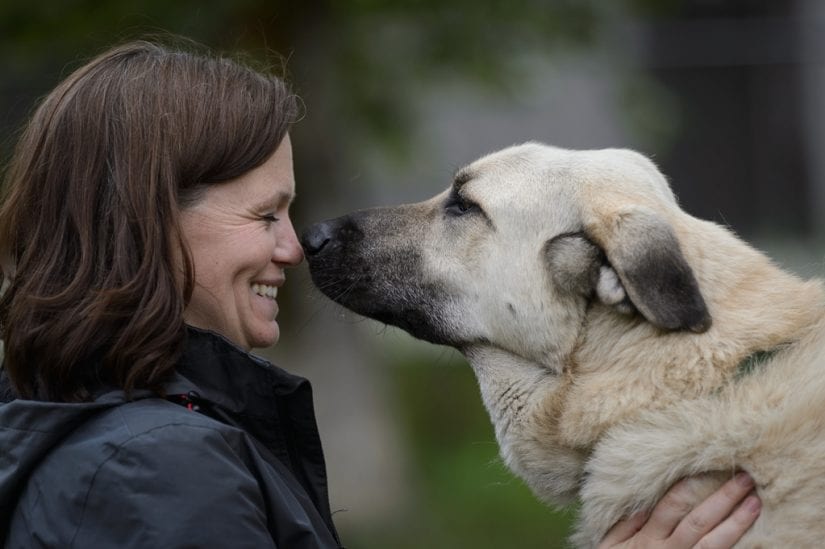
Puppies are a lot of fun and, like toddlers, they need to learn where to go potty. Remember it’s up to us to teach them and reward them when they get it right.
When house training your puppy, consider training him to like a crate. Crates can help with house training and chew training.
Training tip
Never punish your puppy for not going where you want or for not doing what you want him to do. We have to teach animals what we want them to do. If he doesn’t stay by your side he may not know that’s what you want. Reward him when he’s beside you. Use lots of treats and when he’s older you can use treats and life rewards.
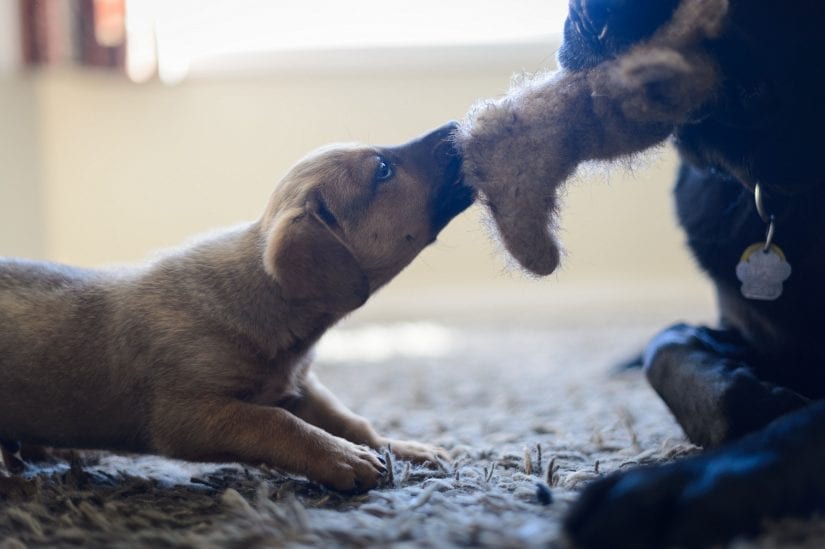
Where would you like your dog to pee and poop outdoors? Here’s 3 steps to help train your dog. To prepare, decide on the area and have lots of special treats ready to give him every time he goes in his area.
1.) Management
Prevent any opportunities for your dog or puppy to have an accident in your home by keeping him with you on a leash, or crate him when you can’t be there to supervise. Control his environment as much as possible.
Puppy house training tips:
-
- Pups need to go outside more often than adult dogs.
- Try to get them out every hour or two so they don’t have accidents
What to do if you’re not home:
-
- Make sure he’s been outside before you go and has an empty bladder.
- Confine him in a crate or dog proof room.
- Manage him like this in the house for at least three weeks.
2.) Train your dog where to go
Start a routine of visiting an area you do want him to pee and poo in.
-
- Visit this area in the morning, after meals, and before bedtime.
- Go with him to the area. Yes, every time!
- When he pees or poos in the area say “yes” and reward him with a yummy treat.
- Reward him every time he goes outside.
3.) Loosen up & interrupt
No accidents for two weeks? Now loosen up your management in the house. If your dog or pup starts to go interrupt him with ‘Uh Uh’ and redirect him to outside. Don’t scare him, just a gentle oops. Don’t forget to reward him for doing his business outside.
-
- If your dog has an accident during the three weeks ignore it. Clean it up when he’s in the other room.
- Remember they don’t pee and poo in the house on purpose. We have to teach them when and where to go and make it worth their while.
- Do not punish your dog even if it’s only 10 seconds after the accident. This is ineffective and abusive and your dog will learn to instead – be afraid of you.
- If your house trained dog starts to have accidents get a veterinarian checkup. Make sure there are no medical concerns.
Thinking of getting a second cat? Below are some tips for introducing your new cat to your resident cat (PDF).
Go slow with cats!
When bringing a new cat home to meet your resident cat, it’s never a good idea to just throw them into a room together. That can be scary for both of them! Go slow and introduce them. For both animals this can be a stressful time. A gradual introduction process is important for them to build a friendship. If one cat gets hissed at or swatted, she may always be afraid of the other cat.
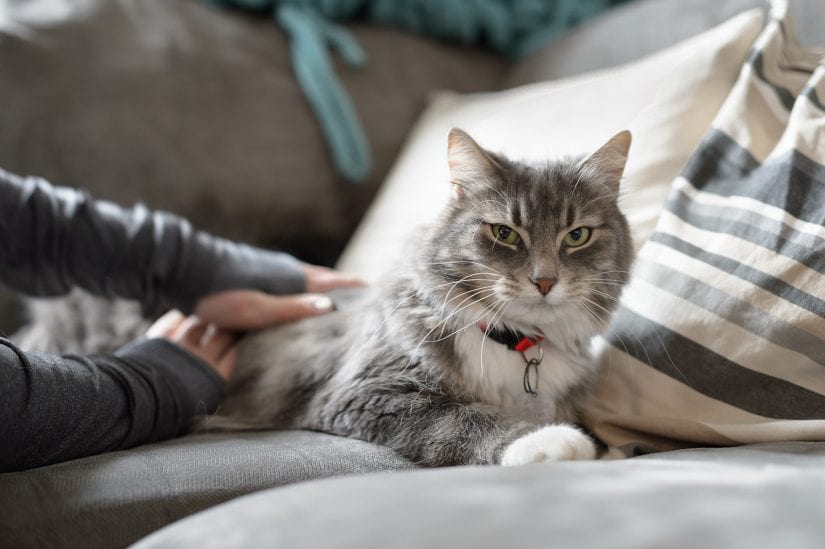
Step 1.) Before you take your new cat home
- Set aside one room for your new cat away from the resident cat’s favourite place.
- Have at least one comfortable sleeping area, one hiding area such as her carrier box, crate or a “tent bed”, a litter box, a water bowl and a food bowl.
- Plug-in a Feliway® diffuser. You can get one at your veterinarian office. It reproduces cat facial pheromones that are pacifying to cats. It will help lower their stress. It’s a good idea to have a diffuser in the new cat room and somewhere in the house where the resident cat spends time.
Step 2.) Bringing your new cat home
- Cats feel safe when surrounded by their own scent. Place towel or bedding she has been sleeping on in the carrier box so that she has familiar scent during the trip.
- Once home, take your cat to her room right away. Do not come into contact with the resident cat.
- Keep her inside the carrier box until you are in her room with the door shut.
- Place her box or other hiding area in a corner of the room (away from the litter box) and place the carrier box beside it. Open the door.
- Do not force her to come out. She may be scared and stressed by the new environment.
- Leave her alone in the room. Allow her to settle down and come out on her own.
Step 3.) Later that day swap cats scent
Cats communicate visually but also by scent. So you must start by introducing the cats to each other by “swapping “scent.
- Place your new cat’s towel on or near your resident cat’s favourite place and encourage him to approach
- If your cat starts to hiss, spit or avoid the towel place it on the floor away from his bed or food bowl. Each day move the towel closer to the cat’s food bowl.
- Do the same thing with your resident cat’s bedding giving it to the new cat for her to smell.
- Swap food bowls between the cats. They will start to associate the positive act of eating with the scent of the other cat. If one of the cats is sick or on a special diet, ask your vet before trying this.
- Once they are completely tolerant of each others scent proceed to visual contact.
How long will it take for cats to like each others scent?
This can vary from a few hours (usually when one is a kitten or both are social cats) to a few months.
Important tip when introducing cats
Set aside special play and petting time each day. You want to have one on one time with each cat when your introduction is taking longer.
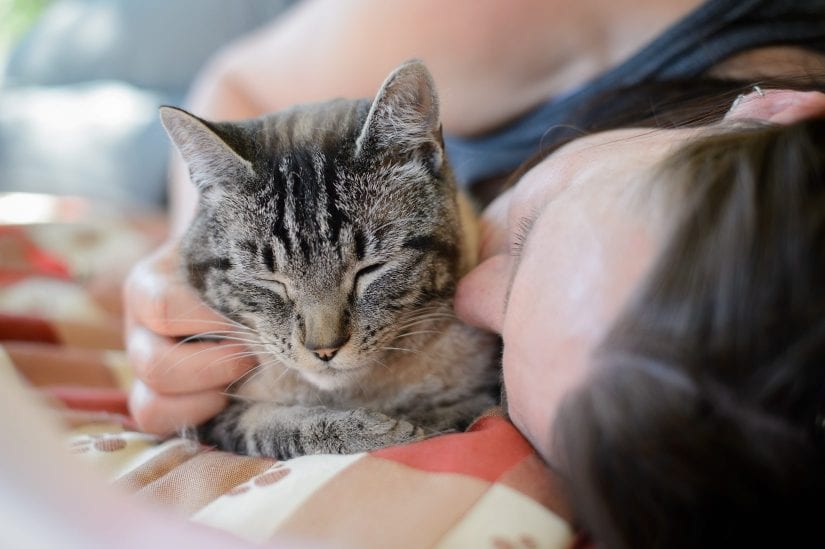
Step 4.) Controlled cat meetings
First – Visual contact between cats
- Separate physically with screen door or baby gate. If not possible then open new cat’s door slightly so cats can see each other but cannot fit through door.
- Give cats treats so they spend time close to each other or play with a feather to encourage play. Do not use catnip.
- When comfortable with each other they will sniff noses, play through the door or rub against the door. When you see this, you can have a proper introduction. There should be no growling, or repeated spitting or hissing.
What if my cats are showing aggression towards each other?
Is the aggression more severe than a hiss or a quick swat? Make the opening smaller and over the next few days, feed the cats closer and closer to the door.
Second – No barrier between cats
- Open the door and let them explore.
- If they fight, interrupt them by clapping your hands or with another noise that doesn’t scare them.
- Don’t pick them up or force them to interact.
- Let them distance themselves from each other if that’s what they want.
Do they each need their own litter box?
Give each cat his or her own litter box and add an extra one. They should have their own bowls, beds and hiding places unless they choose to share.
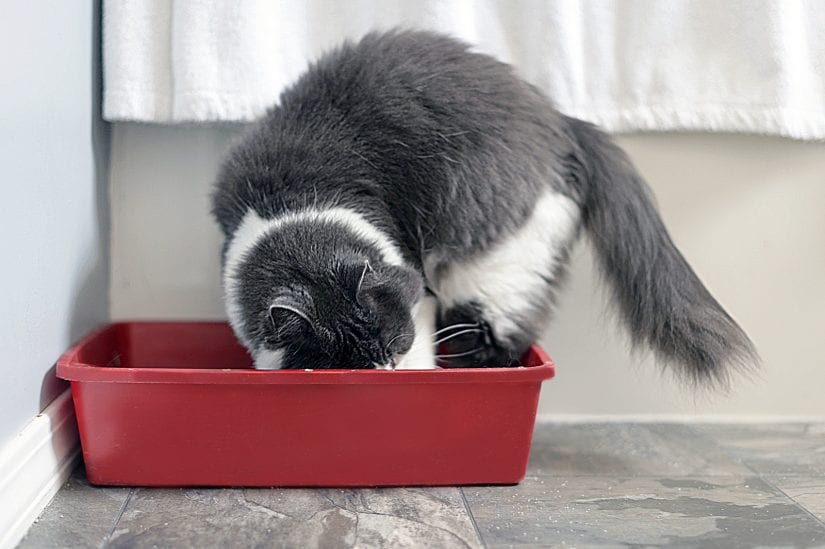
Expectations
Introductions, when done properly, can take more time than expected. Introductions and building a relationship for some cats may take a few hours or up to a few months. Your cats may play and groom each other or just sit and watch each other. Don’t force them to be what you think best buddies act like.
Caution when introducing cats
Watch for bullying, sometimes one cat will not let the other one through a door, or have access to the food bowl. You may see them swatting or hissing when the other cat tries to go to the food bowl. Watch for signs one cat is avoiding areas. If you think she’s being bullied make sure she has her own space and things like bed, litter box, food bowl.
Never punish either cat if they show aggression. If you see, signs of aggression go back a few steps. Scent swap for a few days and start visual contact slowly again.
When to contact your vet about introducing cats?
- Prolonged fighting
- Injuries from fighting
- One cat stops eating
- One cat stops using the litter box
- One starts spraying
- One of your cats hides all the time
Adapted from cat behaviour research by Dr. Rachel Casey, Anthrozoology Institute, UK

Cats are not born knowing how to use a litter box. Kittens learn about the bathroom from mom. When we give them a plastic box with litter in it we have to teach them to use this as their bathroom.
Pet your cat, give a him a treat or engage in a play session every time he uses the litter box. Never punish your cat or scare him for inappropriate elimination.
Not using a litter box is one of the most common cat behaviour issues guardians deal with. Recognize when there is an issue and try to solve it. Your cat may stop using the litter box for medical, behavioural or emotional reasons.
Steps to litter train (house train) your cat
1.) Location of cat litter box
Put the litter box in a convenient and quiet area for your cat. Make sure the litter box is the right size and type for your cat. The rule of thumb is that a litter box should be one and half times the length of your cat. Go bigger if you’re not sure!
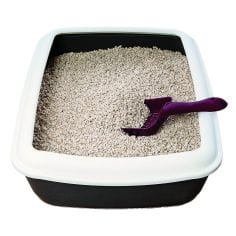 2.) Type of cat litter
2.) Type of cat litter
Most cats prefer soft small grained litter. Your cat may prefer one litter over another, so when you find what he likes, stick with it. One way to see what he likes is to put several litter boxes out with different litter and let him choose.
If you have multiple cats you should have one litter box per cat, plus one extra.
3.) Take your cat to the litter box
Take him to his litter box after meals and naps until he gets the idea. If his box is in a separate room, put him in the room and close the door after meals and naps.
4.) Use treats to train your cat
Give him a treat after he uses his litter box.
5.) Cleaning your cat’s litter box
Scoop litter box daily and depending on the litter you use wash box every one to two weeks.
6.) No bad cats
If your cat has an accident never yell or hit him. Go back to step one or check out “My cat won’t use the litter box, what should I do?”.
It’s important to remember your cat’s litter box is a big part of her life. Keep it clean so that she enjoys using it. Learn about cat litter box maintenance.
Need more information? Download Litter box problems treating and reducing cat inappropriate elimination (PDF).
Register your pet’s microchip, tattoo or license with the BC Pet Registry. Submitting your pet’s information to this provincial database ensures your pet is traceable by all participating veterinarians, animal control agencies and humane societies.
Find out more about how permanent pet ID can help ensure peace of mind.
Update Your Information
Have you moved or changed your phone number? Keeping your contact information up-to-date is easy with the BC Pet Registry. Registered users can also add additional forms of ID to their existing pet profile free of charge.
To report a lost pet, please contact your nearest BC SPCA branch.
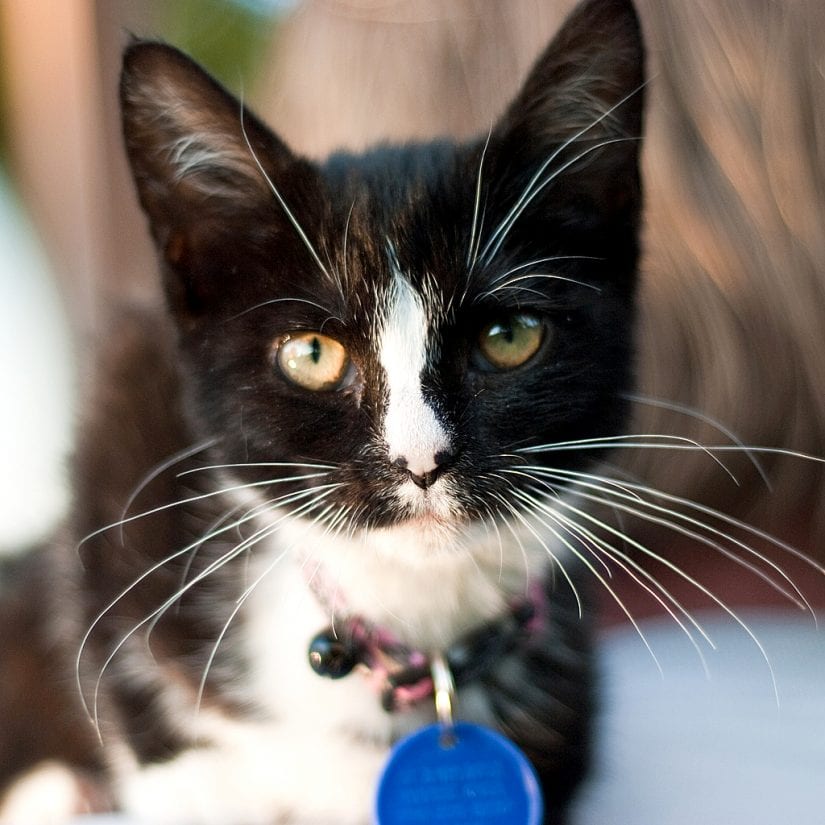
Socializing your puppy is one of the most important things you can do to help him have a happy and healthy life.
What is puppy socialization?
There is a window or “sensitive period” in which to socialize puppies. This period, often called socialization period, is the first three months of their life.
During this time, puppies accept and like things they meet and have a good experience with. It’s not that they don’t experience fear, they do, but we need to prevent them from being scared during this sensitive period. We need to teach puppies about strangers and new things, and help them if they’re nervous.

Sometimes people keep puppies at home until they are fully vaccinated at around four months of age.
While it is important not to let your puppy interact with sick dogs, and to avoid places where lots of dogs go (like the dog park) until they are fully vaccinated, it is not necessary to isolate your young puppy!
You can still take him outside and socialize him with healthy, friendly dogs. Make sure he is up-to-date on vaccinations to minimize the risk as much as possible.
Make sure your pup has lots of good experiences so they learn that people, animals and other things are good.
Socializing your pup
1.) Introduce your puppy to:
-
- Different people
- Social dogs
- Other social animals
- Different sounds
- Different environments
- Trips and different locations
2.) Handling your pup
Handle your pup so he gets use to having his toes, ears and other body parts touched. Dogs aren’t born used to being handled and we need to teach them it’s OK. Give treats after handling.
Learn more about teaching your puppy to be good with handling, watch our video:
3.) Visit your vet’s office just for puppy treats
Make special trips to your vet. Ask your vet to give your puppy a treat when you visit. Try to visit the exam rooms and back of the hospital so your pup is familiar with the hospital and staff. Give treats in each room!
4.) Start puppy socializing classes
Find a puppy socializing class and start classes right away. If your puppy is not well, speak with your vet before going to class.
5.) Give puppy play time by himself
Give your pup some toys and let him play by himself. This may help with over attachment to you.
6.) Puppies need crate or confinement training
Teach your pup he has a safe place to go sleep or just to get away from things he doesn’t like. Give him choice. For example, if he doesn’t want to be in the room when the kids are playing or visitors are over, let him go to his crate. Forcing him to stay may make him anxious or afraid of the people you’re trying to socialize him with.
Your goal is for your puppy to have many different experiences during his first three months. Make sure he has good experiences and use rewards to help him build strong associations.
7.) What if I don’t socialize my pup?
Puppies who are not socialized during their “sensitive period” may be fearful and aggressive. If they have no experience with different things or people, they can end up afraid of them.
8.) Socializing older puppies
Unfortunately, the window for socializing closes at about 12 weeks. You can still help an older dog get used to new things, but they may never be completely comfortable.
Find a dog trainer who offers puppy socialization classes near you!
Search the list of AnimalKind accredited trainers the BC SPCA recommends:
Sometimes, dogs can get overly excited while out and about, jumping up on you or others. We need to understand why they’re doing that and how we can teach them to do something else.
Learn about calming an overly excited dog, watch our video:
We have that covered
Don’t worry about bringing a carrier or something to take your cat home in. We provide what is called a Hide, Perch & Go™ box for you to take your kitty home in.

What is a Hide, Perch & Go™ box?
To help cats cope with the stress of being in an animal care centre, the BC SPCA developed the Hide, Perch & Go™ box. The box provides cats with more control over their limited environment. The box allows them to express behaviours such as hiding, perching and face rubbing (scent marking). All the natural cat behaviours that help reduce stress.
Hide, Perch & Go™ box helps lower a cat’s stress
As the box gets saturated with their own scent, cats feel safer and more at home. Taking their box home with them will help lower the stress from moving into a new home. New smells, people and furniture can make a cat anxious, stressed or scared. Something that has their scent and they’re familiar with will them adjust to their new home.
How does it work?
The box is designed so a cat can hide inside, perch on top and scratch or rub the sides of the box if they want. When you need to take your cat home from the animal centre, the box converts into a carrier. Once home you reassemble the box into a place where your new kitty can hide, perch, rub or scratch. And it isn’t something new, it’s something with their own scent on.
Putting Hide, Perch & Go™ box together
1. Take cat home
2. Open box and let cat out
3. Remove inside piece of box
4. Fold top flaps of box over
5. Attach inside piece on to top box
6. Place box near wall
7. Place bedding from animal centre in the box
Follow the same steps in reverse to turn your Hide, Perch and Go™ box back into a pet carrier.
Looking for a new cat? Visit the BC SPCA adoptable animals.
Work with animals and want to purchase Hide, Perch & Go™ boxes?
Find out how to order Hide, Perch & Go™ Boxes for your veterinary clinic, hospital or BC SPCA animal centre today!
Walking your cat on a leash
Many cats like going outside and one way to keep them safe is to teach them to walk on a leash. Before you take them outside, get them used to wearing a harness. Most cats have never had something wrapped around their body like a dog has. Don’t force them to wear the harness, teach them to want to wear it by learning the best way to put a harness on a cat.
Once your cat likes the harness, then start taking them outside for short visits to quiet places. If your cat has never been outside before, this could be scary for them. Always take a pet carrier with you so your cat can jump in and hide if they’re scared.
Don’t forget to make sure your cat has ID before taking them outside! We recommend that all cats have a microchip, plus a visible form of ID such as an ear tattoo or a breakaway collar with an ID tag.

Signs your cat is ok on harness and leash
- Relaxed body
- Exploring and interested in area
- Showing friendly behaviour
- Walks a little bit and then lays down or explores
Signs your cat may be scared
- Body pulled tight like they’re trying to make themselves smaller
- Trying to hide
- Refusing to walk, laying down trying to make themselves smaller
- Ears back, hissing, vocalizing
- Jumping or shaking because of sounds or people
Never force your cat
- To walk by dragging them on a leash
- To stay outside if they’re scared all the time
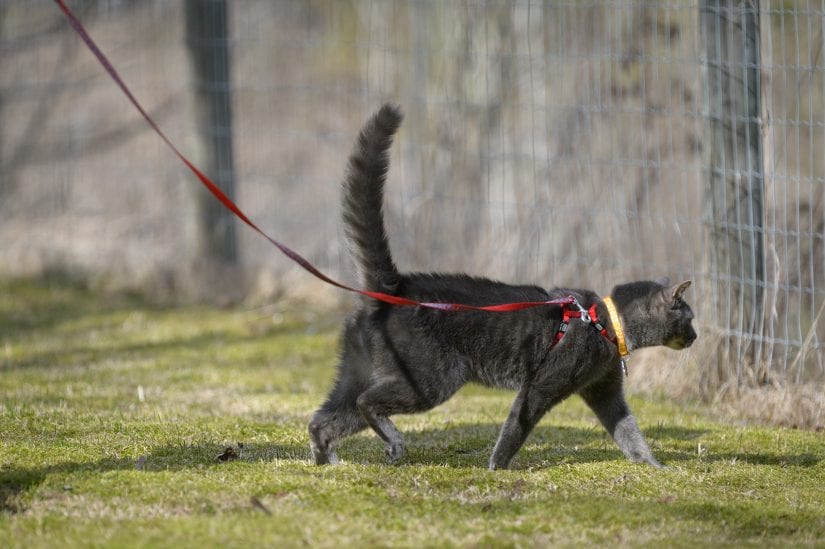
A dog may show aggression like growling, barking, lunging or biting for many reasons. Aggression is a normal dog behaviour but it can cause stress, injury or pain to your dog, you or others.

Avoid things that cause aggression
Most aggression comes from fear. Look for things your dog reacts to aggressively and stay away from them. Strangers, men, dogs or someone trying to pet him might be scary. If they’re too scary your dog might react to make them go away. Learn how to reduce and manage aggression towards people (PDF) or aggression towards dogs (PDF).
Put safety measures in place
Put safety measures in place to protect other people or dogs from getting hurt. If your dog has bitten someone or another animal, teach him to wear a muzzle so you feel safe and others are safe. Muzzles are OK.
Seek professional help for your dog
Ask your vet or a reward-based humane trainer for help. Did you know the BC SPCA has standards for humane dog training (PDF)? We can help you find a good dog trainer through our AnimalKind program.
Read the BC SPCA position statement on animal training.
It takes time to help change a reactive dog’s behaviour. Here are some tips for dealing with dog reactivity.
Search the list of trainers the BC SPCA recommends and find a dog trainer who specializes in aggression:
- Go to animalkind.ca/find-services
- Click on “dog training companies by training need”
- Choose “aggression” from the drop-down list
Transitioning an outdoor cat to an indoor cat can be stressful. For the well-being of everyone involved it is best when done gradually. Start by allowing them free access to the indoors at any point in the day. Make the home as enjoyable as possible with toys, scratching posts, plants and more (check out our “DIY Cat Enrichment” (PDF) for some ideas). The goal is to make the the inside of your home as fun as possible to decrease any stress your cat will be feeling.
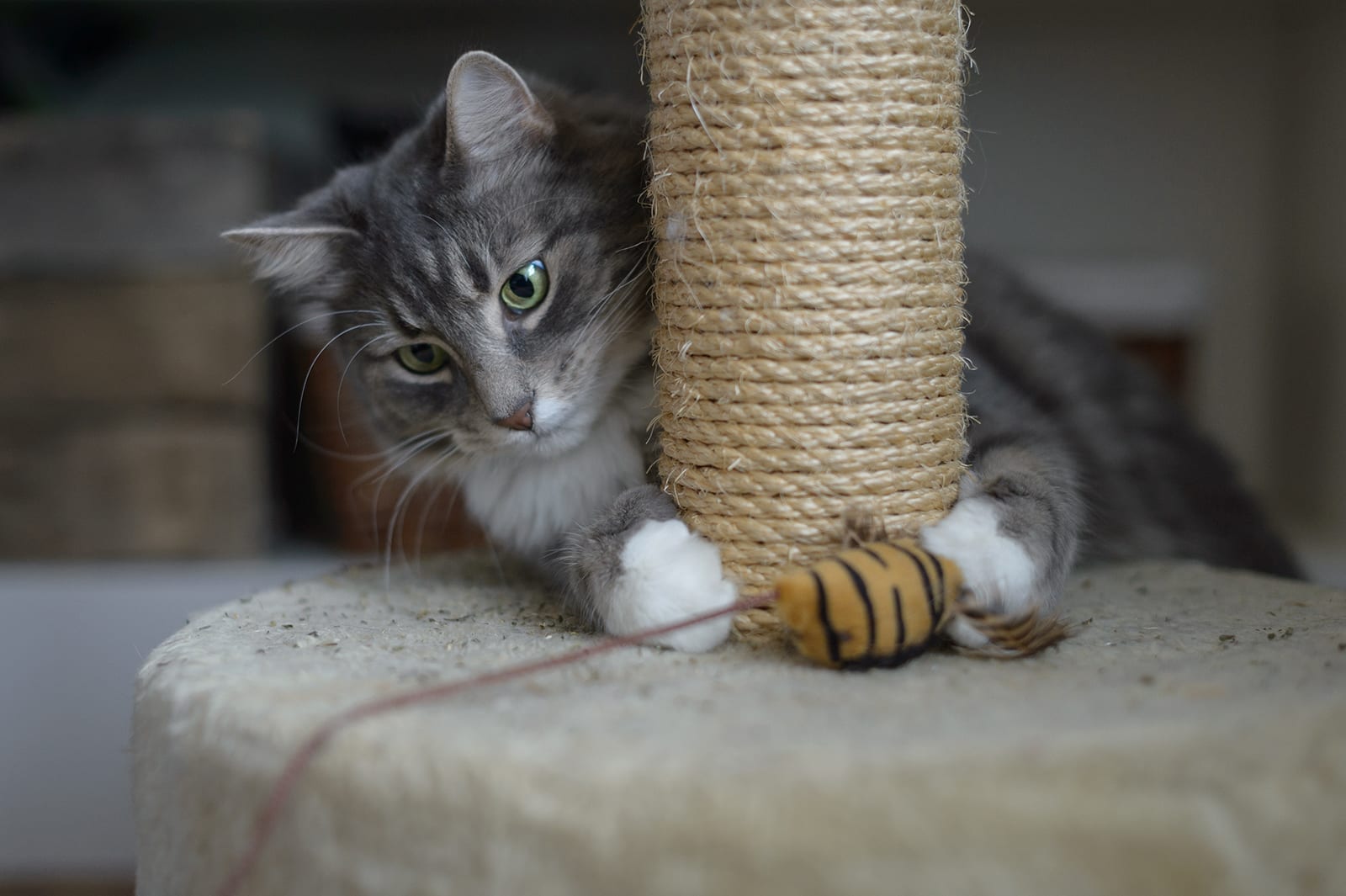
Additionally, you can encourage your cat’s hunting instincts inside the home by feeding them with food puzzles and playing with toys designed to mimic the movements of birds and mice. Outdoors, cats have the opportunity to climb and perch. In order to provide a similar environment inside, add scratching posts, cat trees and perches near doors or windows where they can see outside.
It’s important that a cat has the opportunity to express their innate behaviours when they are kept indoors. A catio is the perfect way to help transition an outdoor cat into the home as it provides the stimulation of an outdoor environment while protected. We have step-by-step guides to help you build a catio.
If your cat is still showing signs of wanting to go outdoors, leash-train your cat and enjoy walks together.
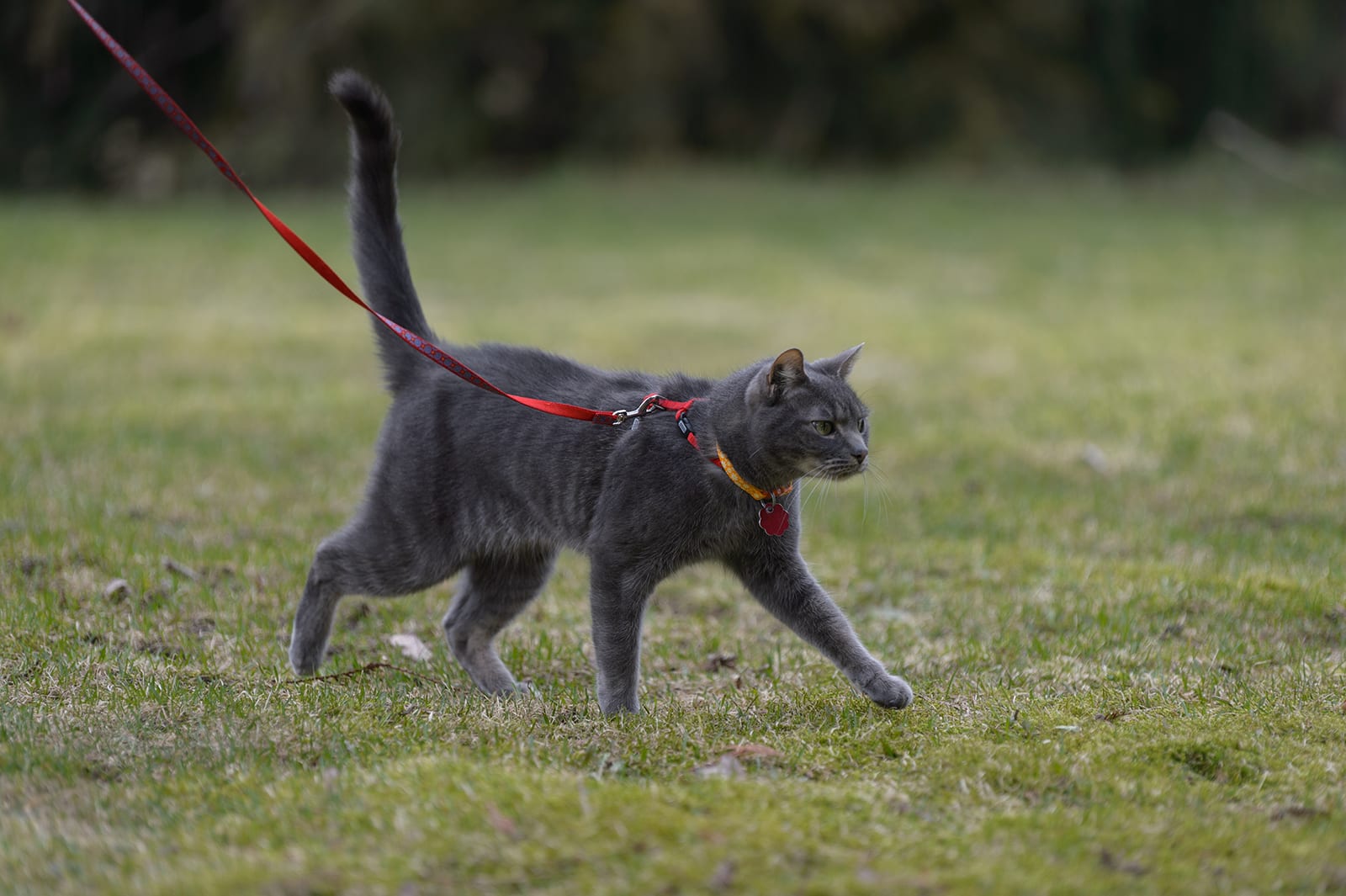
Is your pet’s microchip, tattoo or license registered with the BC Pet Registry? Updates can be made at any time. Registered users can also add additional forms of identification (ID) to their pet profile.
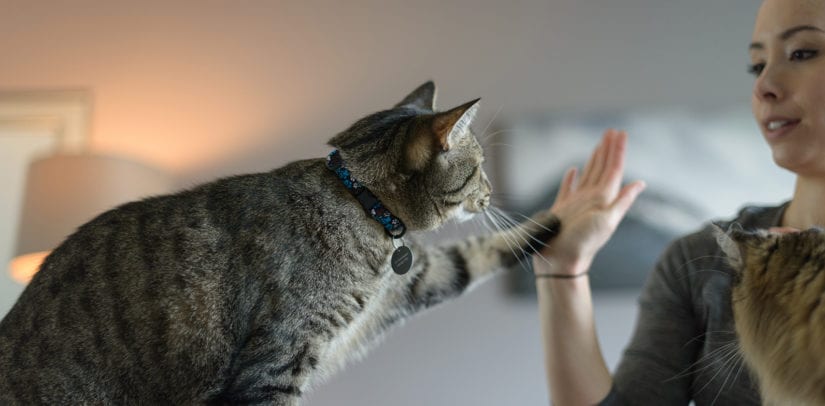
Contact your veterinarian
Call your veterinary clinic so they can update their records. You can also register your pet’s tattoo with the BC Pet Registry.
Contact your municipal animal control office
In most municipalities, you must license your dog. Contact your local animal control office (e.g. City of Vancouver Animal Control) to update your phone number, address or family members on file. You can also register your pet’s municipal license with the BC Pet Registry.

Cats are wonderful companions and giving a cat a home is a wonderful event, but it is important to remember that cats can be very timid and afraid when transitioning into a new home. When you arrive home, go straight to a small room where your cat can stay for a few days. There should be no places to hide in this room except for a crate or their carrier box.
The room should have a litter box, food and water bowls. Cats do not like to eat near their litter box so keep the food bowls and the litter box away from each other.

Tips for introducing your cat to her room
- Open the crate or setup the Hide, Perch & Go™ box you got from the BC SPCA and let your cat out. Let her explore the room.
- Place the crate near a wall.
- Sit on the floor and quietly observe.
- Your cat may come to you right away or go in her crate. Do not hold, restrain or force her to do anything.
Leave your cat in the room. You’re excited, though being patient for a few days is the best and most loving thing you can do.
Remember a new cat coming from an animal centre may have just experienced a difficult time in their life. They have lost their home and routine. Give your cat the time and space she needs to get used to you and her new surroundings.
Step 1
- Go to the room as often as you can.
- Bring gifts such as healthy and tasty food treats or toys (e.g. feather stick, cat ball) every visit.
- Every person in the household should take a turn doing this.
- Sit on the floor and place these treats near you or wave the toy around.
Step 2
- Wait for your cat to come to you – DO NOT grab or attempt to hold the cat.
- Talk to her – a high-pitched but quiet voice is always more reassuring for cats.
- Try coaxing her out.
- If she comes to you, pet her gently under the chin.
Every cat is different. Some may show you love and climb on your lap right away. Others may stay in hiding and watch you from afar until they feel safe. Take your cues from your cat. Let her make the decision of how much interaction she’s comfortable with her. The adjustment may take hours, days or even weeks. For more tips download our our care sheet (PDF).

Bringing a new dog into your home is an exciting time. For a dog going into a new home, it will be stressful. You know where everything is and you’ve been through your home lots of times. For a new dog this will be the first time he’s seen your living room, your kitchen, or even seen your cat.
Remember everything is a first for him in your home. Think of it being like when you moved into a new home or got lost in a new town. Have patience, understanding and be forgiving if your new dog doesn’t know something.
To make it easier on your new dog and to help him get use to your home, it’s best to plan for his arrival and his first few days. Below are some ideas of what you will need to get and plan for.
Want to print this page as a checklist (PDF)?
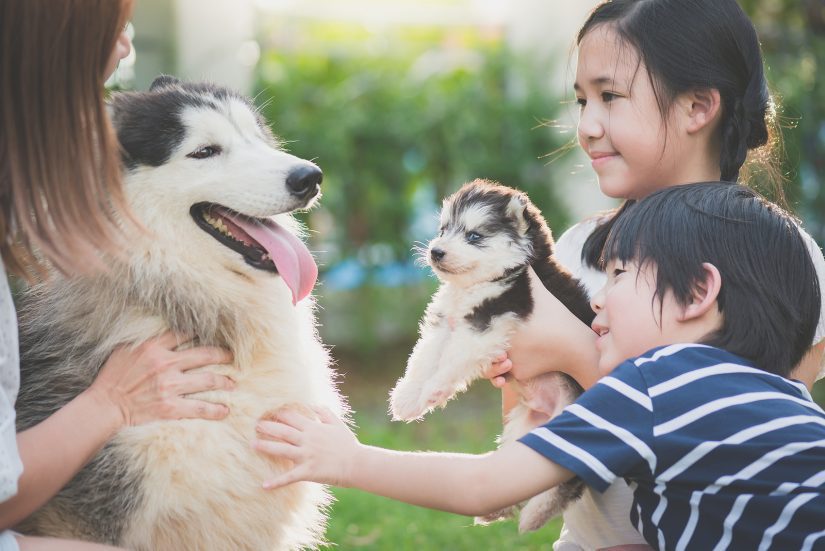
Before you bring your new dog home
Dog supplies needed
- Food: Make sure you have some of his previous food so you can mix it with his new food if it is different. Switching to a new food without a slow transition can cause diarrhea.
- Food & water bowls: Have the right size bowls for your dog. Check with your veterinarian to see if your dog’s bowls should be elevated off the ground.
- Collar & harness: Put a collar on your dog even if you only walk him on a harness. Collars will have his I.D. tag and license on. Do not use a choke, prong or any collar that causes pain, stress or injury.
- Dog toys: Toys are an important part of helping your dog engage in normal dog behaviour. Get toys that are appropriate type, size and safe for your dog.
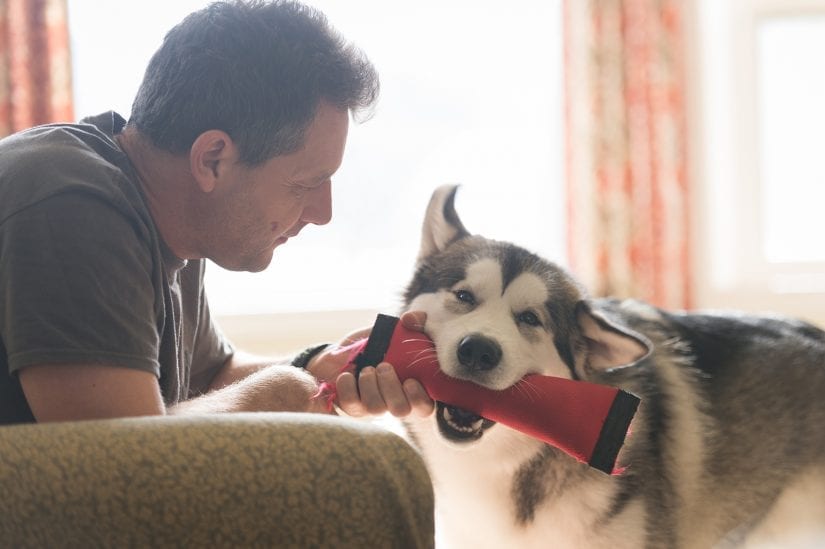
- Dog puzzle feeding toys: Also known as smart or work to eat toys, they’re a fun way for your dog to work to get his food. These feeding puzzles engage your dog in doing natural scavenging behaviour. Some dogs will need to be shown how to use them at first.
- Kong: Kongs that are the right size for your dog are great smart feeding toys. You can fill them with food and freeze them for your dog.
- Bed: Get one or two comfortable beds and have them ready for when he comes home. Don’t forget his bed from the animal centre, other home or rescue. It might be used however its familiar and will help when he moves in to lower stress.
- Crate: Make sure the crate you get is the right size for your dog. A puppy will need a smaller one and as he grows, he’ll need more space. Your dog must be able to stand up, turn around and lay so he can stretch out comfortably in his crate.
- Pee pads/puppy pads: If you have a puppy be prepared. Where will you put the pee/puppy pads, how will your pup know where they are?
- Exercise pen: It’s always a good idea to use an exercise pen for puppies or new smaller dogs. These are ideal when you can’t supervise and you’re working housetraining and chewing issues.

Things to plan for before your new dog comes home
Where will he…
- Sleep
- Go to the washroom – if it’s a puppy where will the puppy pads be, where will he go when outside?
- Stay during the day – a crate, a dog proof room, at day care, with you?
- Stay during the night – a crate, a dog proof room, with you?
- Crate – will his crate be in the kitchen, living room or your bedroom?
- Walk – where will you walk him, can he go to the dog park, what if he doesn’t like other dogs?
How will you…
- Housetrain an adult dog or puppy – what’s your schedule? Puppies need out more often.
- Reward him – for going to the washroom outside, where will you keep treats so they’re handy.
- Train him – yourself or hire a qualified humane trainer.
- Crate train – not all dogs are crate trained, you’ll need to train him & crate train puppies.
- Introduce to cat – has he met cats before, how do you introduce and keep your cat safe?
- Handle your pup – it’s important to teach your puppy to be good with handling, they’re not born liking it.
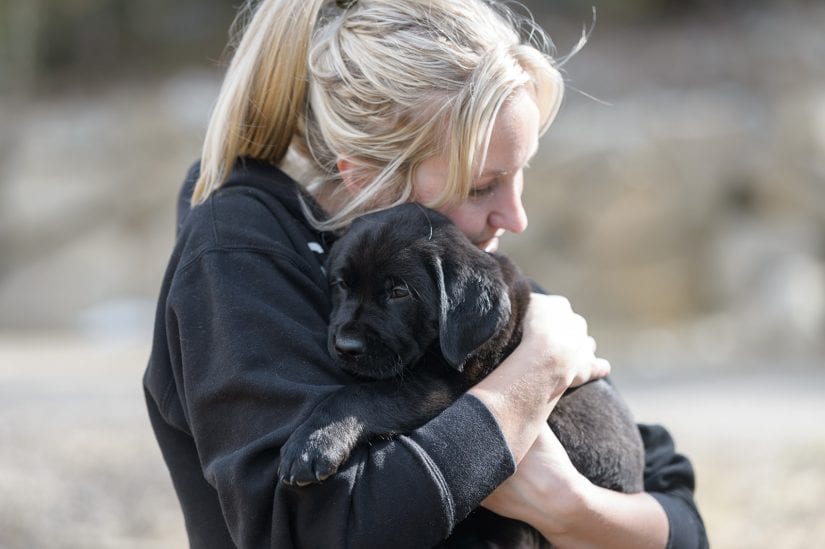
How…
- Much food – should you feed him, when and how often?
- Long in crate – how long will your dog or pup be in a crate? Too long is cruel and not fair.
- Dog proof room – setup a room with safe dog toys, bed, food & water when you can’t supervise.
- Trainers – how will you choose a qualified humane trainer?

What about…
- His things from animal centre, other home, rescue – take as many of his things as you can. His bed and toys will help when he has them in his new home.
- Routine – set up a schedule so your dog learns your routine, this will help make things predictable for him.
- Veterinarian – when will he go for first visit, which veterinarian will you use?
- Behaviour problems – what will you do if there are some you didn’t expect?
- Elevator – has he been in an elevator before? How can you help him if he’s scared?
- Daycare, dog walking, grooming – learn what questions to ask when choosing pet services
Remember, you are not alone anymore when choosing a pet service like daycare, boarding, walking, or grooming that prioritizes the welfare of your pet. Take advantage of the resources available at the BC SPCA AnimalKind website.
It’s important to try and think of everything you might need for your new dog. Get your home set up beforehand, so when your dog does come home you can focus on him and helping him move in.

New dog moving in
Day one
-
- Bring him in the house on leash and let him sniff – let him get use to your home.
- Take him out regularly for bathroom breaks – don’t forget to reward him with a treat after he goes.
- Remind kids how to approach him and that the house is all-new to him.
- Take him for a walk – bring treats and let him sniff the neighbourhood.
- Teach family, neighbours and strangers how to approach your new dog for petting.
- Put his bed and some toys from his previous home out.
- Your goal during his first day is to help him learn about your home and have good experiences.
Note – don’t bring your new dog or puppy home and just leave him alone while you go out.
What’s next?
- Veterinarian visit – take your dog to the vet for a checkup and a microchip if he doesn’t have one.
- Learn about basic dog care.
- I.D. your pet and get your dog license – visit your local animal control and get a license. It’s the law and it will help get your dog back to you if he ever gets lost.
- Contact the animal centre, previous owner or rescue with questions.
- Have fun!
Print this page as a checklist
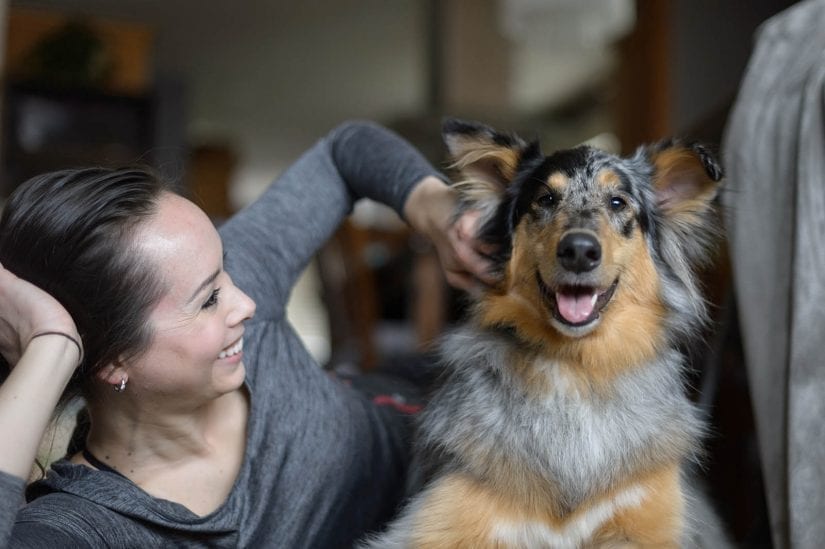
If your dog has not been indoors for a long time
Start slowly. Your dog needs to get used to being indoors. Put a leash on her and bring her inside for short periods, even for just a few minutes to give her a tasty treat.
Toss treats in the doorway to encourage her to enter if she is too nervous. Never force her. Gradually have her spend more time inside with you. Once she is relaxed, give her time off leash in the house.

Feeding helps a dog get comfortable with being indoors
- Provide your dog with a mat when you feed her outside.
- Feed your dog each meal on the mat; she can be standing, sitting or lying on the mat.
- Remove the mat once she is finished eating. Bring it out again with the next meal.
- Once she is comfortable eating on the mat, bring it indoors along with your dog on a leash at feeding time.
- Feed her on the mat in the house.
- If she doesn’t want to come inside, continue feeding on the mat but move it closer to the door.
- Toss treats in the doorway for her to eat, while allowing her to go back outside if she’s too nervous.
- Your goal is to have your dog eating on her mat in the house and relaxing.
If your dog will come indoors, but she pees inside, chews on things, barks or jumps on people
Learn how to house train an adult dog that is used to living outdoors.
Was your dog outdoors because of a behaviour problem? Learn about dog behavioural issues and how to fix them.
What are some issues with keeping a dog outdoors?
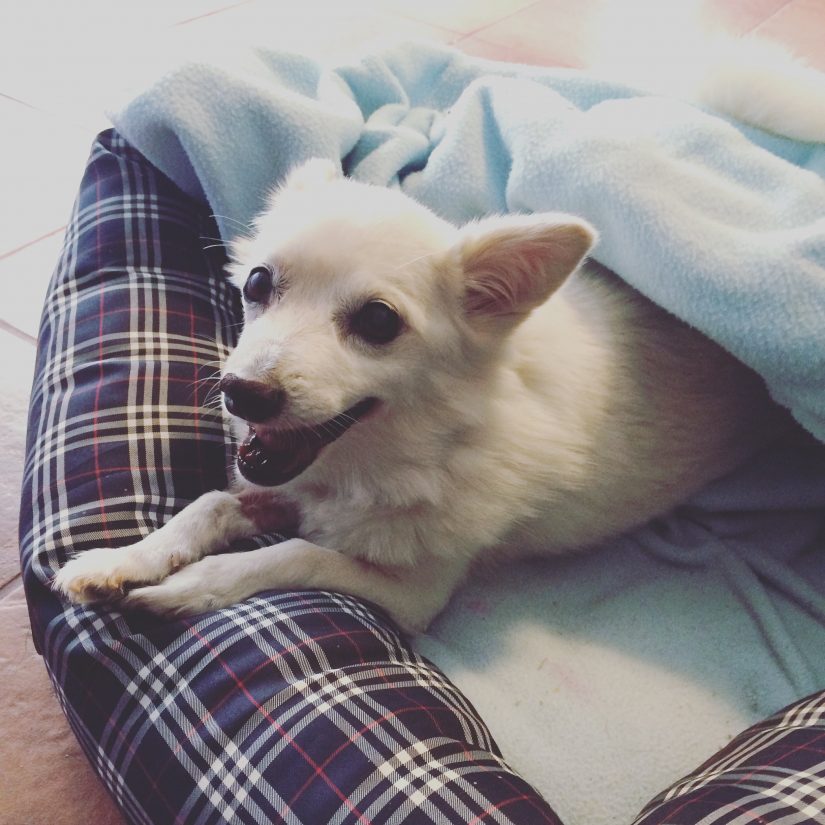
Crate training or confinement training is important when you get a puppy or a new dog. Restricting their run of the house will help you teach them what to chew and what not to, as well as helping you house train your new pup or dog.
Learn more about crate training your puppy or dog, watch our video:
Most cats love to stretch and scratch something. Scratching is important for cats — it’s a natural behaviour. Scratching also helps shed the outer covering on their claws and scent mark.
Instead of trying to stop them from scratching, give them something to scratch (PDF). Put scratching posts close to an entrance or near where your cat sleeps. They usually stretch and scratch after waking up or when entering a room.
If they’re using your couch as a scratching post, interrupt them. Don’t scare them. Make sure to reward them for scratching their post.
Never use harsh verbal or physical corrections with your pet. If you feel like nothing is helping, talk to your vet about safe and humane nail covers.

Declawing cats
The BC SPCA is against declawing cats. A cat’s nails are not like fingernails — they’re attached to the bone. Therefore, declawing is a serious surgery. It’s like removing a part of your finger at the knuckle. Read the BC SPCA position statement on cosmetic and other non-therapeutic alterations (PDF).
The practice of declawing cats is now banned in B.C., unless it’s deemed necessary as an appropriate medical therapy.
To learn more, watch our video on cats and scratching:
Dogs bark for many different reasons. Figuring out the why behind your barking dog is the first step to treating the problem. Here’s a list to start with:
-
- Is your dog suffering from boredom?
- Does your dog have anxiety being alone?
- Is your dog fearful?
- Is your dog attention-seeking?
- Is your dog a ‘watchdog’?
1.) Boredom barking
Feed him with smart toys. Make sure he’s getting exercise and mental stimulation.
2.) Anxiety barking
See your veterinarian for diagnosis and treatment plan.
Find more information in our fact sheet Separation anxiety – Preventing and reducing dog anxiety when alone (PDF).
3.) Fear barking
Teach your dog that the things he’s afraid of are fantastic and predict fantastic things. Choose a humane trainer to help you and your dog.
Did you know the BC SPCA has standards (PDF) for humane dog training? We can help you find a good dog trainer through our AnimalKind program.
4.) Attention-seeking barking
Many dogs bark to get attention or to make their guardian do something such as take them out or play with them.
To stop attention-seeking barking, stop rewarding him for it.
Don’t throw the ball, open the door or let him out of his crate if he is barking. These are all rewards to your dog.
He barks = ball goes away
He’s quiet = ball gets thrown
5.) Watchdog barking
Teach him to do something that isn’t compatible with barking. Teach him to get his toy so he can’t bark because he has his toy in his mouth.
Give him a time out
Teach him any time he barks more than a few times it results in him going in the penalty box.
Time out
- After he barks say “quiet”
- Next bark say “too bad” and immediately put him in another room
Eventually he’ll learn his barking causes him to be removed from the action.
Veterinary help for barking dogs
Deaf, geriatric and dogs suffering from separation anxiety may all bark excessively. Check with your veterinarian to see if there are any health reasons for the excessive barking.
Caution
Do not use any tools or techniques that cause physical or emotional distress, such as electronic shock collars. Learn why your dog is barking and then train him or provide enrichment. Barking is a natural dog behaviour.
Resources
BC SPCA Position Statement Animal Training
Barking – Preventing or reducing excessive dog barking (PDF)
When there’s a new kitten at home, it can be tempting to play with her with your hands – don’t! Your cute kitten will grow into an adult cat who might think biting your hands is a natural, normal thing to do. Instead, use big stuffed toys and wand toys to teach your kitten to play with their toys and not your hands and arms. Learn more, watch our video:
Spaying or neutering your dog, cat or rabbit doesn’t just help prevent accidental litters. It also has health and behavioural benefits for your pet.
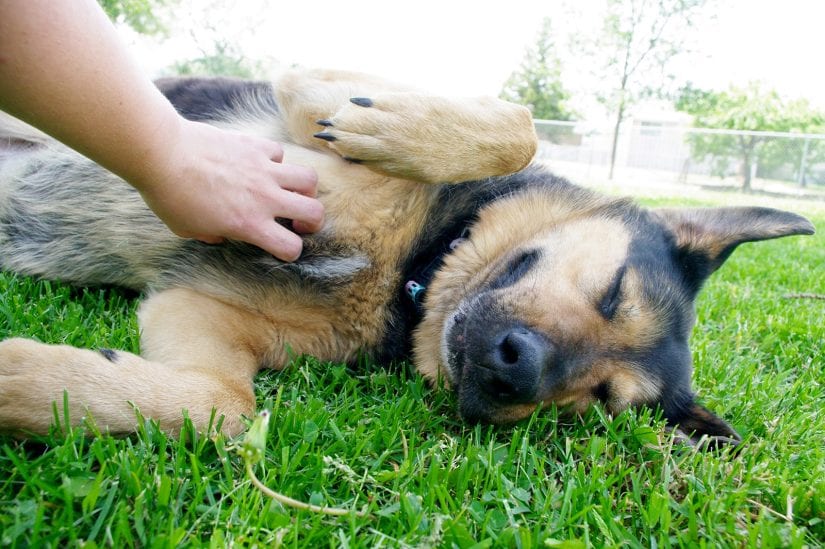
Benefits of spaying and neutering your pet
Generally, neutering decreases aggressive behaviours in pets
- Neutered dogs are calmer and less likely to bite, attack or get into dog fights.
- Neutered cats and rabbits don’t have the drive to mark and protect their territories and are less likely to spray or get into fights, resulting in fewer injuries.
Spaying ends the heat cycle in females
- Heat cycles are usually twice a year for dogs, and result in many unwanted behavioural changes including possible aggression.
- Cats generally go in and out of heat every three weeks between January and November.
- Female cats in heat can howl relentlessly, may try to escape to mate, spray or urinate inappropriately and attract unwanted male cats.
Spaying and neutering lowers the chance of reproductive health problems
- Studies show that spayed/neutered pets, on average, live longer.
- Spaying eliminates the risk of ovarian and uterine cancer and pyometra (life-threatening infection of the uterus) in dogs, cats, and rabbits. Up to 80% of unspayed rabbits will develop uterine cancer.
- Spaying reduces the risk of mammary cancer in cats, dogs, and rabbits.
- Neutering eliminates the risk of testicular cancer in all species and lowers the risk of prostate problems in male dogs.

Spaying and neutering eliminates the drive to reproduce
- The likelihood of your male pet wandering away or escaping will be decreased.
- Male dogs can smell a female in heat up to a kilometre away.
- Once neutered, your pet will be less frustrated and may become a calmer companion.
Spaying and neutering provides an opportunity to have other important procedures performed
- Other procedures, as necessary, can also be done at the time of the operation.
- This includes procedures such as an identification tattoo or microchip, teeth cleaning, hernia repair and baby teeth removal.
Spaying and neutering prevents accidental pregnancies
- Research shows that the majority of cat pregnancies are unintended.
- Pregnancy is hard on the mom physically. Prenatal care, birth complications, and puppy/kitten care can be costly.
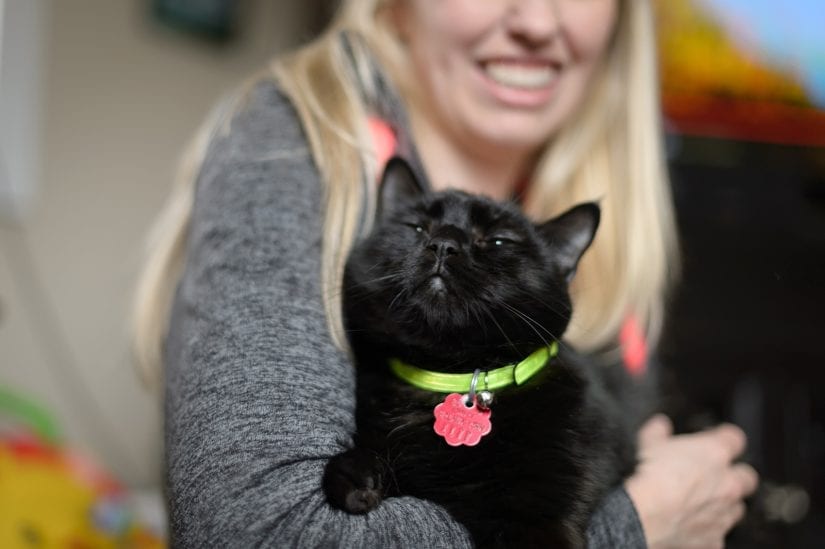
Spaying and neutering helps your community
- Research shows that, as an individual, you help reduce overpopulation issues in your community when you spay or neuter your pet.
- Spaying and neutering your pet helps reduce the number of stray or unwanted animals in your community.
- Reducing the amount of stray animals helps prevent other pets and wildlife from being injured or killed in fights.
- Fixing your pet helps lessen the amount of stray animals getting into or causing car accidents, getting into garbage cans and damaging property.
Learn how fixing your cat helps combat the cat overpopulation problem and how you can take action in your community.
But aren’t there also some risks to spaying and neutering?
Yes, any surgical procedure carries some risks. However, the overall benefit outweighs the risk for most animals. Talk to your veterinarian about the best choice for your pet.
- Risks of surgery and anesthesia include pain, bleeding, infection, the incision opening up, or a bad reaction to the drugs used.
- Spaying and neutering removes reproductive hormones from your pet’s body. This has many benefits but also has minor effects on bone development and other body systems.
- Several recent studies show higher rates of some bone and joint problems and cancers in purebred dogs spayed and neutered as puppies. These studies have attracted a lot of attention.
- The studies involved small numbers of dogs who were already predisposed to the problems being studied because of their breeds. More research is needed to understand these risks.
- If you are concerned about risks of spaying and neutering, don’t just consult the internet. Talk to your veterinarian about what is best for your pet.

I still have questions about spaying and neutering
Shouldn’t a female cat/dog have a litter before being spayed?
Will spaying/neutering change my pets personality?
Will my pet become fat/lazy once it is fixed?
What does spay or neuter mean?
When should my cat/dog/animal be fixed?
What does it cost to spay/neuter my cat/dog/animal?
Find out more about the benefits of sterilizing your pet and how February is spay/neuter awareness month.
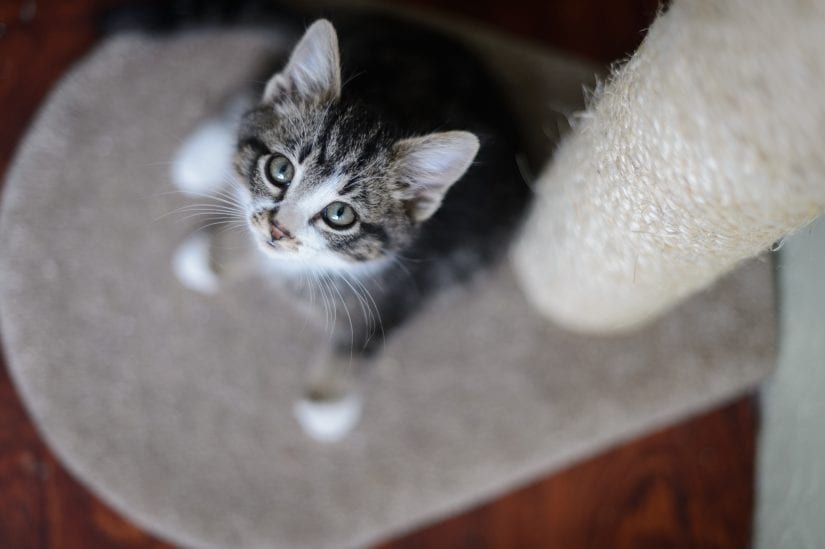
The BC SPCA recognizes that pet-friendly housing is limited in B.C. To make it easier to work together to create humane communities, we have developed resources to help renters demonstrate themselves as responsible guardians and assist strata councils and property owners in effectively managing their buildings and suites.

Learn more about finding pet-friendly housing for you and your pet.
Start with determining their age, then decide if you should leave them with mom, take them in, or call the BC SPCA. If they are very young, it’s safest to leave them in place until you can determine whether their mom is still caring for them. If you do take them in, their care will depend on their age.
Learn when to wait, when to act and how to care for kittens you find, watch our video:
Most antifreeze is made from ethylene glycol. Ethylene glycol-based antifreeze tastes sweet but is highly toxic to both humans and animals. To help protect pets, wildlife and children, the provincial government passed a regulation that requires the addition of a bittering agent to all antifreeze sold at the consumer level in British Columbia. The regulation, the first of its kind in Canada, took effect in 2011.
While a bittering agent may make antifreeze less appealing, ethylene glycol is still harmful, even in small amounts. Consumers should be encouraged to use antifreeze made from propylene glycol instead. Propylene glycol-based antifreeze is slightly more expensive, but is considered non-toxic to pets and wildlife.
Antifreeze facts
- Antifreeze is the brightly coloured liquid that is poured into radiators and circulates through engines to keep them operating at safe temperatures.
- All cars, trucks, buses and farm tractors use antifreeze to help prevent their engines from freezing over in the winter and overheating in the summer.
- Conventional antifreeze contains ethylene glycol, which is very poisonous to people and animals.
- Even in the smallest amounts, antifreeze can have a very harmful and often fatal effect on your pet. A single teaspoon will kill a cat and a few tablespoons are enough to kill a medium-sized dog.
- Antifreeze leaks from automobiles and is spilled in garages and onto pavement due to careless fluid changes.
- In some instances, antifreeze has been used to deliberately poison animals as an act of cruelty.

What do I do if my pet consumes antifreeze?
Animals who have ingested antifreeze go through two stages of symptoms. If untreated, death from kidney failure will occur within days.
If you suspect your animal has ingested antifreeze, seek veterinary aid immediately. YOUR PET WILL NOT RECOVER ON THEIR OWN. Time is critical as within minutes your pet will begin to experience kidney damage. Learn what to do if your pet has consumed antifreeze.

Use animal-friendly antifreeze
Fortunately, there is a less toxic alternative to the ethylene glycol-based antifreeze that is most commonly used. Animal-friendly antifreeze contains propylene glycol and is anti-corrosive, biodegradable and recyclable. This makes it a better choice for the safety of pets and wildlife, personal health, vehicle engine protection and the environment. It may cost a few dollars more but it could save lives. Make the switch today!
Customers can request pet-friendly propylene glycol antifreeze from their automotive service centre or purchase it separately and ask that their auto centre to install the product.
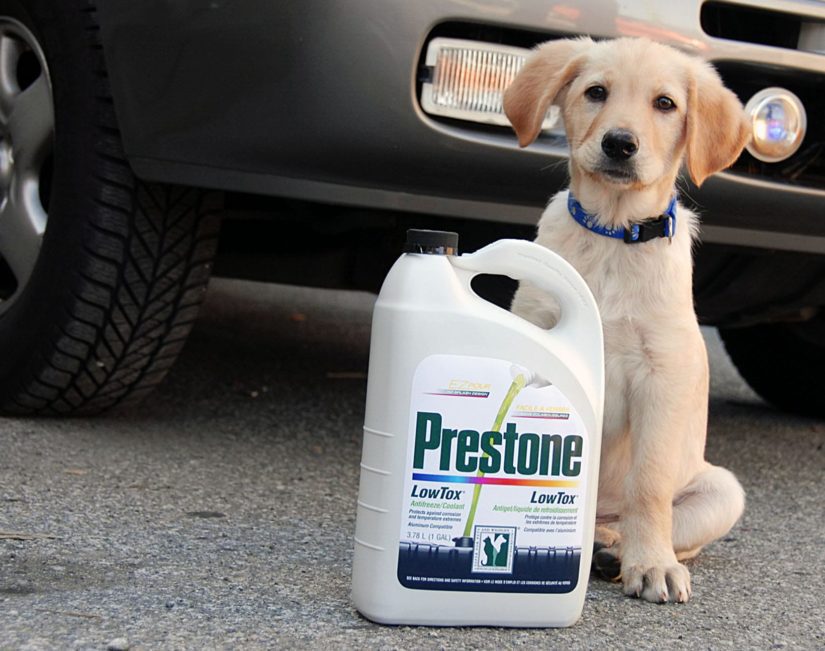
What can I do to help?
- Download our poster today and help spread the word! (PDF)
- Mop up spills and dispose of antifreeze properly.
- Take used ethylene glycol or propylene glycol antifreeze to an auto centre that recycles antifreeze.
- Never pour any used antifreeze (ethylene glycol or propylene glycol) down storm drains, sinks, toilets or on the ground. B.C. has a network of collection facilities that accept used antifreeze (ethylene glycol and propylene glycol), oil, oil filters and oil and antifreeze containers at no charge. Visit the B.C. Used Oil Management Association website to find a location near you or contact the Recycling Council of B.C. at 1-800-667-4321 for a list of outlets.
- Find out more about cold weather pet safety and how to keep your furry family members safe during cold weather.
 Act quickly! If you suspect your pet has consumed antifreeze you must take your pet to a veterinarian immediately. Animals who have ingested antifreeze go through two stages of symptoms. If untreated, death from kidney failure will occur within days.
Act quickly! If you suspect your pet has consumed antifreeze you must take your pet to a veterinarian immediately. Animals who have ingested antifreeze go through two stages of symptoms. If untreated, death from kidney failure will occur within days.
Stage 1
In the first hour after drinking antifreeze, animals will stagger, act uncoordinated or disorientated, possibly bumping into things. They may also try to vomit. The quicker you get to the vet the better chance your pet can be successfully treated.
Stage 2
After stage 1 it may appear your pet has recovered. However, in this stage the antifreeze is being processed by the liver, creating substances that cause permanent kidney damage as well as signs of central nervous system damage. The more antifreeze the pet has ingested the more damage. Eventually the animal will lapse into a coma. Death usually occurs within 48 hours.
Veterinary care
Immediate treatment is critical. If you suspect your pet has been poisoned, take your pet to a veterinarian. Your pet will NOT recover without treatment.
Learn about pet-friendly antifreeze
Congratulations! Cats are wonderful companions and giving a cat a home is a wonderful event. A new home with new smells, people and furniture means your cat may feel anxious, stressed and scared.
How to help your new cat adjust to her new home
When you arrive home, go straight to a small room where the cat can stay for a few days. There should be no places to hide in this room except for a crate. The room should have a litter box, food and water bowls. Cats do not like to eat near their litter box so keep the food bowls and the litter box away from each other.
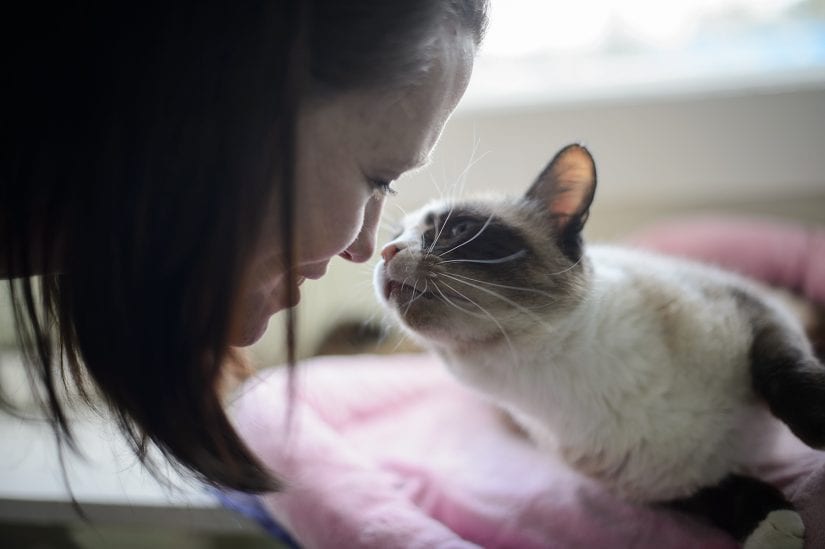
Tips for introducing your cat to her room
- Open the crate and let your cat out. Let her explore the room.
- Place the crate near a wall.
- Sit on the floor and quietly observe.
- Your cat may come to you right away or go in her crate. Do not hold, restrain or force her to do anything
How to help your new cat bond with you
Leave your cat in the room. You may be excited but being patient for a few days is the best and most loving thing you can do.
Remember a new cat coming from another home or animal rescue, may have just experienced a difficult time in their life. They have lost their home and routine. Give your cat the time and space she needs to get used to you and her new surroundings.

Step 1
- Go to the room as often as you can.
- Bring gifts such as healthy and tasty food treats or toys (e.g. feather stick, cat ball) every visit.
- Every person in the household should take a turn doing this.
- Sit on the floor and place these treats near you or wave the toy around.

Step 2
- Wait for your cat to come to you – DO NOT grab or attempt to hold the cat.
- Talk to her – a high-pitched but quiet voice is always more reassuring for cats.
- Try coaxing her out.
- If she comes to you, pet her gently under the chin.
Every cat is different. Some may show you love and climb on your lap right away. Others may stay in hiding and watch you from afar until they feel safe. Take your cues from your cat. Let her make the decision about how much interaction she’s comfortable with. The adjustment may take hours, days or even weeks.
Learn more about how you can welcome home your new cat and bond with them (PDF).
Sometimes, cats don’t like being petted, or they’ll allow it for a little bit, then bite or scratch. Teach your cat to like being petted using treats and their food. They’re not born liking being petted or touched, but we can teach them.
Learn more about how to pet a cat, watch our video and read our article:
To understand more about petting aggression, download Petting aggression when it comes to petting, not all cats are created equal (PDF).
Is this new behaviour?
Cats learn where to go to the bathroom and how to cover it as kittens. It’s easy to teach cats to use a litter box because they want to be able to bury their waste. If they stop using their box it’s a concern. They don’t stop out of spite or disinterest; there’s always a reason.
Have you taken your cat to see a vet?
If not, get him checked by a vet, especially if he’s always used his litter box and now he refuses to use it. If so, and if your vet says he’s healthy, ask how you can help your cat or for a referral to a professional.
Try these cat litter box tips:
1.) Location, location, location
Make sure the cat’s litter box is in a quiet location. Place it in a corner where no one can surprise or scare him and somewhere that isn’t busy. Keep it away from his food.
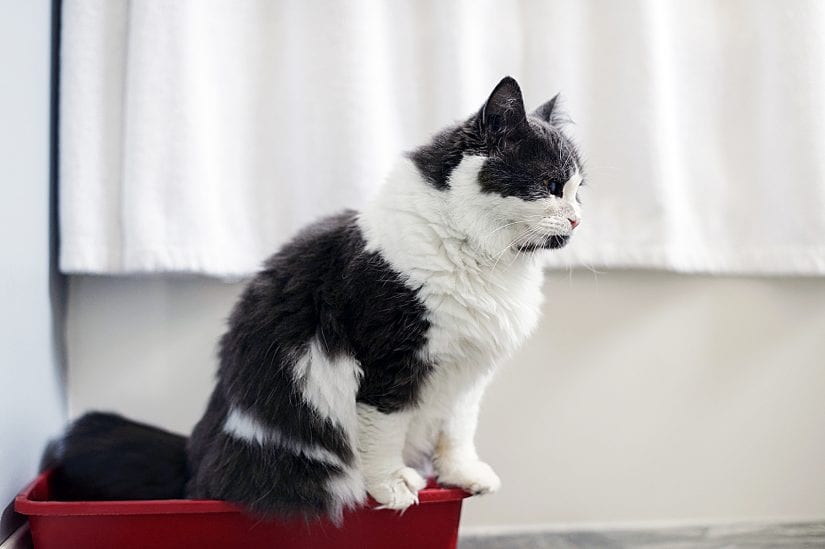
2.) Size does matter
What size is the right size litter box for your cat? Rule of thumb is litter box should be one and a half times longer than your cat. Go bigger if you’re not sure!
3.) Type of box
Think of what your cat needs, not what you prefer. A covered litter box holds the smell in, but this could prevent the cat from using his box. Boxes with high sides might be too difficult for older cats to get into or out of. Self-cleaning boxes might be too scary for some cats. And some cats don’t like plastic liners. A simple box at least four inches deep, the right length for your cat and without a cover is ideal.
4.) How many boxes
If you have more than one cat you should have a box for every cat, plus one extra.
5. ) Litter type
Try different types of litter to see what your cat likes. Put four litter boxes out with different types of litter and see which one he chooses most often. Try different amounts of litter in the box, as some like deep litter while others might not. Stop using the freshener you’ve been using and when you find a litter he likes, stick with it.
6.) Clean it
For many cats a clean litter box is important. Try scooping it twice a day and cleaning it once a week. Some cats may not use it if there’s anything in it.
7.) No bad cats
Remember, you may think your cat is being bad and doing it on purpose. This isn’t true! There is always a reason why your cat is missing the mark. Find out why and help him, never yell or spank your cat.
Find more on litter box issues in our fact sheet Litter box problems treating and reducing cat inappropriate elimination (PDF) and in this video on how to get your cat used to their litter box.
When your dog pulls on his leash it can be frustrating and put both you and your dog at risk. Your dog might hurt his neck from pulling or you might slip and fall.
No-pull harness for dogs
A gentle and easy way to stop a dog from pulling is to use a special no-pull harness designed to prevent pulling. There are different types of no-pull harnesses on the market. Find one that works for you and your dog.
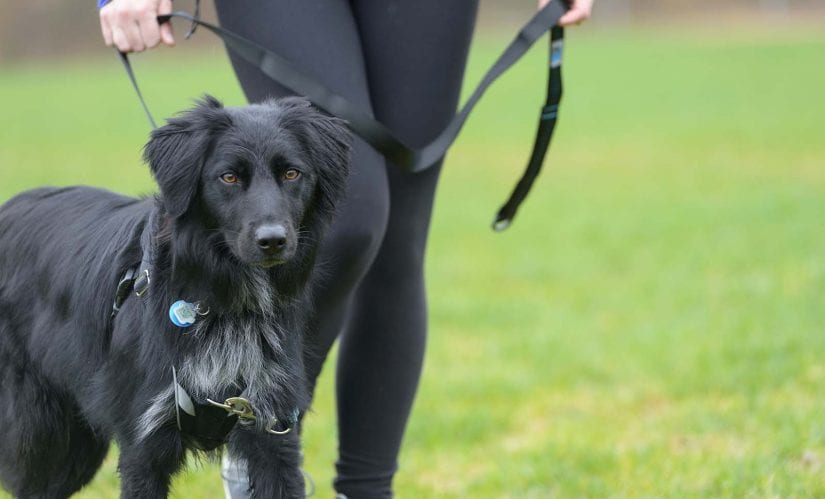
Training dogs not to pull
Train your dog not to pull on his leash. Dogs and puppies have to learn that it’s more rewarding for them if they don’t pull. A qualified, reward-based trainer can teach you how to train him not to pull and make it fun. Did you know the BC SPCA has standards for humane dog training? We can help you find a good dog trainer through our AnimalKind program.
Read the BC SPCA’s position on animal training.
Avoid prong collars
When a dog is wearing a prong collar and pulls, the sharp metal or plastic prongs stick into his neck, which causes pain. To make the pain stop the dog has to stop pulling. Prong collars cause fear and anxiety, and may make your dog afraid of you.
It’s always a good idea to look at the benefits and the costs when considering adopting a second kitten. A young kitten will do better with another kitten, but it will cost a bit more because you’ll have two. It’s not always extra work when you adopt two, but it is double the fun for you.
Find a second kitten through the BC SPCA’s adoptable animals page.
Learn more about adopting a second kitten, watch our video:
Buying an animal you have never seen in person can be dangerous (PDF). In pictures and descriptions, the animal might appear to be cute, happy and healthy. However, once you’ve exchanged money and the animal is shipped to you, you might be in trouble – search for animals to adopt from your local BC SPCA animal centre instead.
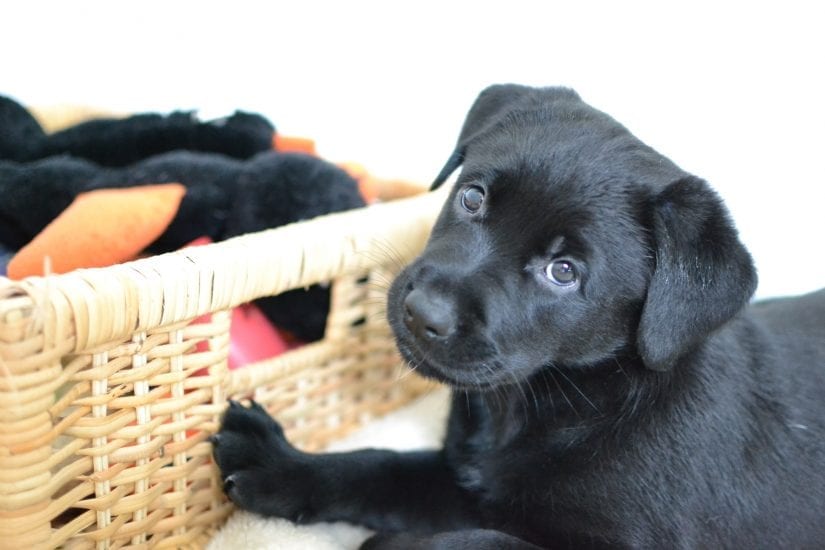
Issues related to buying an animal you’ve never met
- The animal might not be socialized to people or could have behaviour problems. This means they could bite or scratch and might never enjoy your company!
- An animal that looks healthy can be deceiving. They could have worms, parasites or even genetic diseases (PDF) with high costs and long-term heartache.
- What if the animal isn’t a good fit with you and your family? Are you prepared to put them through the process of being returned? What would you do instead?

If you’re adopting from a rescue, make sure you meet the animal in person – even if you have to drive for many hours to do so. Ask the rescue some key questions to make sure this animal is a good fit for you and your family.
If you’re buying from a breeder, visit the breeder’s home and facility. Do not trust pictures or scans of documents, these can easily be falsely created.
There are lots of things to consider before you get second dog:
- Is your dog ok with another dog living in his home?
- Does he just like his doggie friends at the park?
- Maybe fostering a dog will help you and your dog test the waters?
- What are the extra costs of having a second dog?
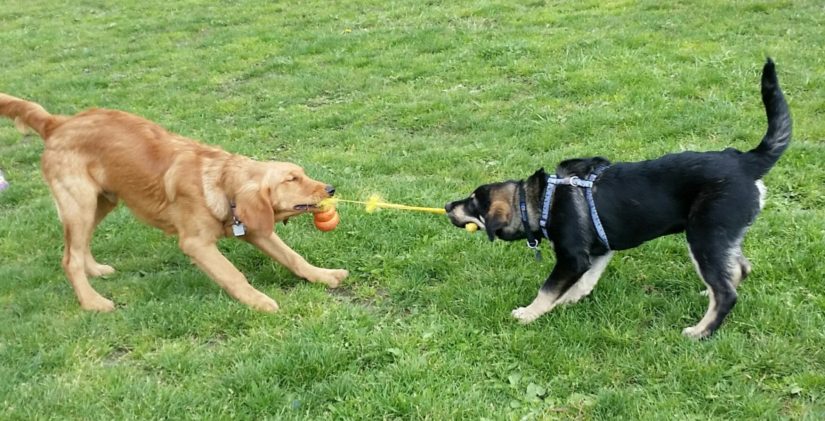
You may think it’s a great idea however your dog may not want a live-in buddy.
Learn more about whether you should get a second dog, watch our video:
The BC SPCA recommends that cats live indoors. Indoor cats have a longer life span than those that go outside. Whether you choose to let your cat out or keep them in, know how to provide them with the best environment to keep them happy and safe.
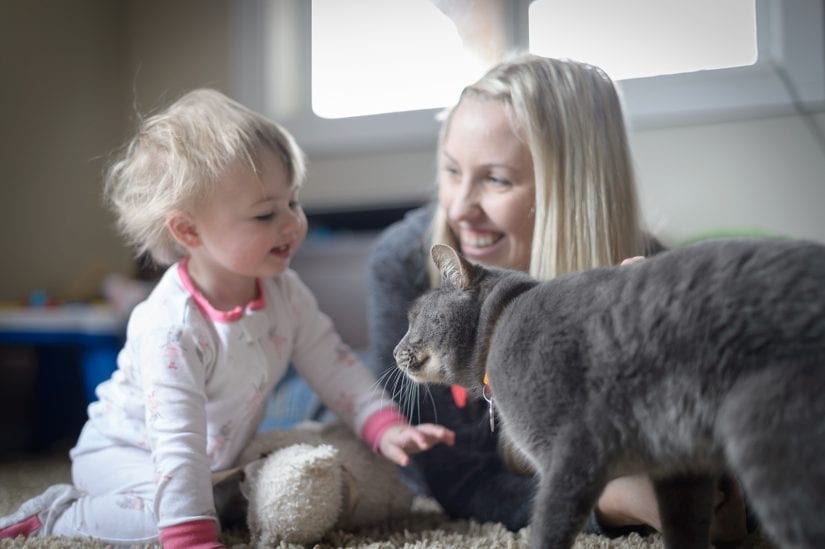
What’s the issue with indoor and outdoor cats?
Risks of letting your cat outdoors
- Other cats or dogs in the neighbourhood can cause injuries to your pet
- Busy streets and traffic can cause injury or death
- Exposure to contagious diseases and parasites
- Extreme weather issues
- Poisoning
- Pet theft
- Animal cruelty
- Eaten or injured by wildlife like coyotes, eagles or other predators
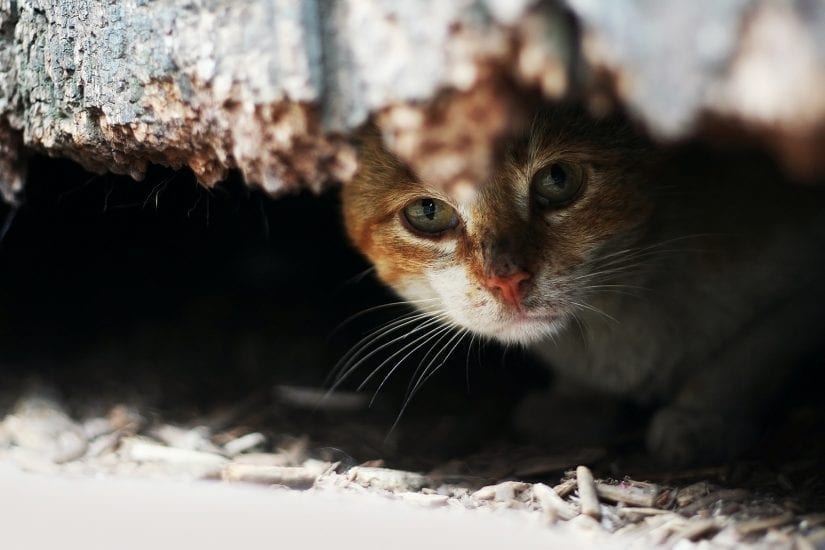
Outdoor roaming cats also cause
- Problems by digging in neighbour’s gardens
- Marking territory by spraying
- Prey on songbirds and other wildlife
Risks for indoor cats
- Depression
- Frustration
- Become lethargic if their environment does not provide enough stimulation
To prevent these issues, help your cat be a cat. Indoor cats need to do things in their home that let them hide, chase, climb, jump and pounce.

Tips to keep your cat happy, healthy and safe indoors
- Give your cat toys that are safe and stimulating.
- Use feathery and fake furry toys that move like small prey or toys filled with catnip.
- Rotate toys and new objects to ensure there’s always something novel
- Give your cat a scratching post with high perches. Put it near doorways or window.
- Spend time every day interacting with your cat. What does your cat like? Play or petting? Play with toys, games of chase and peek-a-boo. Train your cat.
- Cats need at least 15 to 30 minutes of play broken into short five minute sessions throughout the day.
- Plant a pot of indoor greens for your cat to munch on such as cat grass from seeds (oat, rye, wheat, barley) or catnip.
- Open screened windows to let fresh air in. Give her access to window ledges to sit on and look out at the world.
- Cats are auditory hunters. Be creative, get toys that make buzzing noises.
- Reward your cat when he hunts the sound.
- Use food puzzles! Cats normally have to work for their food through hunting. Food puzzles can be a nice substitute for hunting behaviour and provide lots of important cognitive stimulation for your kitty!
- Add a catio so your cat can go outside, keeping them and birds safe! And other safe outdoor access options.
- Provide multiple litter boxes of different sizes and litter types to do a preference test of what your cat likes best.
- Feed meals in smaller increments throughout the day to mimic hunting. Use enrichment feeding toys to make it a little more fun.
- Teach your cat to high five using positive reinforcement clicker training.

I want my cat to have some time outside
- Supervise your cat outdoors
- Train your cat to walk on a harness
- Build an enclosure outside to keep her safe
All cats need a collar and identification
Whether inside or out, your cat should always have a collar and ID tag as well as a tattoo or microchip. “Quick-release” or “break-away” collars with elastic are best. They’ll prevent your cat from getting tangled in branches or other objects.
We also recommend that you register your cat in the BC Pet Registry. This registration will enable any participating veterinarian, animal control agency or rescue group to identify the lost animal in their care and notify the guardians.

Tips to help keep your cat safe outside
Think about all the risks before deciding to let your cat go outside. It might be hard to change her habit of going out if you change your mind and want to keep her in.
- Train your cat to come back at a certain time every day by feeding her only then.
- Give your cat access to the inside of the house or a safe shelter near the house to escape other cats or dogs if one is chasing her.
- Train your cat to respond to a whistle by blowing the whistle every time you feed her or give her a treat. (Be careful as your cat may come running from across the street when she hears the whistle. You should not use the whistle unless you know it is safe).
- Talk to your vet about vaccines and parasite prevention.

Read more about indoor vs outdoor cats and how to enrich your cat’s life
Indoor versus outdoor – how to provide the best environment for your cat (PDF)
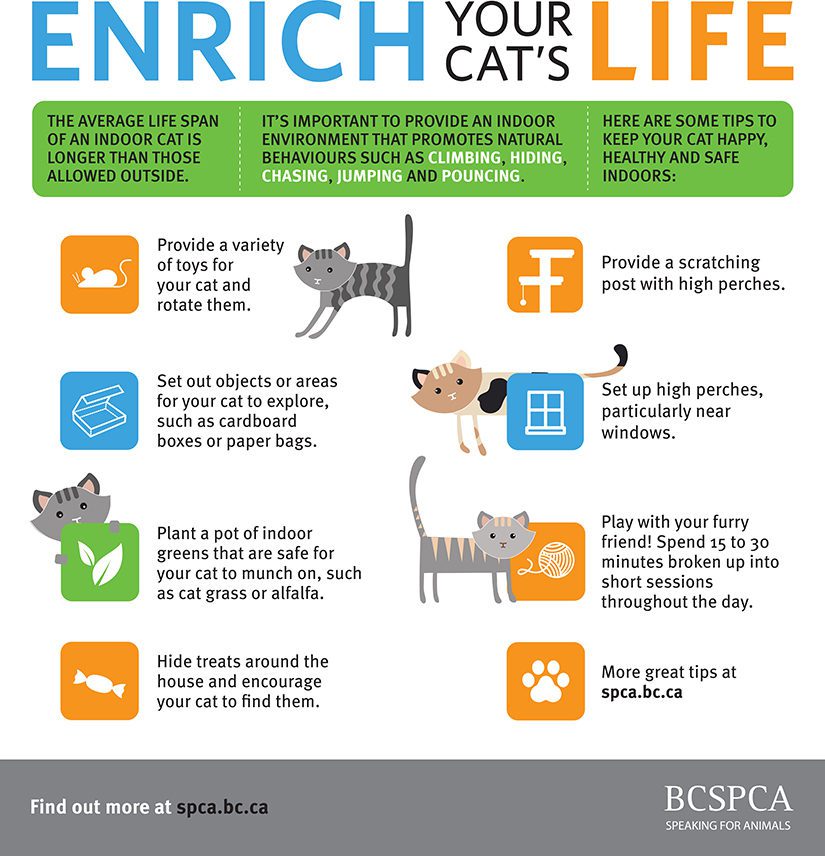
Allowing a female cat or dog to produce a litter does not have any benefits to the animal. Animals who go through heat cycles and pregnancy are at higher risk for uterine and mammary problems, including mammary cancer, which can be fatal.
There are health risks to the mother during the pregnancy and when giving birth. Proper pre-natal care, emergency care for birth complications, and proper newborn care are expensive and time-consuming.
Learn more about the benefits of spaying and neutering your pet.

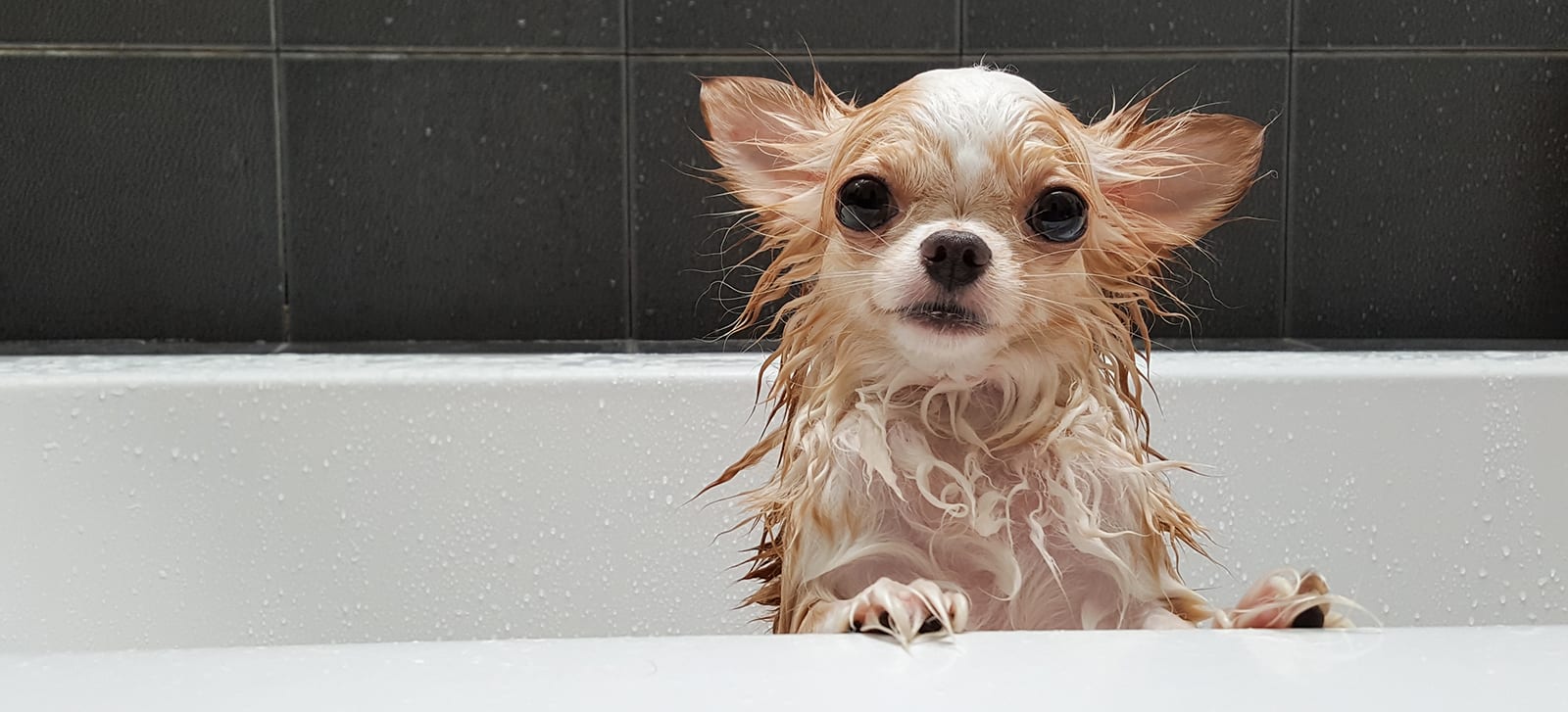
It is pretty common for a dog to get skunked – they’re curious creatures and that can lead to a spritz or a full-on soaking of an intense, foul-smelling spray from the skunk.
How to remove skunk smell:
- 1 litre of 3 per cent hydrogen peroxide
- ¼ cup baking soda
- 1 tsp liquid dish soap, such as Dawn
Combine ingredients and shampoo your pet. Rinse with water and repeat if necessary.
Skunk spray is often centred around the facial area. Avoid your pet’s eyes when using the solution on the face. If any product does get into your pet’s eyes, it’s important to rinse the area very well.
In future, be proactive
Skunks are nocturnal animals with poor eyesight and limited climbing skills. They only use their spray as a last resort when startled, cornered, or attacked. If you see a skunk, back away slowly and quietly to avoid a spray. Keep your dog on a leash when you’re out walking in low light.
Learn more about coexisting with skunks.

Dogs form strong bonds with animals and people with whom they live. Most dogs can cope with separation from family members for a few hours. Some feel anxious, stressed, even panicked when left even for a few minutes.
Signs your dog may be suffering from separation anxiety
- Anxiety when you start to get ready to leave (panting, hiding, trembling, don’t want to eat)
- Damage to your front door, back door or windows (door you leave from)
- Injure themselves (bleeding paws, broken teeth, bleeding from mouth)
- Refuses to eat when you’re not home, even high value treats (eats them when you come home)

See your veterinarian if you suspect your dog is suffering from separation anxiety
Never punish your dog when she is anxious. She is not destroying things on purpose. Separation anxiety is a type of illness that is highly treatable with a combination of medication and behaviour modification (behaviour therapy). Your veterinarian can help determine whether your dog has separation anxiety or another condition.
Training options
- Take your dog to work if possible
- Walk him frequently and have water available in a spill-proof bowl
- Leave him with a sitter or at doggie daycare
- Have someone stay at home with the dog
Learn more about how you can deal with Separation anxiety – Preventing and reducing dog anxiety when alone (PDF).
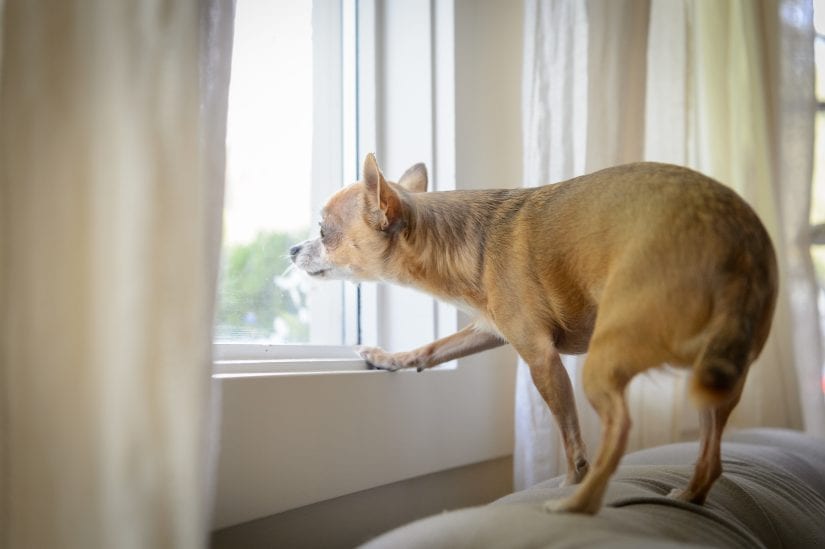
Puppies need patience, time and supervision. Start with planning what you will need and what your pup will need when they come home.
Supplies
- Food
- Harness, collar and ID tag, and leash
- Toys – chew toys, fun toys and feeding toys
- Bed
- Crate
Puppy proof your home so your puppy doesn’t get into things it shouldn’t.
Plan where you want your pup to go to the bathroom and give them treats when they go in that spot.
Crate training is an easy way to help housetrain your pup and prevent him from getting into things.
When you bring pup home, start handling and giving him treats after so he learns handling is a good thing.
How do I socialize my puppy?
Don’t forget, if your puppy is under 12 weeks he’s at an important time in his life. Socialize him now and give him good experiences so he learns the world is a fun and safe place.
Check out BC SPCA AnimalKind resources for puppy guardians
- Learn about socialization and training appropriate chewing.
- Get the answers to the when, how and why of puppy training.
- Follow the step-by-step guide for new dog guardians.
- Know how to find the best dog trainer.
If you are adopting your cat, dog or rabbit from the BC SPCA, spay/neuter is included in the adoption fee.
For other animals, the cost of spaying or neutering your pet depends on many factors and will vary according to each pet’s circumstances and needs. For example, a large dog will cost more than a small dog. If your pet is overweight or in heat this can also add to the cost. Contact your veterinarian to get a more accurate idea of the costs involved for your pet.
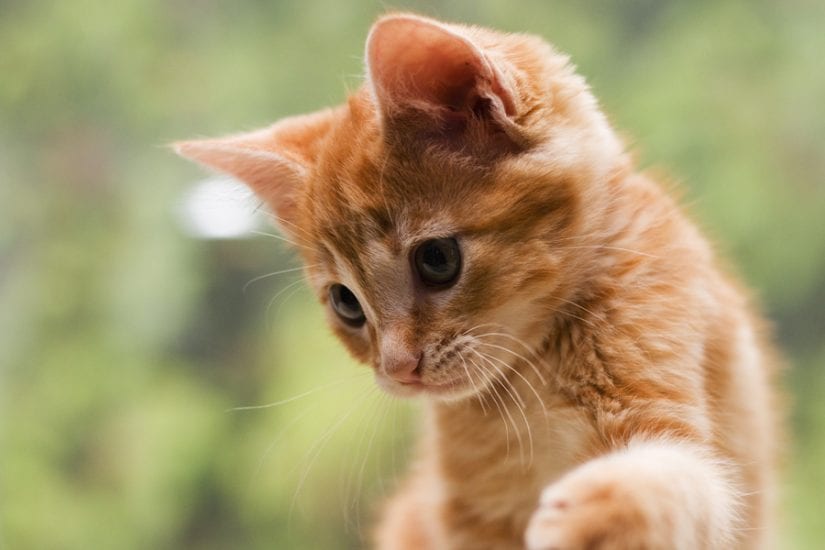
The cost of spaying/neutering is small when compared to other costs of pet care, such as what you will spend on food for your pet over their lifetime.
Consider the possible costs if you do not spay or neuter. If your pet should wander off in search of a mate, you may be faced with paying fines and impoundment fees. You may also be faced with the additional costs of caring for puppies or kittens for whom finding homes may be difficult. Worse yet, think of the costs should your pet be injured while roaming for a mate.
Spaying or neutering is a one-time investment with life-long health and welfare benefits for your companion.
If you require financial assistance, learn about low-cost spay/neuter programs in B.C.
Fostering an animal means you take a BC SPCA animal into your home and temporarily care for them for us. While they’re in your home, we provide you with food, supplies and medical care. Foster families help animals recover from illness/ injuries, get ready for adoption, and provide them with socialization and love.
If you are unsure about adopting an animal, or unable to make the commitment at this time, fostering can be a great way to bring animals into your life. You can also multiply your impact by caring for many animals during your time as an animal foster.
While fostering is temporary, many foster families fall in love with animals in their care. If an animal is available to be adopted, fosters can apply to be their forever home. In the case of emergency boarding, fosters feel proud of providing a safe temporary home for animals before they are reunited with their family.
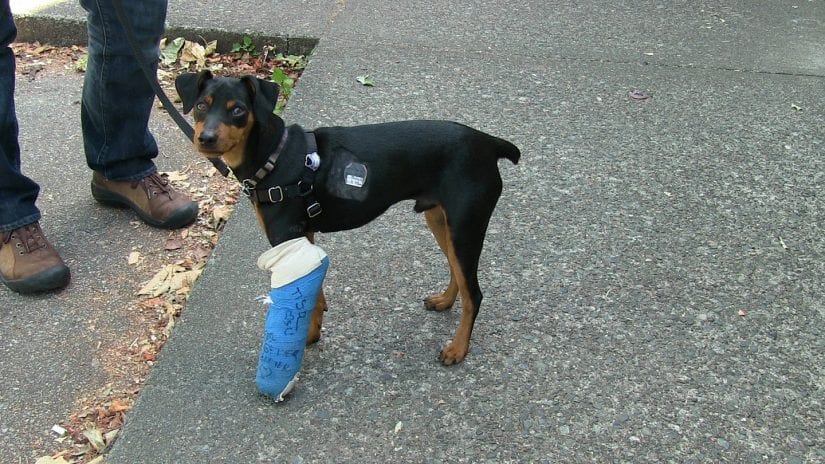
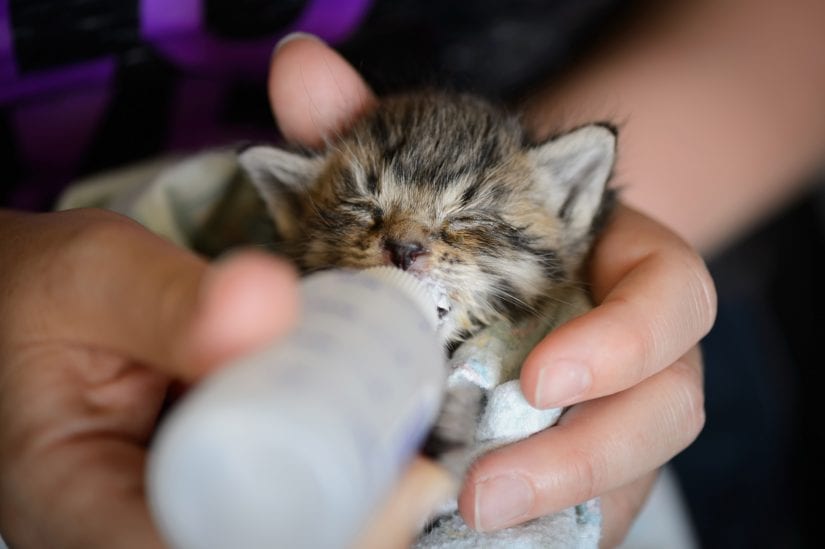
“Spaying” and “neutering” are surgical procedures used to prevent pets from reproducing. In a female animal, “spaying” consists of removing the ovaries or uterus and ovaries. The technical term is ovariectomy or ovariohysterectomy. For a male animal, “neutering” involves the removal of the testicles, and this is known as castration.
In addition to preventing unwanted offspring, spaying or neutering has many health and behavioural benefits to the animal.

To help cats cope with the stress of being at an animal centre, the BC SPCA developed the Hide, Perch & Go™ box. The box provides cats with more control over their limited environment and allows them to express behaviours such as hiding, perching and face rubbing (scent marking). All of these are natural cat behaviours that help reduce stress.
The Hide, Perch & Go™ box is included with the adoption of your new feline friend! Learn more.

What is the rabies virus?
Rabies is a viral disease of warm-blooded animals that can be transmitted to humans. It is caused by a virus of the Rhabdoviridae family, which attacks the central nervous system and eventually affects the brain. Rabies is almost always fatal in animals and people once symptoms occur.
How is rabies transmitted between animals and humans?
The virus is transmitted through close contact with the saliva of infected animals, most often by a bite or scratch. It can also be transmitted by licks on broken skin or mucous membranes, such as those in the eyes, nasal cavity or mouth. In very rare cases, person-to-person transmission has occurred when saliva droplets became aerial. Bat bites can inflict small wounds and go unnoticed.
Who is at risk of being infected by rabies?
Bats are the only known wild carrier of rabies in B.C. Like cats and dogs, raccoons, coyotes, skunks, farm animals, and any other mammals are capable of contracting the rabies virus, but are not considered carriers in B.C.
In other provinces like Ontario, raccoons, coyotes, skunks and foxes are wild carriers of rabies. In B.C., however, the only carrier of rabies is bats; no raccoons or skunks in B.C. have ever transmitted rabies.
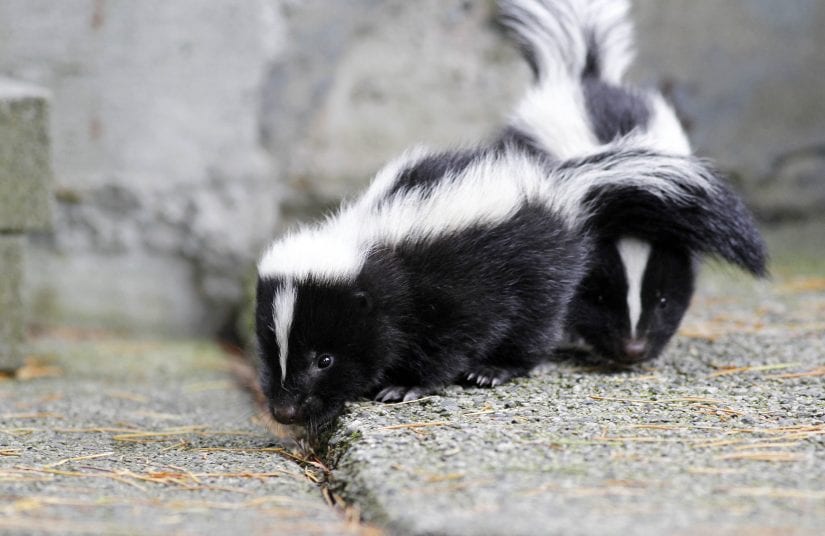
How common is rabies in bats in B.C.?
It is estimated that one per cent of bats in the wild in B.C. carry rabies. In June 2004, four skunks in Stanley Park in Vancouver tested positive for the rabies virus. However, it was discovered that they all carried the bat strain of rabies; likely they had all been in contact with a rabid bat.
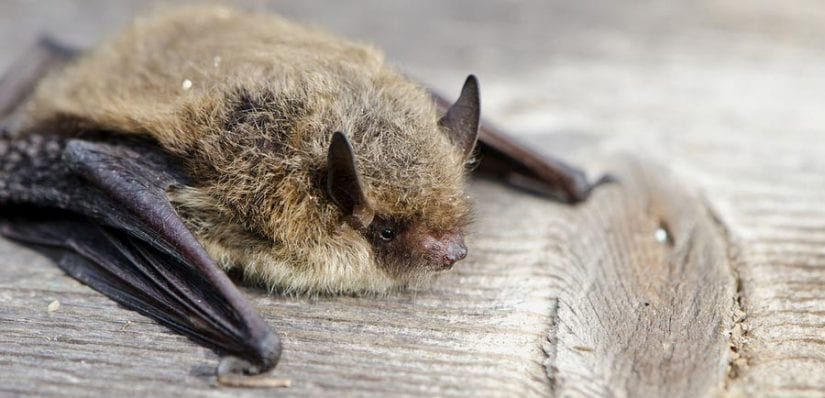
Cases of human rabies infection in Canada
In the past 25 years, five people in Canada have died of rabies infection: one in Quebec (2000), one in Alberta (2007), one in Ontario (2012) and two in British Columbia (2003 and 2019). In the Ontario case, rabies exposure occurred outside the country. These were the first cases of human rabies in Canada since 1985.
The most likely source of infection for both B.C. individuals was unrecognized bat exposure. Without wound cleansing or post-exposure vaccinations, the potential incidence of rabies in exposed humans can be very high.
Does my pet need a rabies vaccine?
Dogs and cats account for fewer than five per cent of all animal rabies cases in Canada. However, rabies presents a serious public health risk, and even indoor pets could come in contact with a bat. Some pets also need the vaccine for travel. Ask your vet whether your pet should be vaccinated.
What if my pet brings a bat home?
If your pet brings home a bat, you should take your pet to a veterinarian. If the bat is available, your vet may send it for rabies testing. Additionally, your vet may vaccinate your pet against rabies and/or ask you to keep your pet in your home for several months to see if they develop signs of rabies.
If any person in your household has touched a bat with bare skin, seek medical attention from a doctor or local public health unit immediately.
What will happen to the bat?
The bat may be euthanized and sent for testing. As of April 1, 2014, CFIA veterinary inspectors are no longer involved in species collection activities. However, the CFIA continues to perform and cover the cost for rabies laboratory testing involving domestic and wild animals and humans. This is vital as once the symptoms of rabies (flu-like including fever, headache and fatigue, progressing to gastrointestinal and central nervous system problems) start to appear, there is no treatment and the disease is almost always fatal. However, wound cleansing and immunizations, done as soon as possible after suspected contact with an animal, can prevent the onset of rabies in virtually 100 per cent of exposures.
What to do if there has been contact with a bat
Bat-to-person contact?
If treatment is given promptly after being exposed to (any bare skin contact) or bitten by a bat, the illness may be prevented by taking the following actions:
- Immediately wash the wound or exposed surface with soap and water for 10 minutes and cover the area with a clean bandage.
- Remove any clothing that may have been contaminated.
- Immediately call your doctor and local health authority for advice.
Bat-to-pet contact?
Please contact your veterinarian to have your pet vaccinated and discuss whether a period of isolation/observation is required for your pet. If the bat is available, your veterinarian may send it for rabies testing.
Found an injured bat?
No matter how injured, a bat should never be touched with bare hands. Please refrain from nudging or picking the bat up.
Injured bats can be rehabilitated by professionals able to take the necessary precautions against rabies transmission. Contact your local wildlife rehabilitator or call the BC SPCA Animal Helpline at 1-855-622-7722 for advice on safely containing bats.
Resource guarding is when dogs feel they have to guard their food, toys and other things from people or dogs. It’s an innate feeling that they have to guard something, as if like their life depended on it.
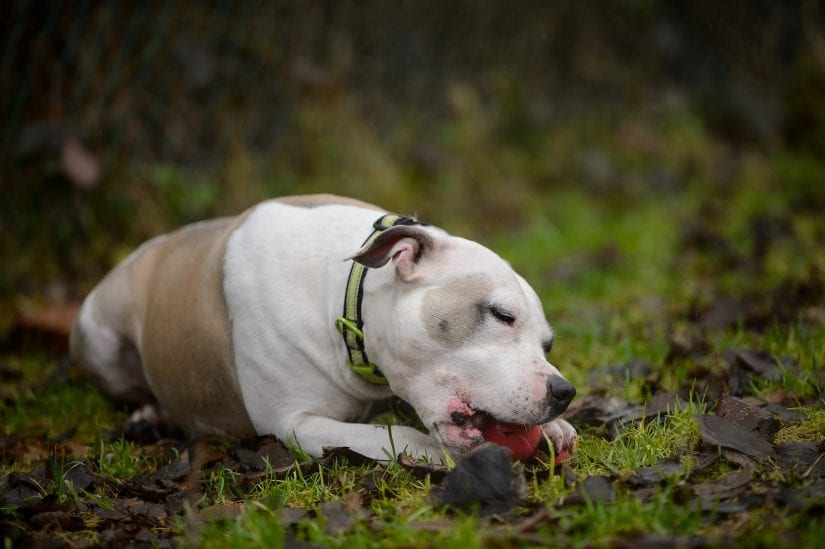
You can help prevent resource guarding from becoming a bad habit for your dog by teaching them when they’re puppies that it’s fantastic to have things taken from them.
Learn more about resource guarding, watch our video:
Looking for more information on why a dog might be aggressive? Download our Aggression to people – Reducing and managing dog aggression towards people (PDF) guide.
Building a relationship of trust with your small pets is essential. We often like to pick them up and cuddle them, but it’s important to remember that small pets are prey animals. This means they’re hunted by others for food and the only time they’re lifted off the ground is when they’re in the grip of a predator. So it’s normal and natural for them to be scared of being picked up at first.
Respecting them will help you gain their trust so you can handle and pet them.
Learn more small animal handling tips.
For more information on caring for small pets, check out our care guides:
What is toxoplasmosis?
Toxoplasmosis is an infection caused by a tiny parasite, Toxoplasma gondii. It can infect both cats and people, but most healthy animals and people won’t get sick because their immune systems will protect them.
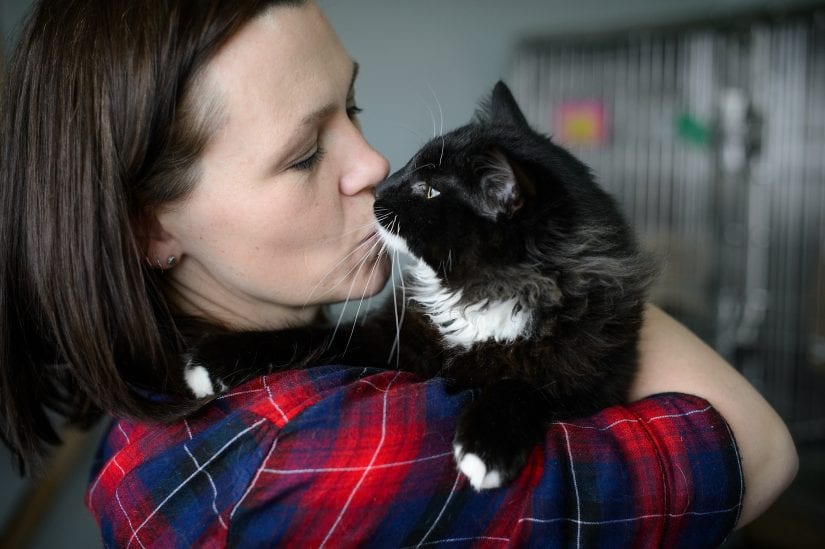
How toxoplasmosis is transmitted to humans
Most people who get toxoplasmosis get it from eating undercooked meat or unwashed produce. Because cats only shed the parasite for the first few days after becoming infected, infection from cats is rare.
- Handling and/or eating raw or undercooked food
- Handling and/or eating unwashed fruits and vegetables
- Drinking unpasteurized milk
- Eating or drinking from contaminated sources
- Being exposed to cat feces from their litter box
- Being exposed to gardens or sandboxes that may have cat feces in them
Toxoplasmosis and pregnancy
Pregnant women and people with compromised immune systems are more at risk for infection. If a pregnant woman becomes infected, her baby may have health problems.
Can pregnant women be around cats?
Yes, pregnant women can be around their cats, though there are some precautions to take:
- Do not change your cat’s litter. If you have to change the cat’s litter yourself, make sure you wear gloves and thoroughly wash your hands after
- Do not interact with any unknown cats
- Keep your cat inside
- Don’t feed any raw or undercooked meat to your cat

Still concerned about your pet and your baby?
- If you have more questions or concerns about toxoplasmosis and your baby’s health, please talk to your doctor.
- If you are concerned about toxoplasmosis and your pet’s health, please talk to your veterinarian.
Dogs are social animals who like being around people and, in many cases, other dogs. If they live outdoors this often means they live in isolation.
Dogs left outdoors must have an outdoor kennel that is weather and draft proof.
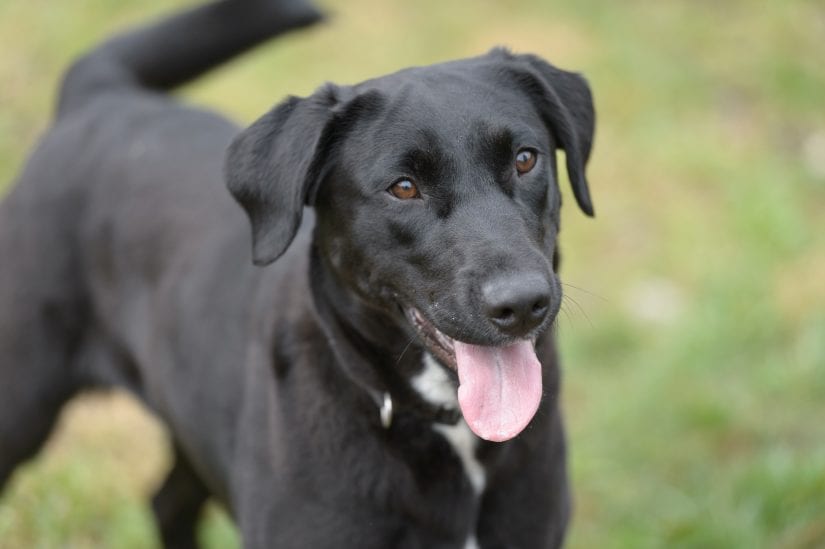
Kennel must be:
- Elevated
- Insulated – both walls and flooring
- Lined with lots of dry bedding (use straw versus hay; straw is dried out and hollow while hay is moist and will mold)
- Checked regularly to make sure bedding is dry
- Have an entrance that protects the dog from wind, rain and snow
- Fresh water in a spill-proof bowl must always be available. If the weather hits sub-zero temperatures, you should purchase a heated water bowl.
A social species, even outdoor dogs need to get daily exercise, play and time with people.
Learn how to transition a dog living outdoors to living inside.
Nobody plans to lose a pet. Prepare for the unexpected by following these steps to provide your pet with identification.
Provide two forms of identification
- A collar and tag: Keep a collar and tag on your pet with your home phone number and address.
- A form of permanent ID (microchip or tattoo): Pets can slip their collars at any time, but they can’t slip a permanent ID. Make an appointment with your vet to get your pet a microchip or tattoo today.
Register your pet’s permanent ID
Register your pet with the BC Pet Registry, B.C.’s first provincial pet ID database, owned and operated by the BC SPCA.
Registration guarantees that your pet can be traced by all participating veterinarians and animal care centres province-wide.
Remember: Permanent ID has little value unless it is registered. Give your pet the protection of registered pet ID today.
Learn more about the BC Pet Registry and how to plan ahead for peace of mind.
Keep your contact information up-to-date
Have you moved or changed your phone number? Don’t forget to update your pet’s ID! Contact your veterinarian with your new information so they can update their records.
Is your pet’s ID registered with the BC Pet Registry? Updating is easy! Log in any time to update your contact information.

Licensing your pet
In most municipalities, a license for your dog is required by law. Call your local city/municipality to update the records on file or to get more information on licensing.

Puppies and kittens should start their vaccines at six to eight weeks of age. Your puppy or kitten will need a series of vaccines before they are four months old. Schedules for adult animals may vary depending on lifestyle and vaccines needed.
Rescue animals may require more frequent vaccines while they are in the care of an animal centre due to a high risk of exposure to disease.
Talk to your veterinarian about when to vaccinate your animal.
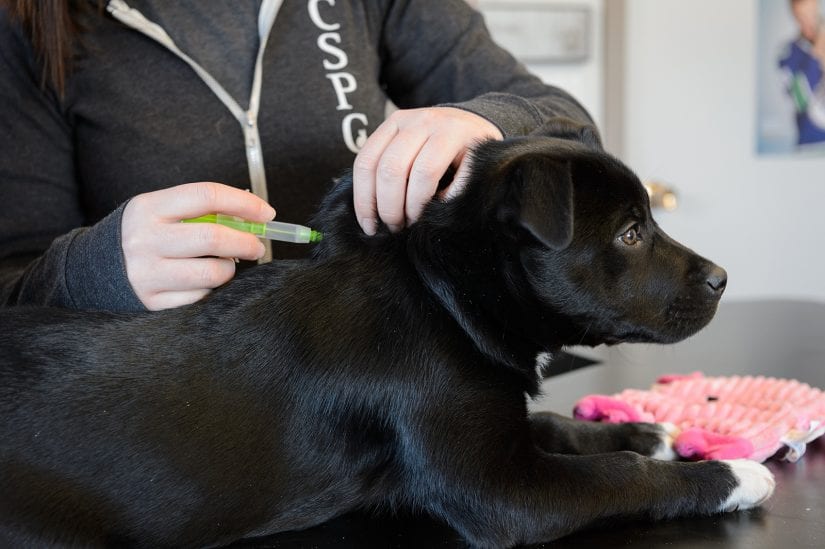
Most unintentional litters (particularly with cats) occur because guardians waited too long to have the surgery done. The usual recommendation is before six months of age for cats, and before six and a half months for dogs. Consult your veterinarian to determine the best time for your pet. Female cats and dogs do not have to have a litter before being fixed.
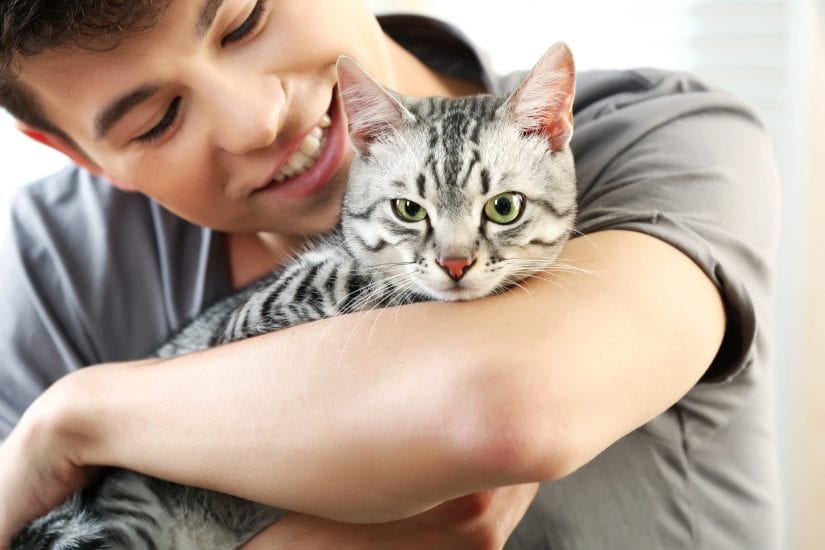
The BC SPCA supports early age spay/neuter procedures for dogs and cats. Pediatric sterilization prevents excess litters by ensuring animals are sterilized before adoption. This helps combat pet overpopulation and euthanasia of unwanted animals. All major professional, academic, and animal welfare organizations in North America support pediatric spay/neuter for shelter animals.
The BC SPCA will continue to promote other methods of combating pet overpopulation, including education and public awareness campaigns, non-surgical methods of sterilization, traditional spay/neuter initiatives and behaviour training.
The BC SPCA believes pediatric spay/neuter to be appropriate with the following qualifications:
- The procedure takes place between 8 and 16 weeks of age
- The animal is judged to be clinically normal and healthy prior to surgery
- Proper surgical protocols specific to these young animals are employed
- Post-surgery complications receive special attention
Is my dog jealous?
We know dogs do what works, which means they learn how best to get your attention, like jumping, for example. If your dog is doing this when there is a baby around, maybe she has learned to jump up to get your attention. This isn’t jealousy, however it does mean you need to do some training with your dog.
Caution when you think a dog is being jealous
Don’t assume that what looks like jealousy, is truly jealousy. Many dogs are not comfortable around babies and may be scared of them. If your dog seems scared, don’t force her to interact with the baby.
Reasons dogs might be nervous around babies
- Never smelled, heard or seen a baby before
- Scared by a baby crying
- Resource guarding – guarding objects they feel are valuable
Some dogs will guard things they feel are “valuable” objects. A valuable object to some dogs can be anything from a kleenex, to a sock, toy or bone. If your dog does this, be extra careful. Never allow your baby (or any child or other animal) to approach the dog when she has their valuable item.
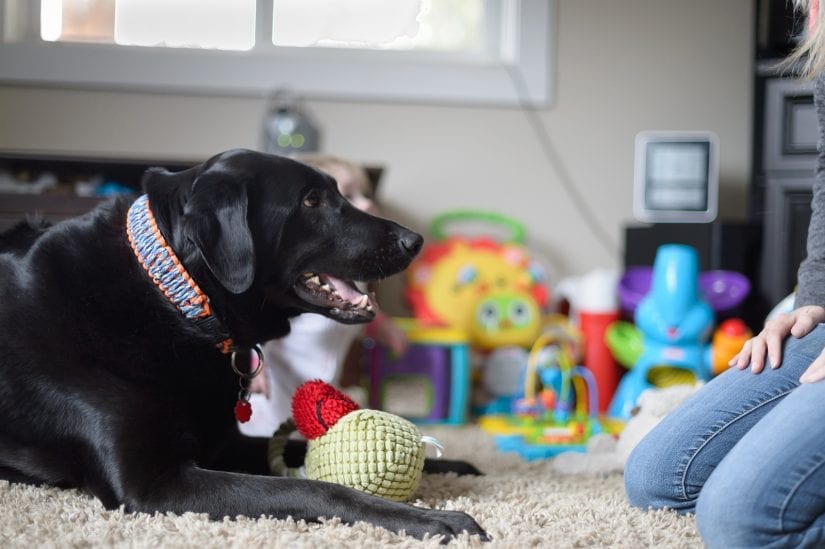
Never punish your dog
If your dog is reacting aggressively to babies, children or other dogs, you should never use verbal or physically harsh punishment. If she is doing things like growling, snarling or even snapping, she’s giving signals. She’s telling you that she isn’t comfortable. You have to listen and never punish her for her behaviour.
Seek professional help – a veterinarian, applied behaviourist or reward-based trainer experienced with dog aggression. Did you know the BC SPCA has standards for humane dog training (PDF)? We can help you find a good dog trainer through our AnimalKind program.
Tips for keeping baby and dog happy together
- Before bringing baby home, help your dog get used to the sounds and smells of babies.
- Do basic training with the dog. Teach her do things like leave it, go out of a room, settle, etc.
- Set up your home with gates and a safe place (such as a crate, bed, or room) for the dog to retreat to.
- Use praise and treats to help the dog associate the baby with good things.
- Don’t reward attention-seeking behaviour like barking, jumping and begging.
- Include the dog in walks and playtime with baby.
- Let the dog get used to the baby gradually and at her own pace. Never force them to interact.
- Never leave your dog and baby alone together, even if your dog is small.
- Pay attention to what your dog is telling you. If your dog is afraid or acts aggressive, seek help from a professional.
When we do human things to dogs like petting them, we have to make it worth their while. Dogs aren’t born liking being touched and might not want to be pet by us.
If your dog used to like being petted and now doesn’t, she might be sore or have a medical problem. Check with your vet.
Learn more about how to approach a dog for petting so they learn to enjoy it, watch our video:
Dogs communicate with us through their behaviour. Peeing on your stuff may mean your dog is trying to tell you something. Dogs don’t do it because they’re mad!

Is your dog house trained?
If your dog is house trained and this is a new behaviour, get a vet exam as there may be a medical issue at play.
If your dog has always had accidents then it’s best to restart your house training. Learn how to house train your dog.
Urine marking
Some dogs will pee on things around your house or outside to communicate, find a partner or to let others know this is their home.
If your dog is urine marking, start by house training him again. Always make sure his bladder is empty before you leave him alone. Reward him for going outside. If he’s not neutered, ask your vet about whether this might help.
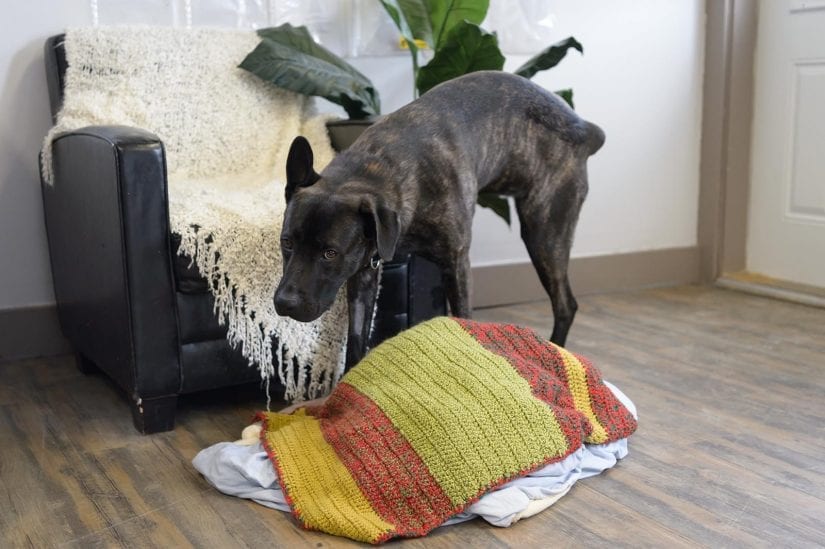
Does your dog have anxiety when you leave?
If you think your dog has separation anxiety, see your veterinarian for a diagnosis.
Signs your dog may be suffering from separation anxiety:
- Panting, hiding, trembling, lack of appetite when you get ready to leave
- Damage to your front door, back door or windows
- Self-injury (bleeding paws, broken teeth, bleeding from mouth)
- Refusal to eat when you’re not home, even high value treats (but eats them when you’re home)
- See your veterinarian if you suspect your dog is suffering from separation anxiety.

Vaccines protect your pet from getting diseases that are contagious and possibly fatal. Vaccinating your pet doesn’t just protect your pet, it also protects other pets in the community who may be too young or sick to be vaccinated. Vaccines also protect against some diseases that can be passed from pets to people.
All cats and dogs should receive vaccines. Your veterinarian can help determine which vaccines are necessary and the best schedule for vaccinating based on your pet’s lifestyle and age.
Talk to your veterinarian about vaccines for your pet.

No. Your pet will actually benefit from spaying or neutering, because he or she will lead a healthier and longer life. Pets become fat and lazy as a result of overeating and a lack of exercise, not from spaying or neutering. Furthermore, spaying a female eliminates the possibility of her developing uterine and/or ovarian cancer and greatly reduces the chance of breast cancer. Neutering a male eliminates the risk of testicular cancer.
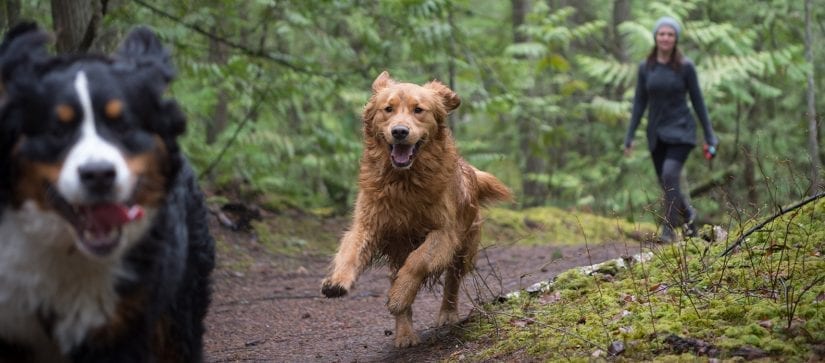
Generally, spaying or neutering your pet will not change its personality. If there are any effects on behaviour, they tend to be positive (reducing unwanted behaviour). Spaying or neutering will not change your pet’s affection level or playfulness.
For females, there is typically no change at all. For males, there may be a reduction in some aggressive and roaming behaviours. If you have more than one pet, you will find they often get along much better if they are all spayed or neutered.
Learn more about the benefits of spaying and neutering your pet.
